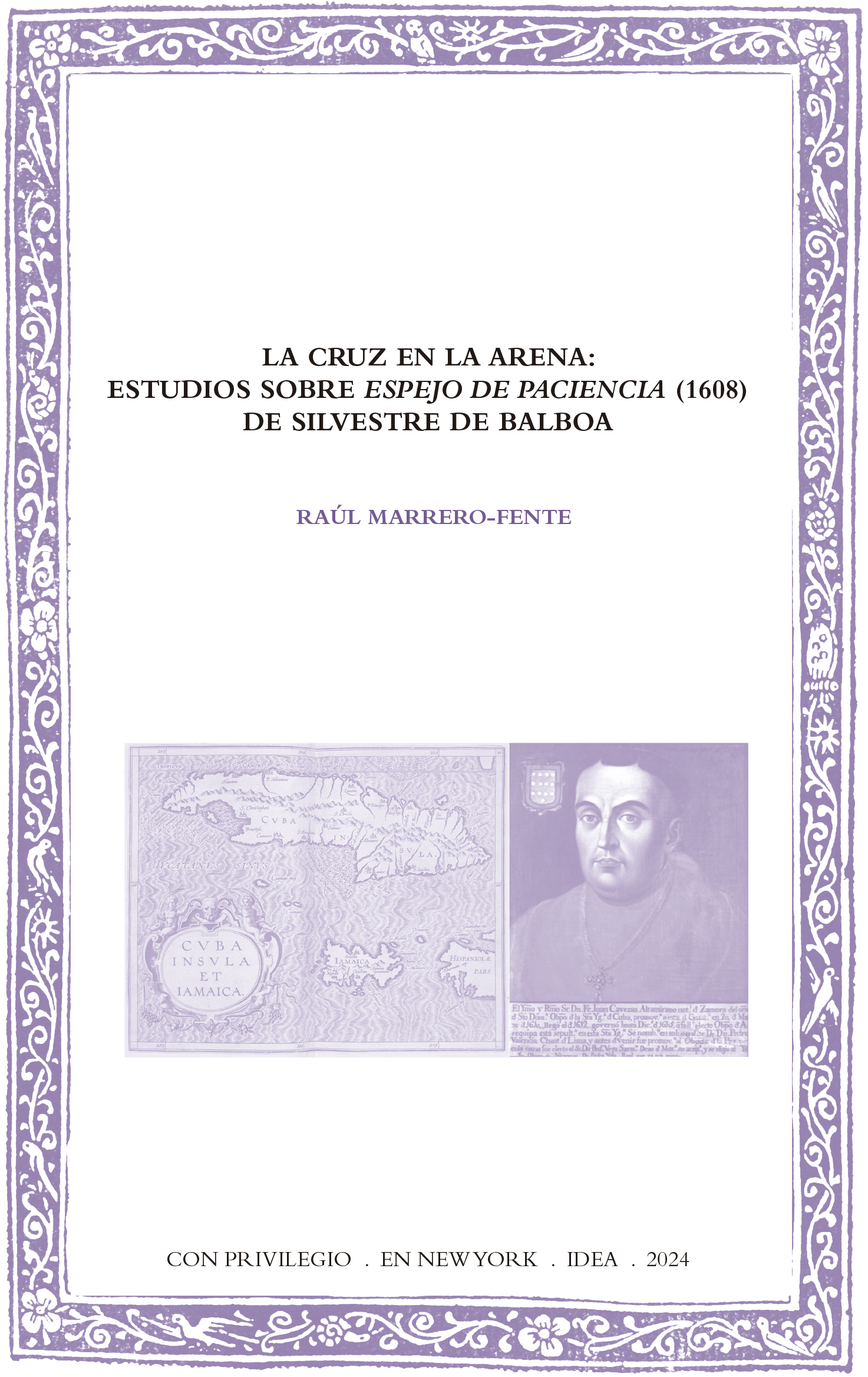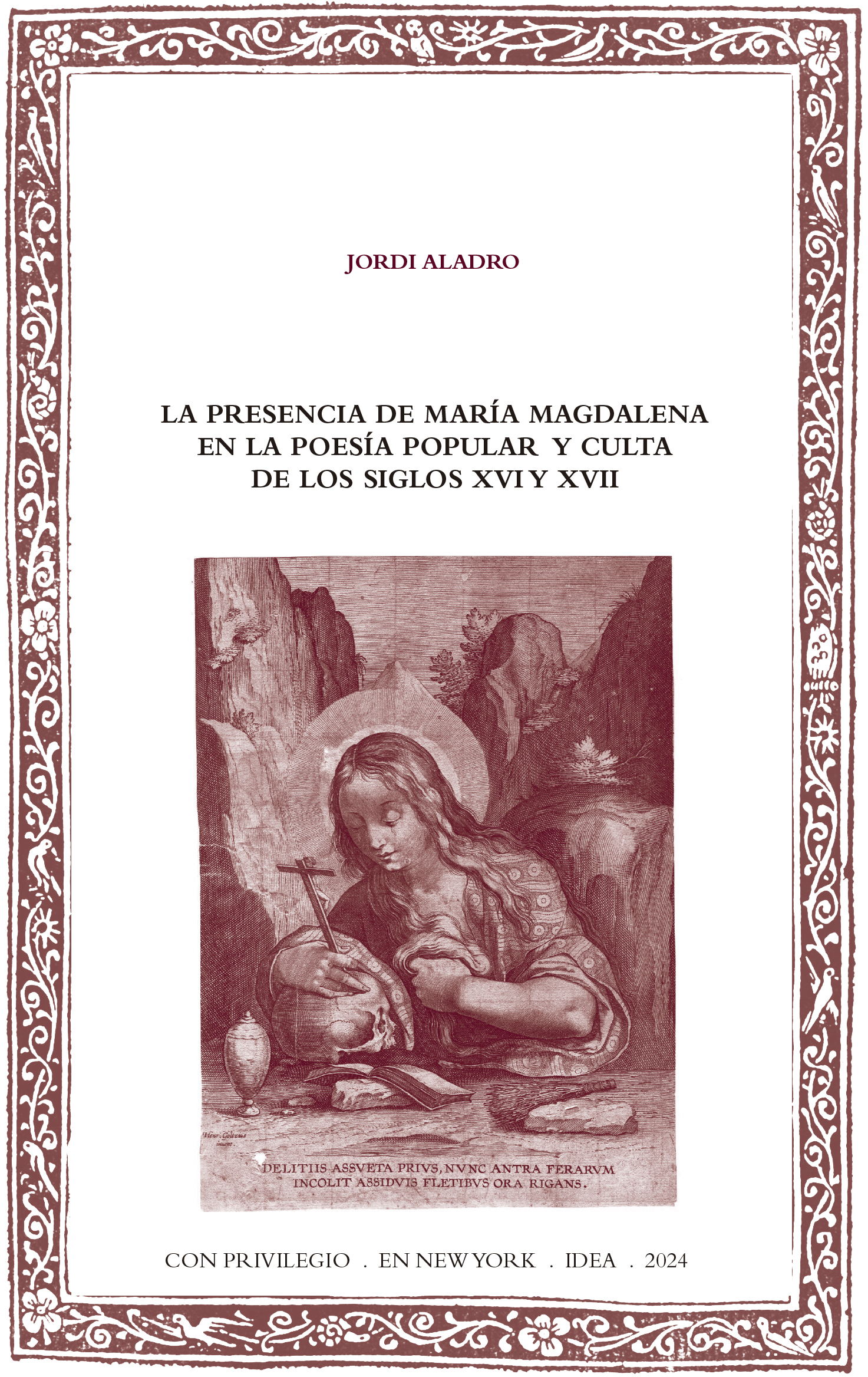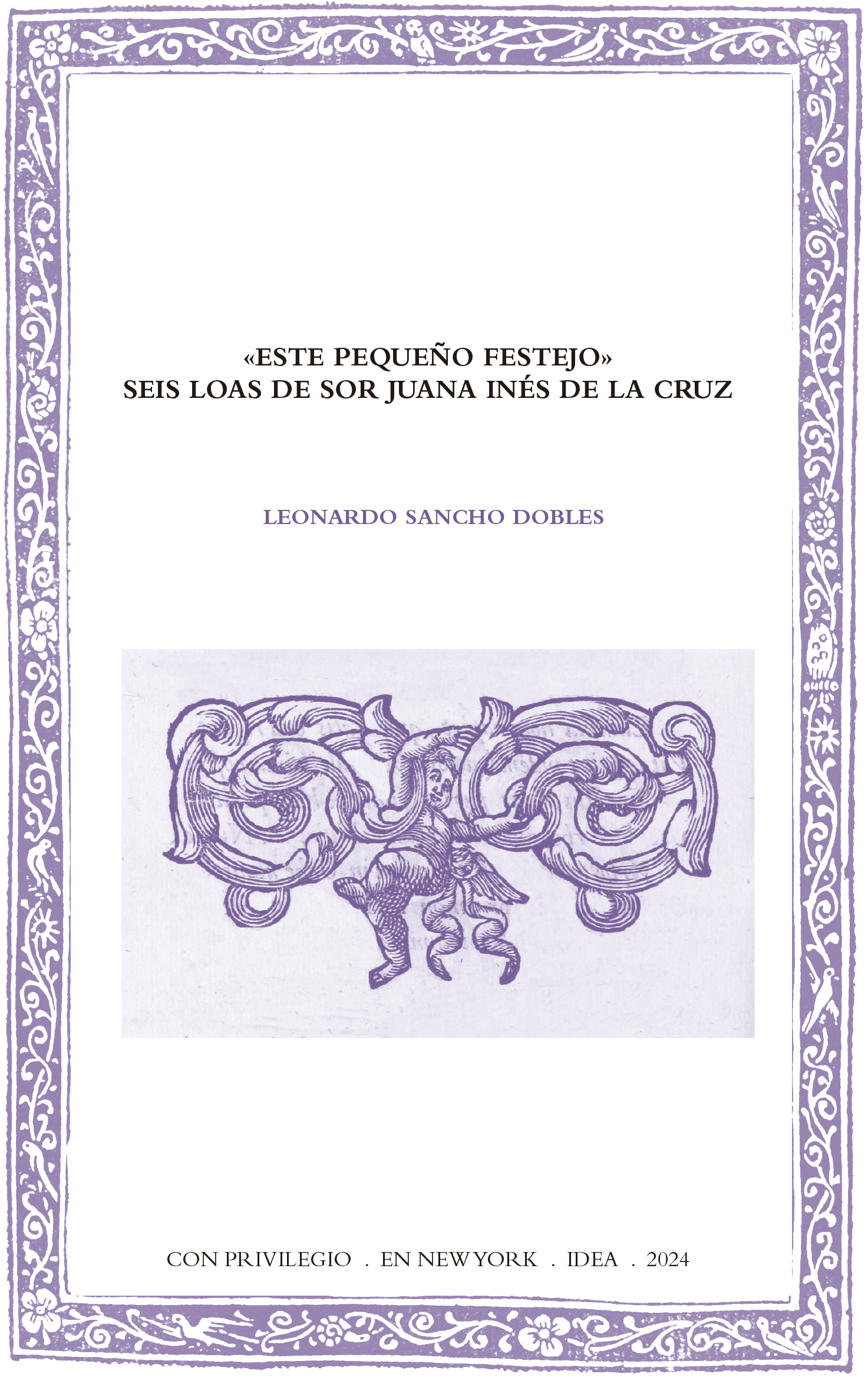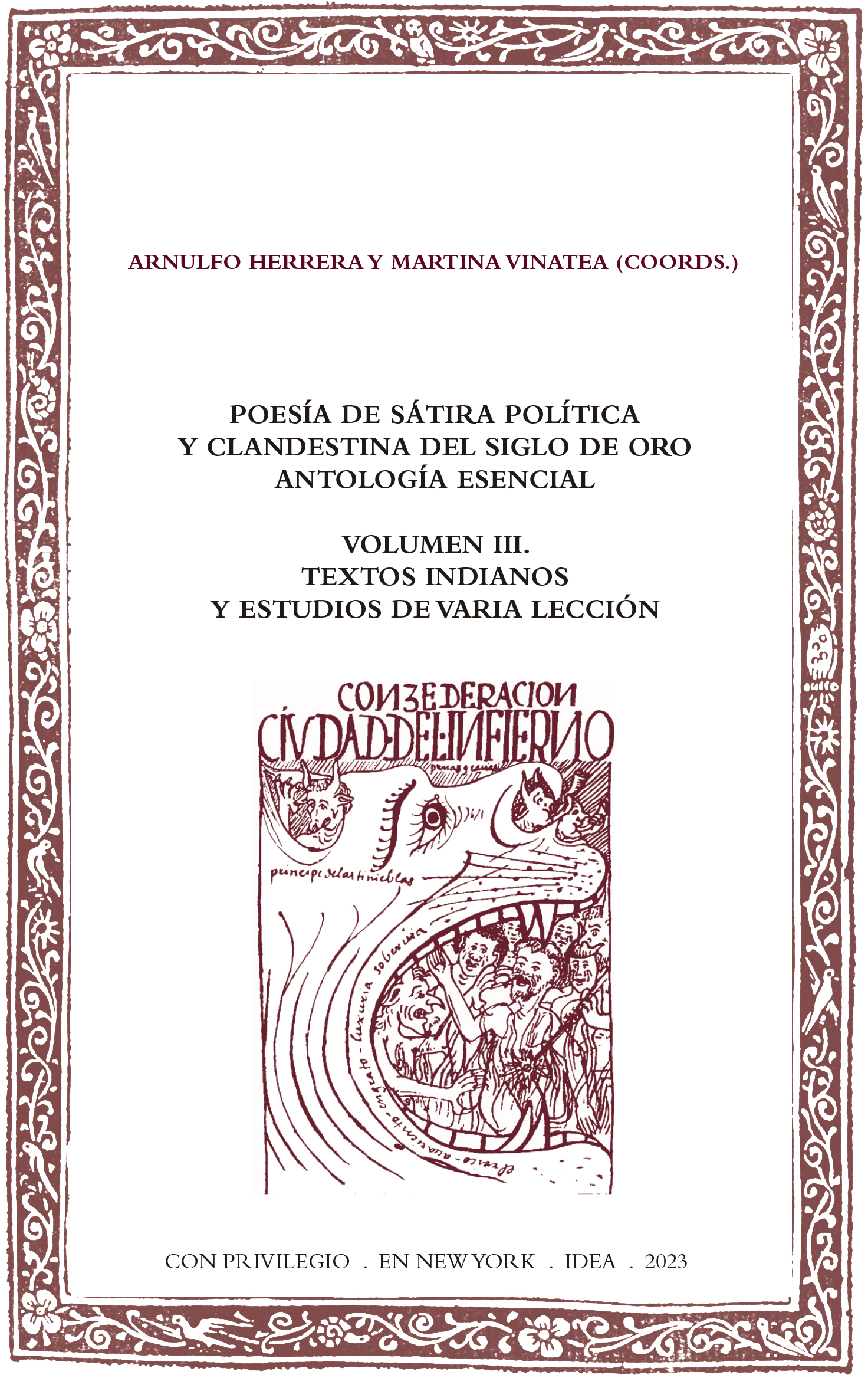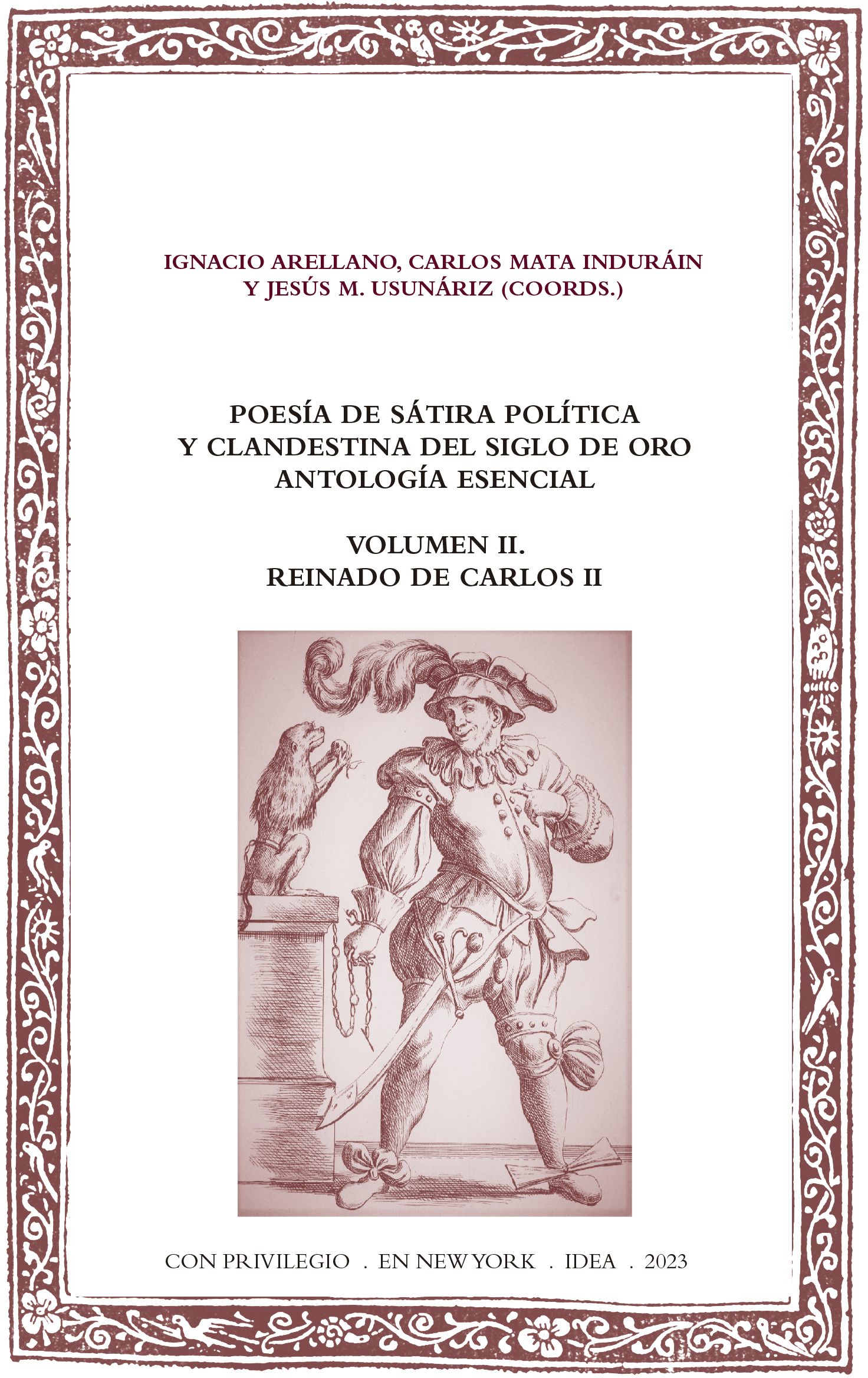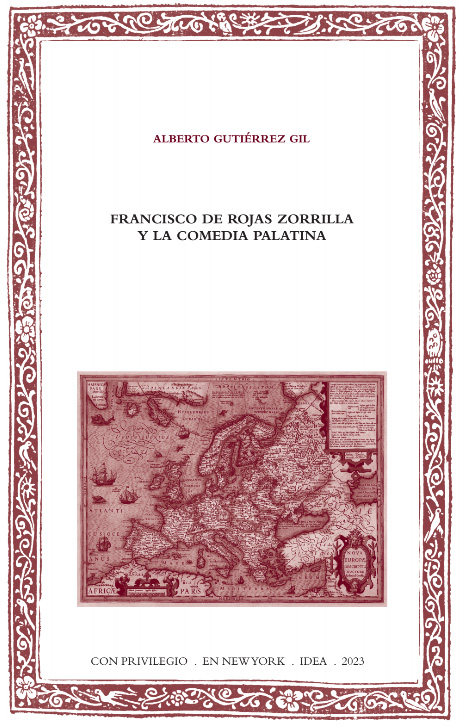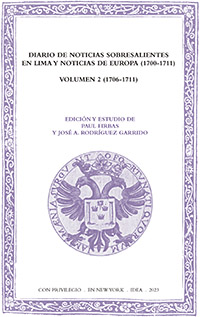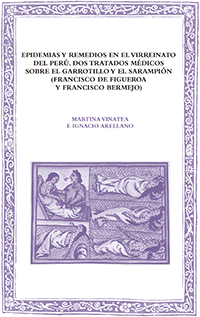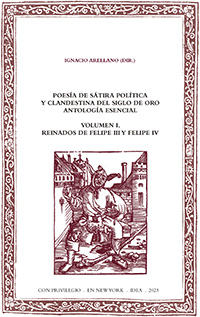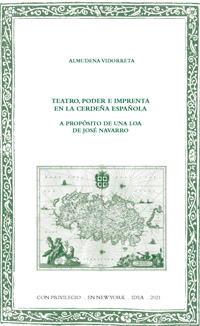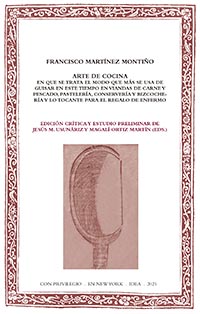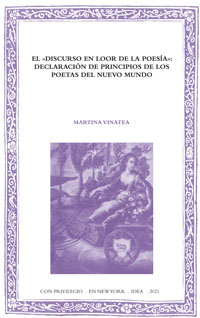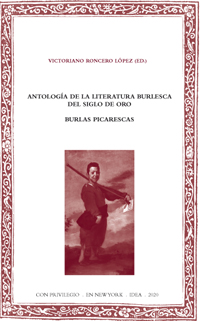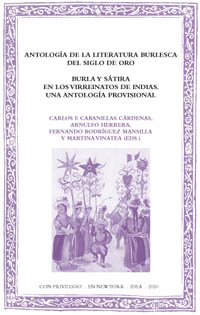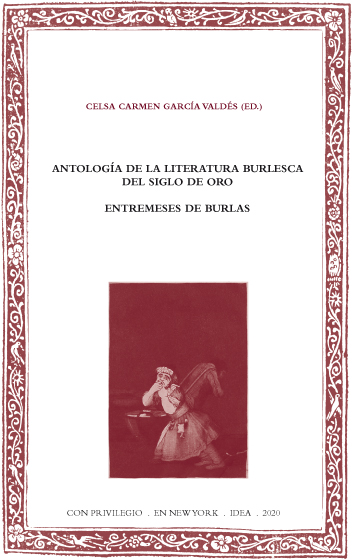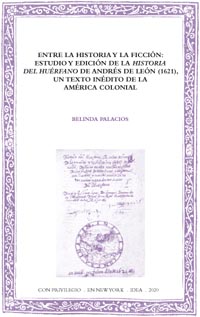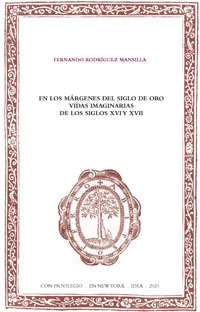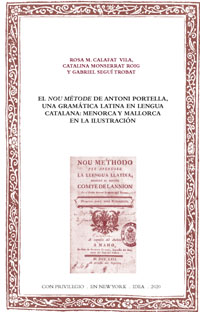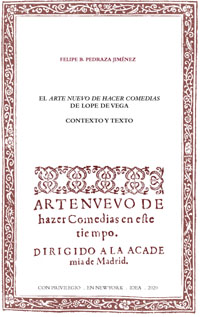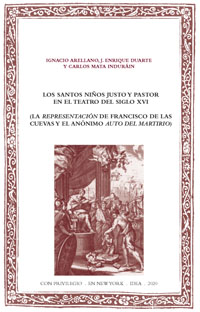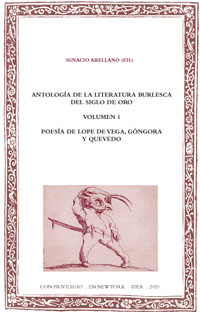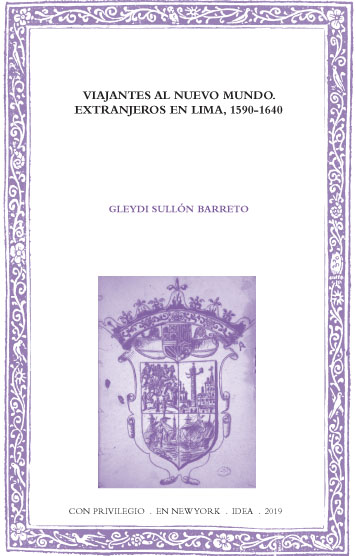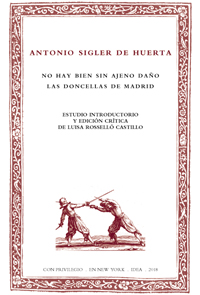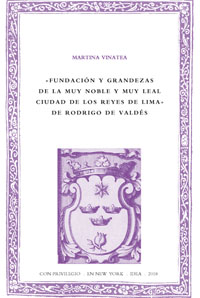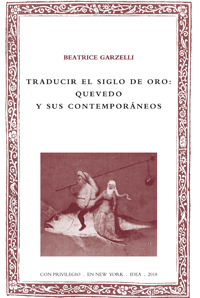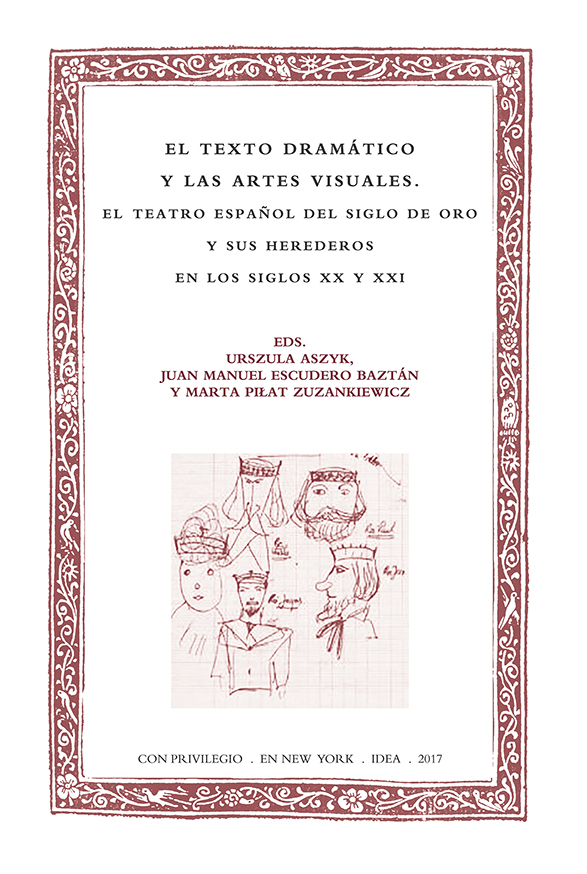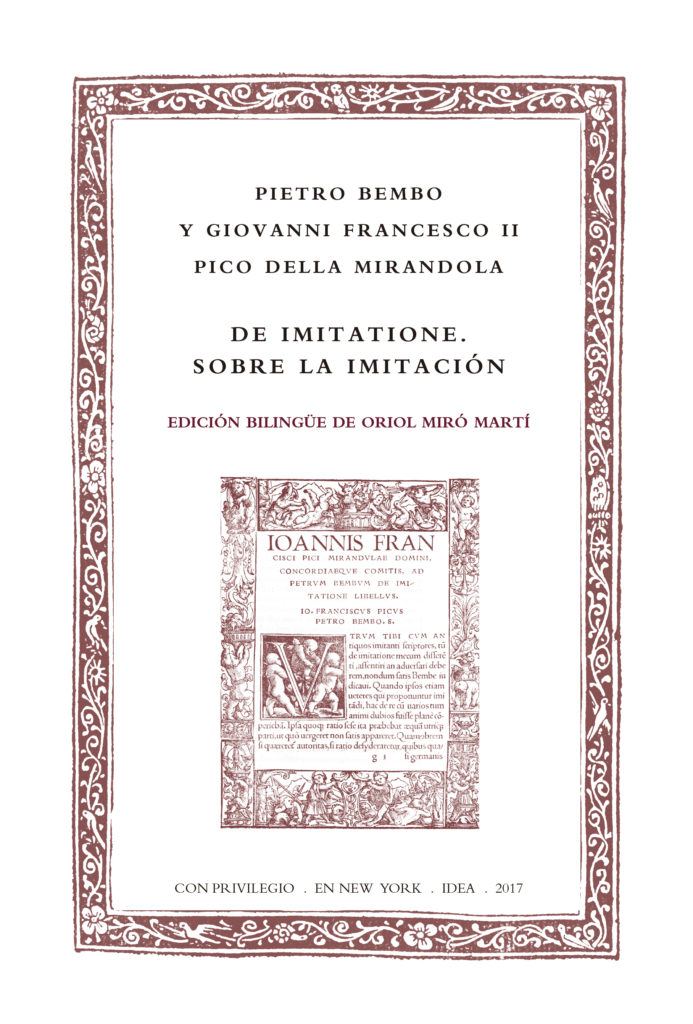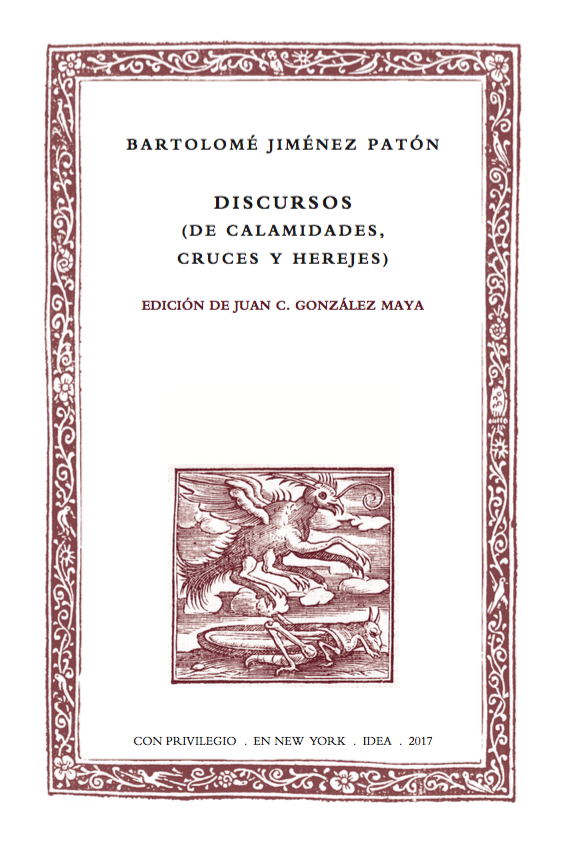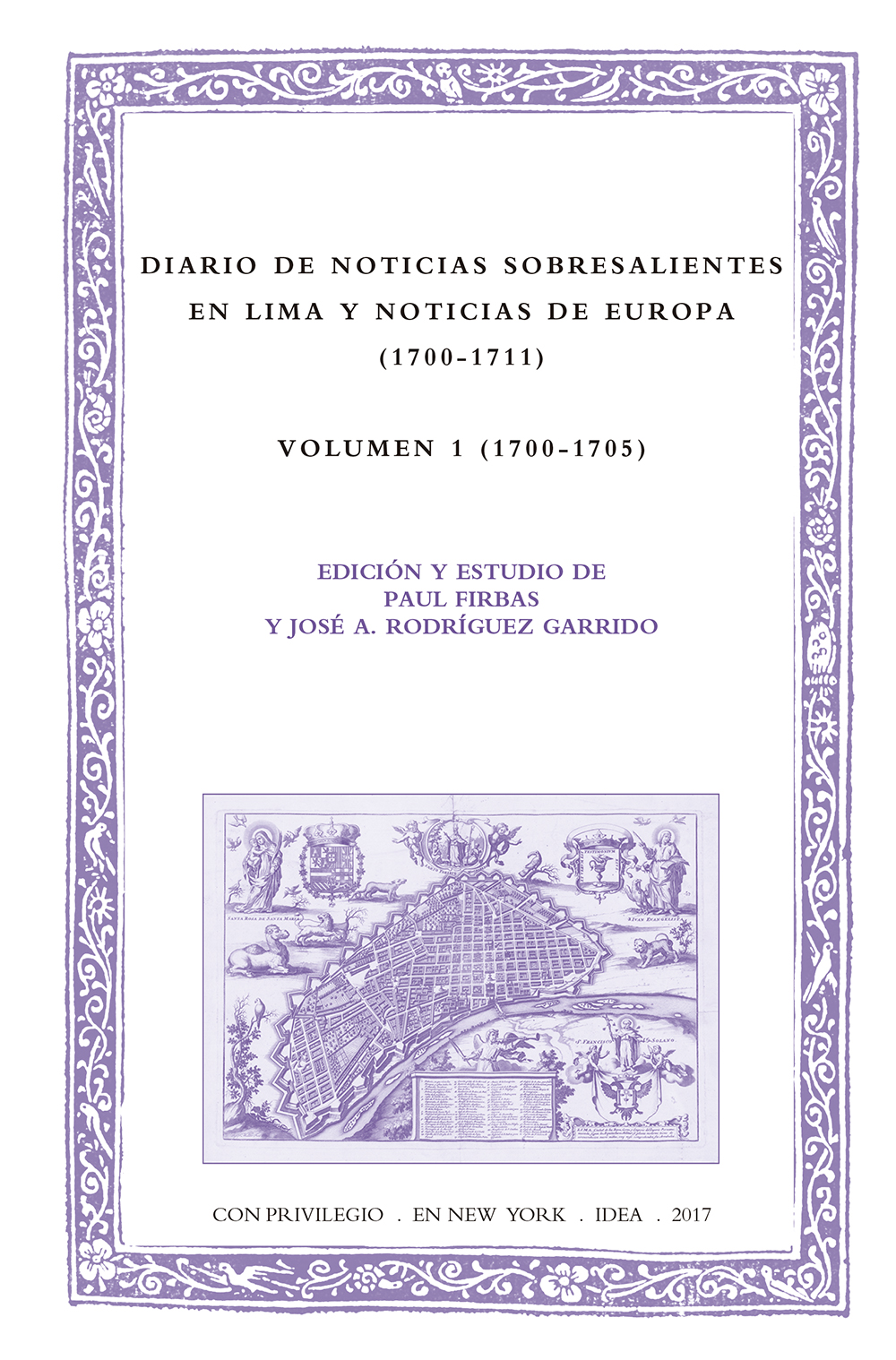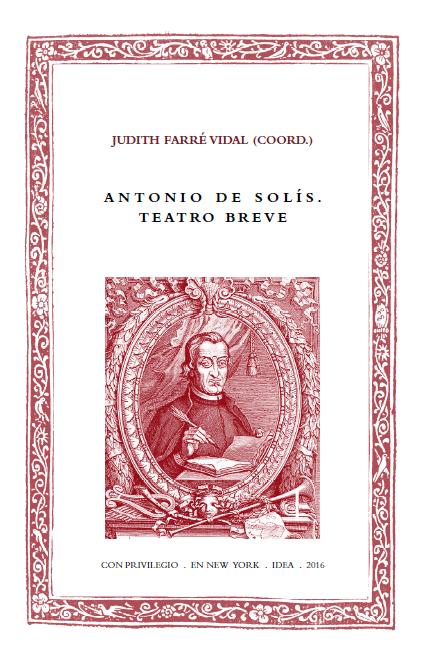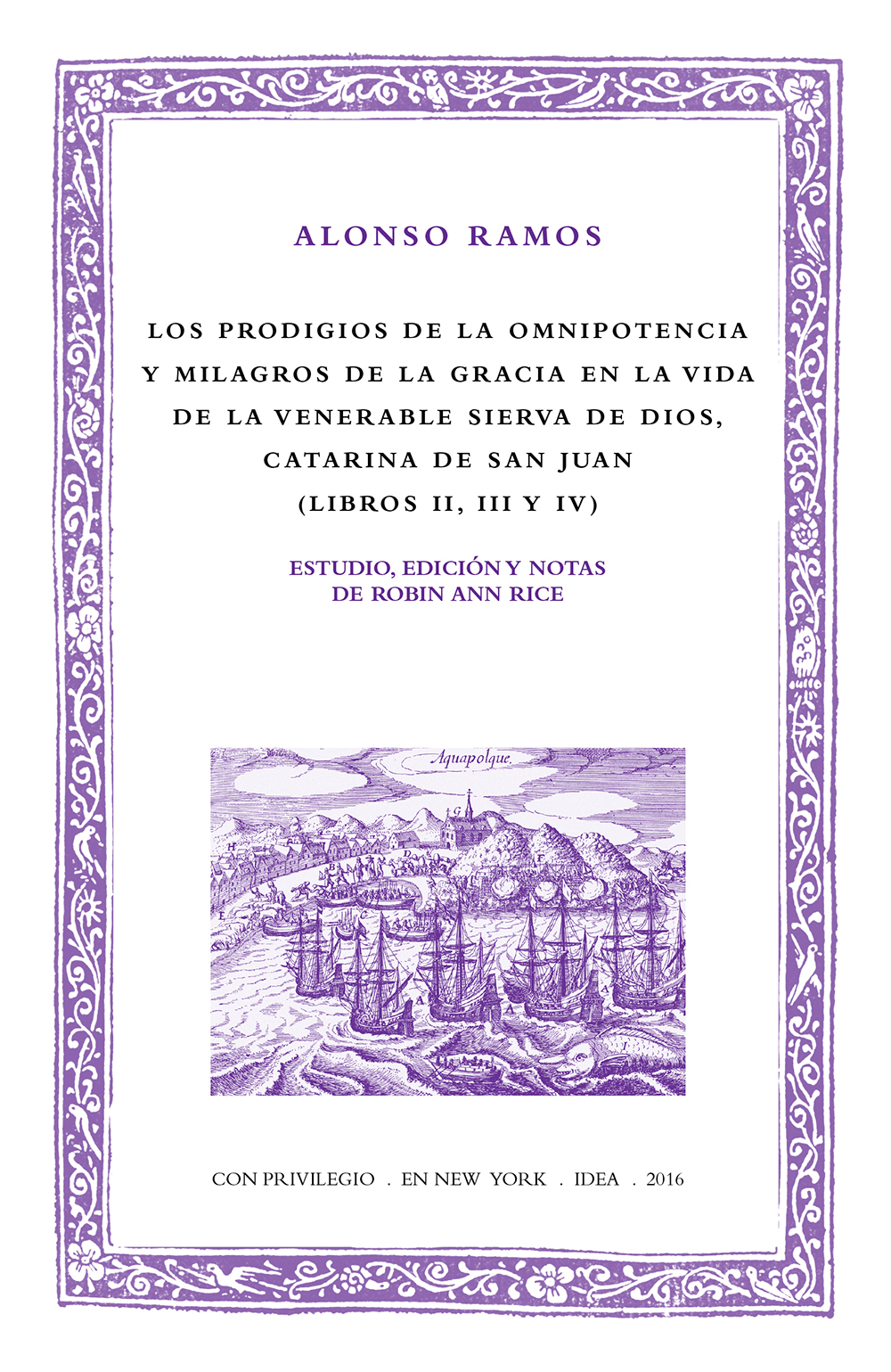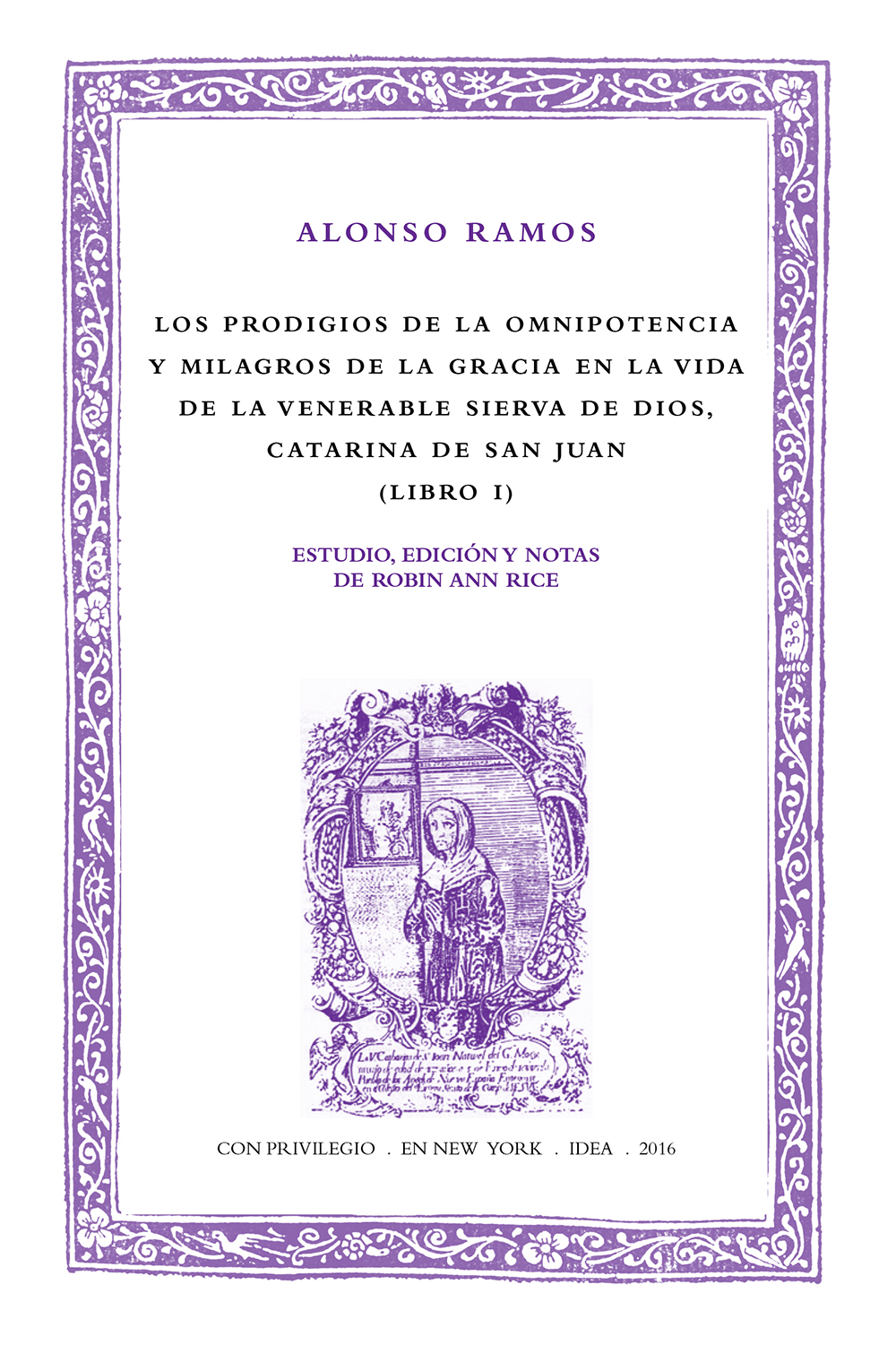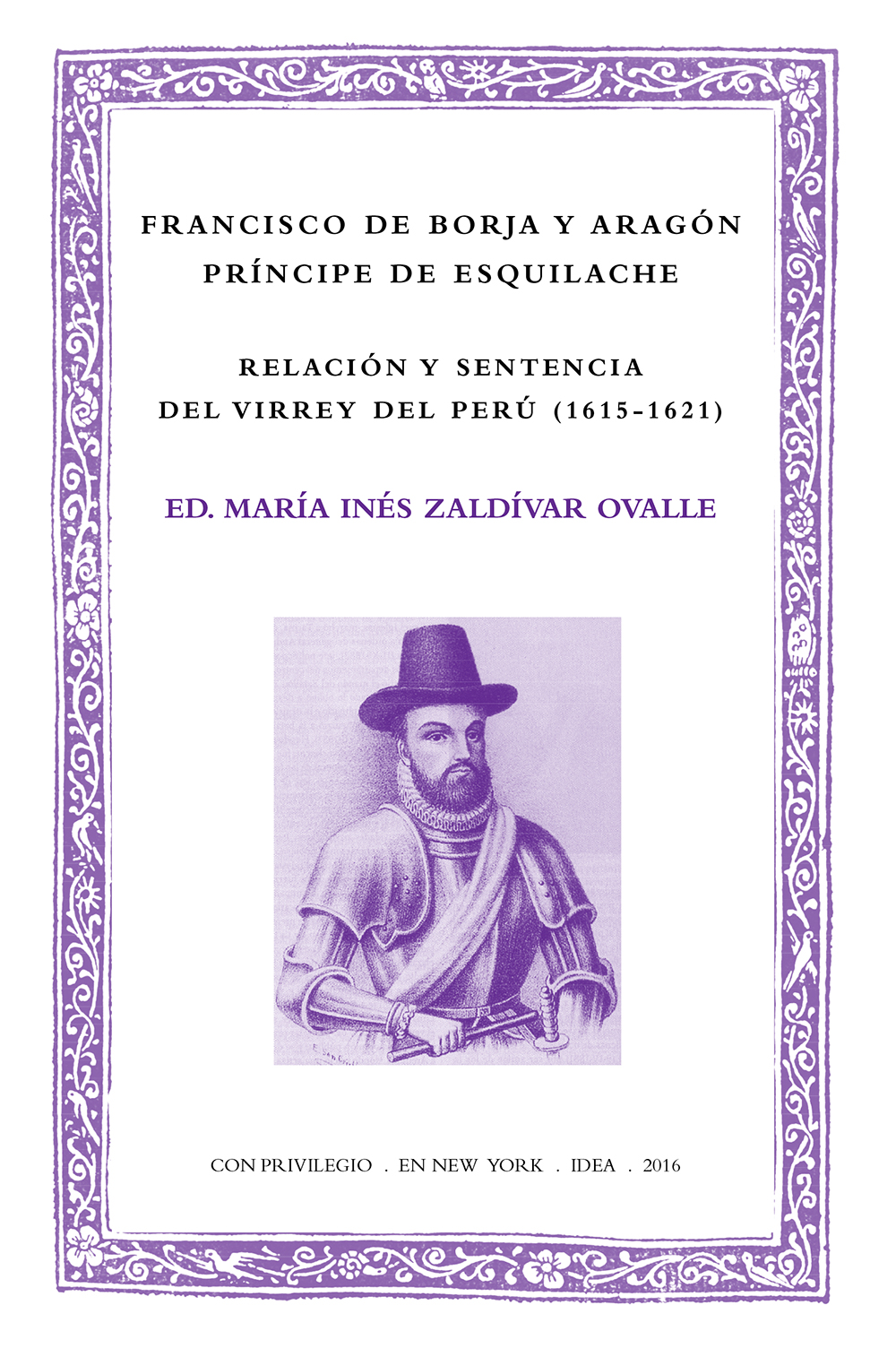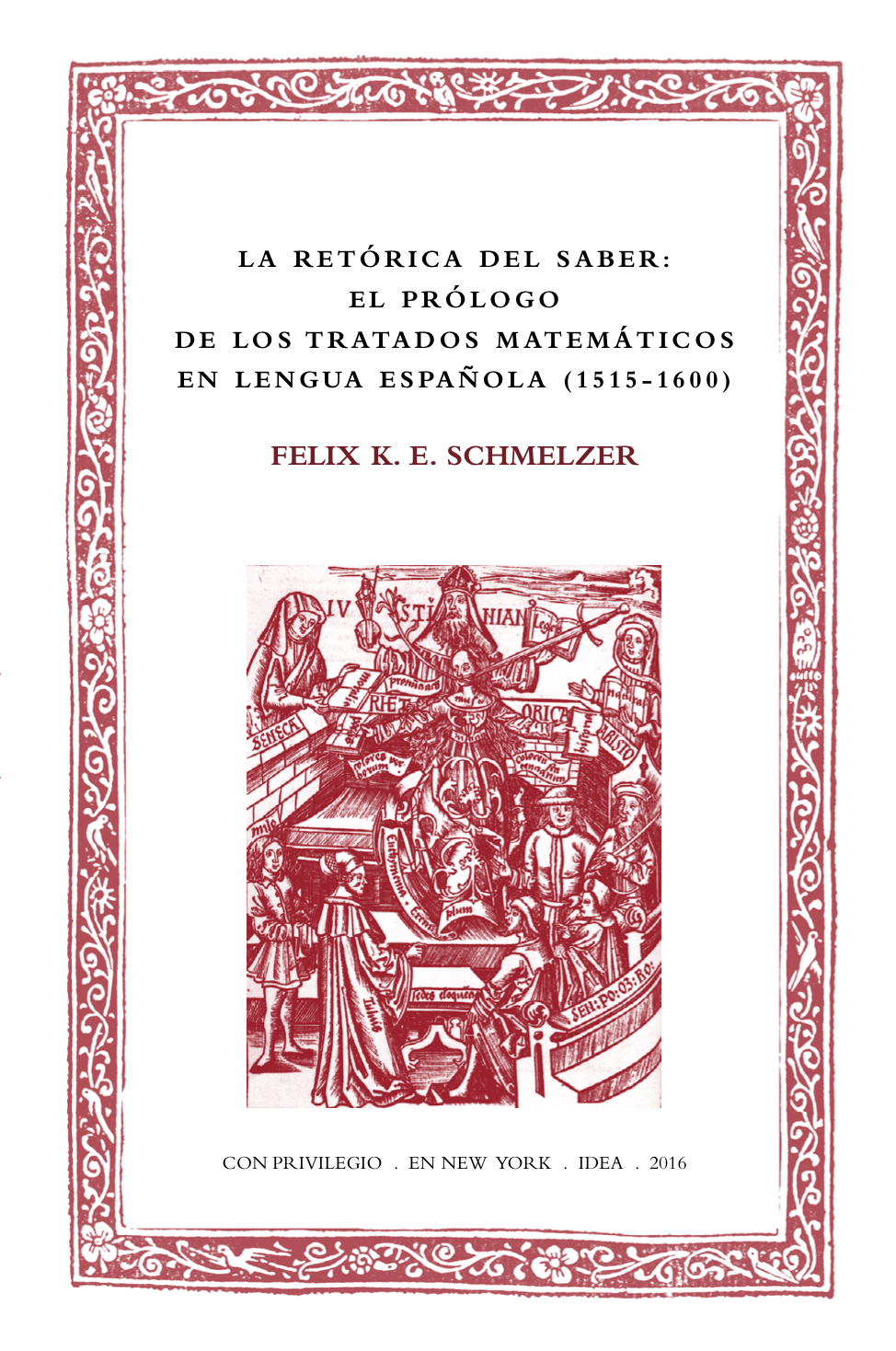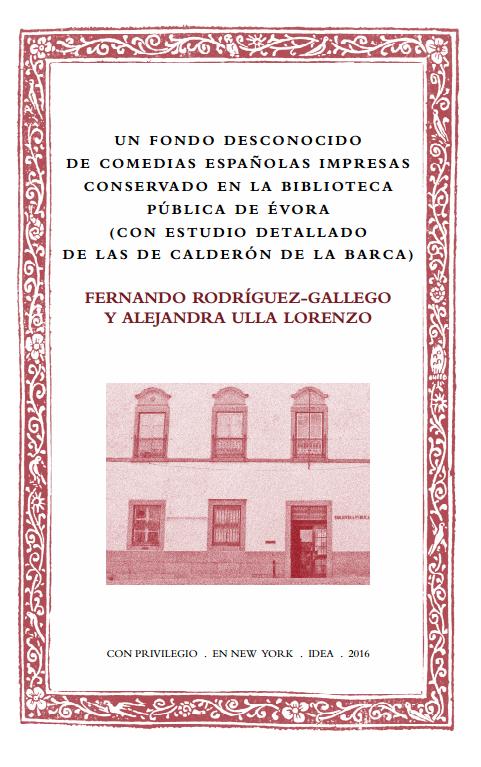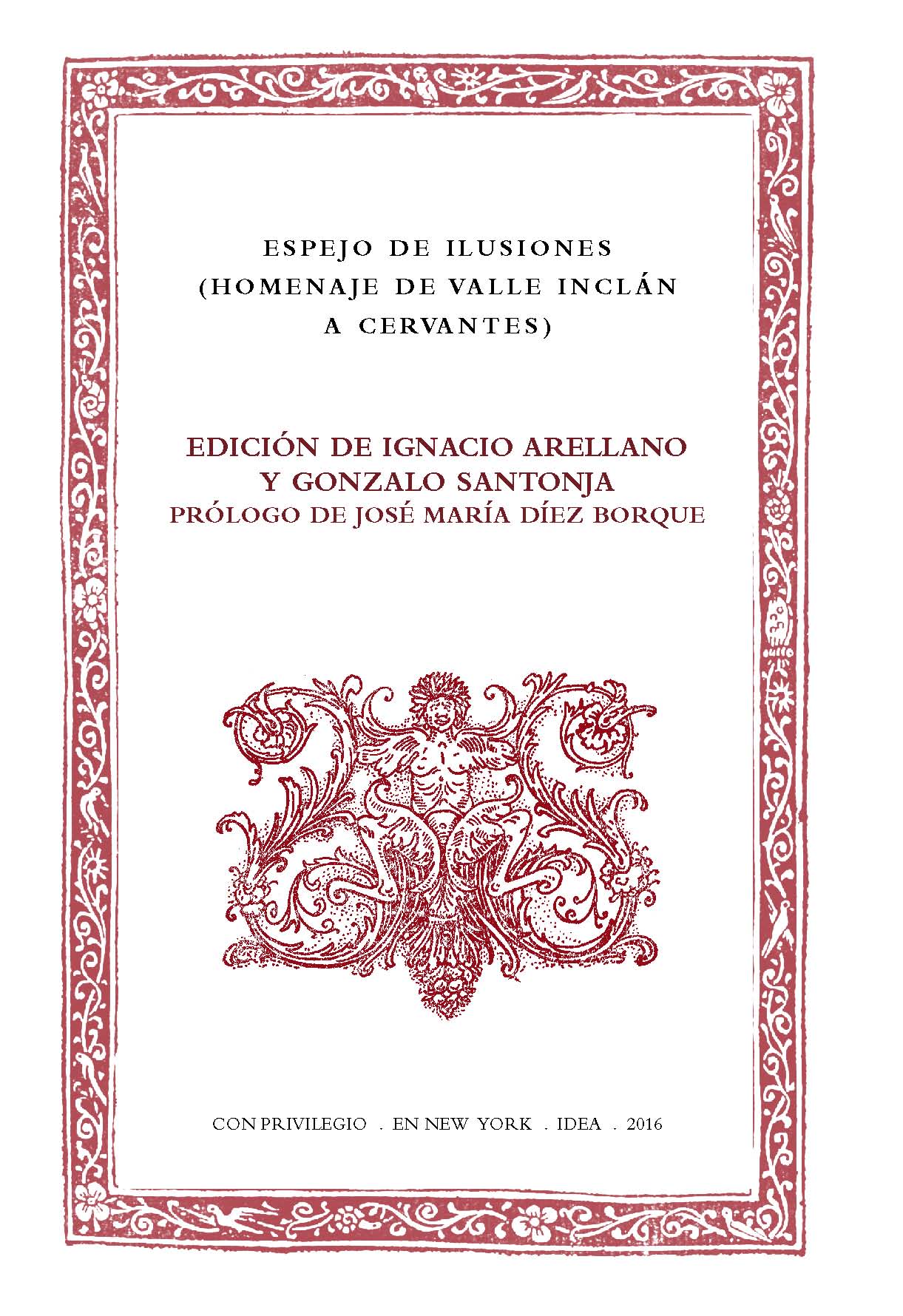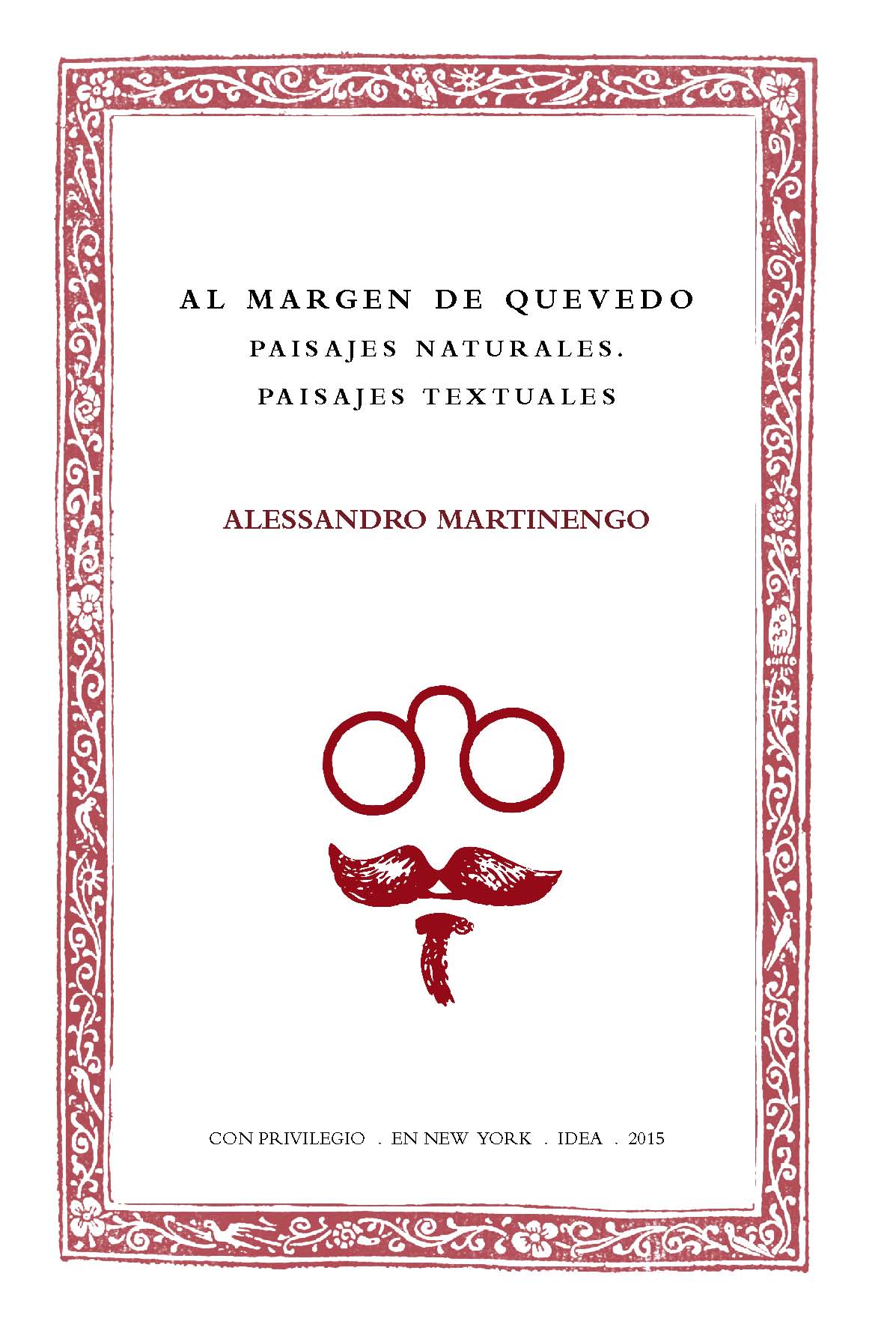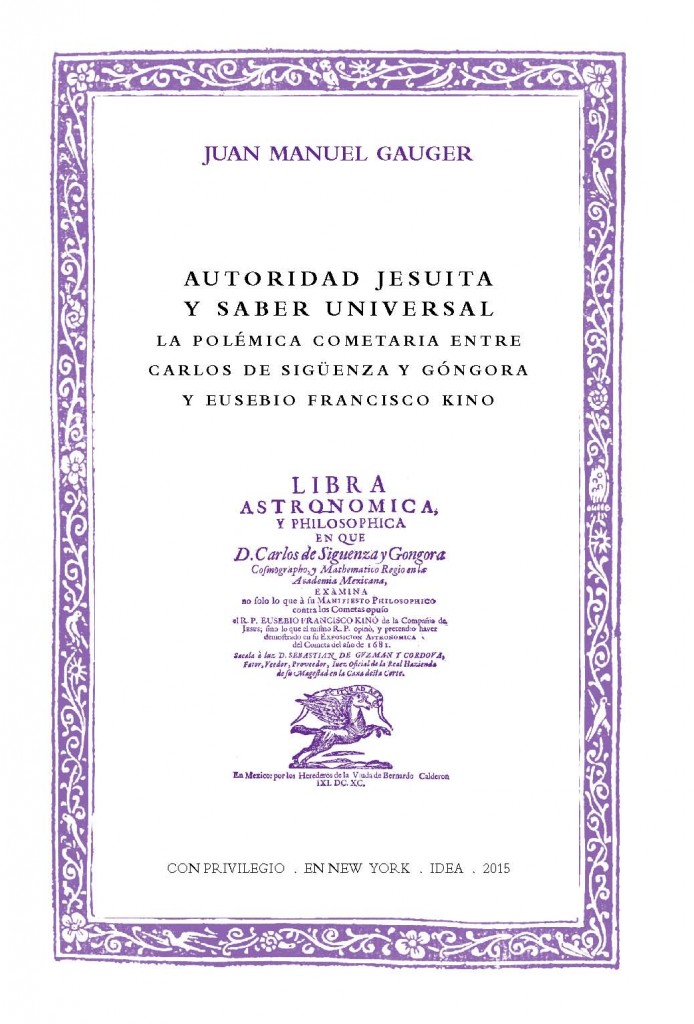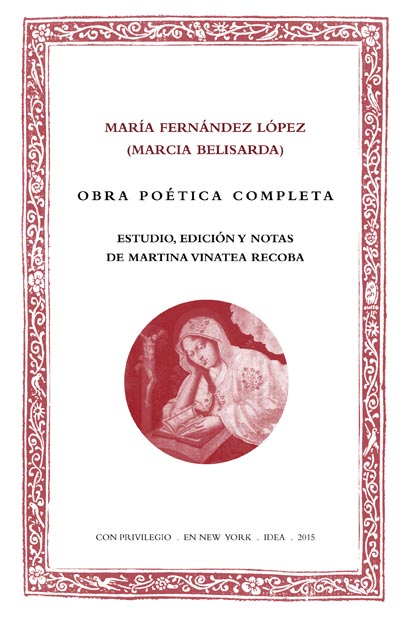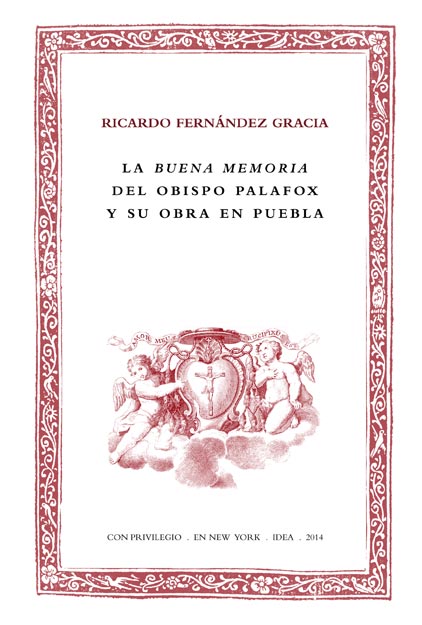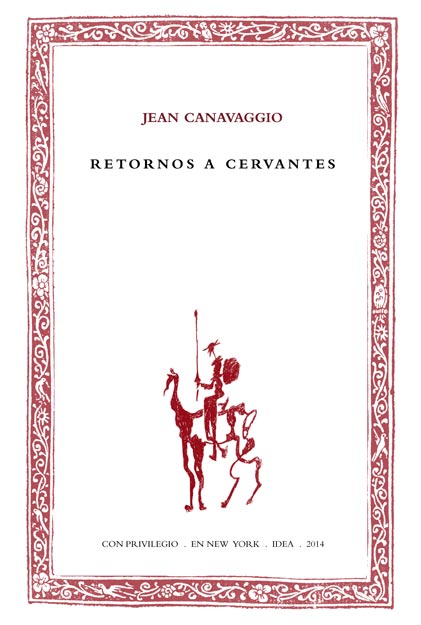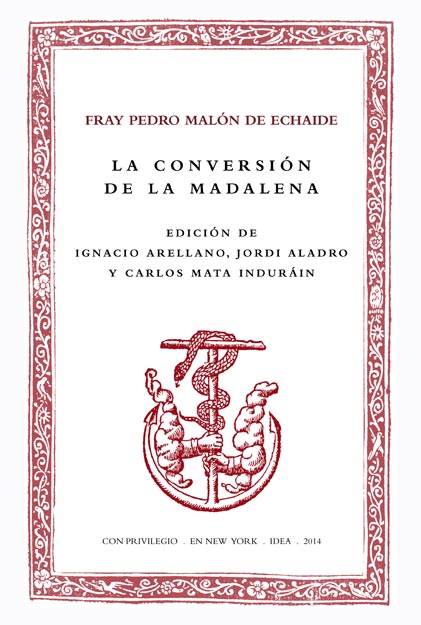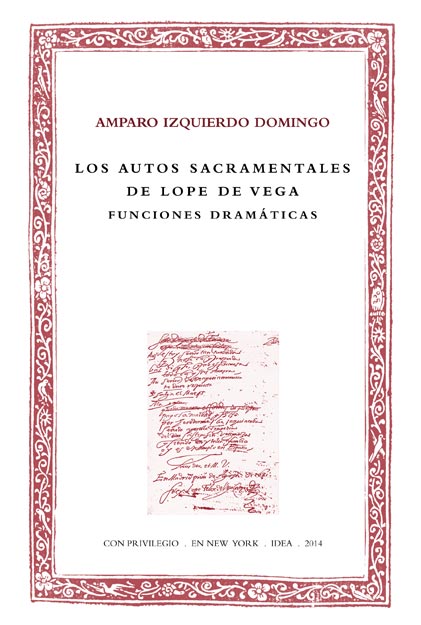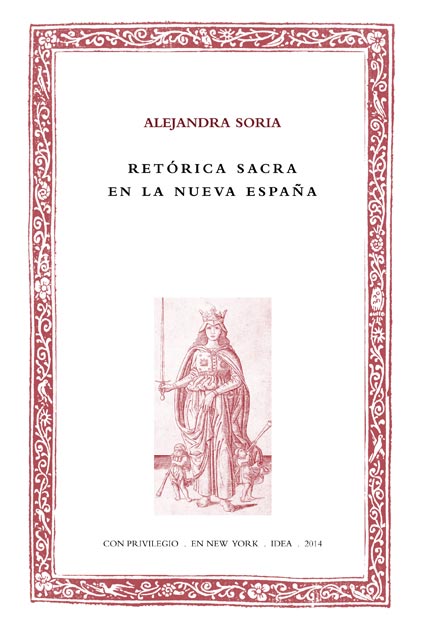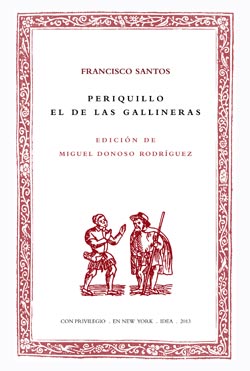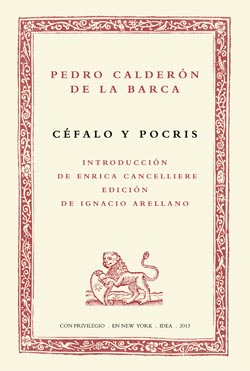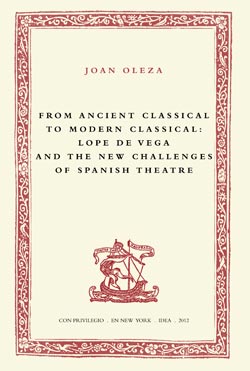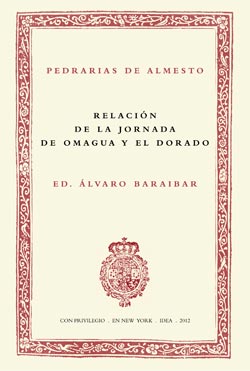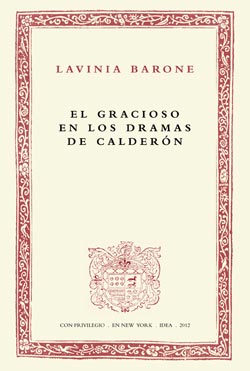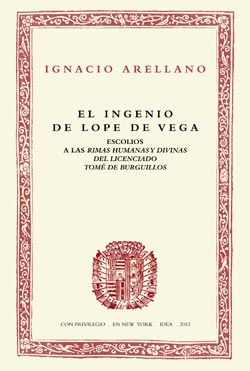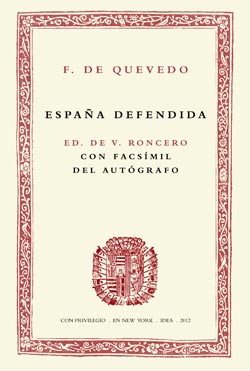Collection "Batihoja".

Created in 2012, the Batihoja Collection brings together programs of study monographs, collective volumes and critical editions of works from the Golden Age in their entirety, with a special series dedicated to the "programs of study Indianos". By virtue of the agreement of partnership between the high school of programs of study Auriseculares (IDEA) and the GRISO, the volumes of the Batihoja Collection, available online on its website, are also available on the GRISO website, and its materials are incorporated into DADUN, the Digital Academic Repository of the University of Navarra. The goal is to make the results of its research available in Open Access, immediately and free of charge, within the reach of the academic community and the general public.
The review process consists of an anonymouspeer review process ( assessment ) for the originals received.
Director: Victoriano Roncero (State University of New York-SUNY at Stony Brook, United States)
Deputy Director: Abraham Madroñal (Université de Genève, Switzerland / CSIC-Centro de Ciencias Humanas y Sociales, Spain)
Secretary: Carlos Mata Induráin (GRISO-University of Navarra, Spain)
Wolfram Aichinger (Universität Wien, Austria)
Tapsir Ba (Université Cheikh Anta Diop, Senegal)
Enrica Cancelliere (Università degli Studi di Palermo, Italy)
Pierre Civil (Université Sorbonne Nouvelle-Paris III, France)
Ruth Fine (The Hebrew University-Jerusalem, Israel)
Luce López-Baralt (University of Puerto Rico, Puerto Rico)
António Apolinário Lourenço (Universidade de Coimbra, Portugal)
Vibha Maurya (University of Delhi, India)
Rosa Perelmuter (University of North Carolina at Chapel Hill, United States)
Gonzalo Pontón (Autonomous University of Barcelona, Spain)
Robin Ann Rice (Universidad Popular Autónoma del Estado de Puebla, Mexico)
Francisco Rico (Autonomous University of Barcelona, Spain / Royal Spanish Academy, Spain)
Guillermo Serés (Universidad Autónoma de Barcelona, Spain)
Christoph Strosetzki (Universität Münster, Germany)
Hélène Tropé (Université Sorbonne Nouvelle-Paris III, France)
Germán Vega García-Luengos (University of Valladolid, Spain)
Edwin Williamson (University of Oxford, UK)
The collection
Juan Bautista Diamante and Pedro Lanini Sagredo, The Great Cardinal of Spain, Fray Francisco Jiménez de Cisneros (part one), edited by Ignacio Arellano and Carlos Mata Induráin, New York, IDEA, 2025.
ISBN: 978-1-952399-28-2
In the framework the institutional partnership between the Diocese of Alcalá and the research group Siglo de Oro (GRISO) of the University of Navarra, which has already given rise in recent years to publications on various themes and characters from Alcalá (the Most Holy Forms of Alcalá, the Santos Niños Justo and Pastor or San Diego de Alcalá), in this Issue we approach another character linked to the city of Henares: The Great Cardinal Francisco Jiménez de Cisneros, undoubtedly one of the most distinguished figures among the many illustrious ones linked to the city of Alcalá. In this Issue we offer the edition of El Gran Cardenal de España ( first part), a comedy attributed to Juan Bautista Diamante and Pedro Lanini Sagredo, preserved in several manuscripts, and the facsimile of the loose version entitled Pluma, púrpura y espada solo en Cisneros se halla, y restauración de Orán. The annotated text of the dramatic piece is accompanied by an extensive preliminary study and a documentary appendix with laudatory poems and accounts of the Oran workshop in the old biographies of Cisneros (Robles, Porreño and Quintanilla).
Ignacio Arellano is Full Professor at the University of Navarra, where he directs the research group Siglo de Oro (GRISO), which develops a broad research program that includes the critical edition of Calderón's autos and the complete theater of Bances Candamo or the publication of La Perinola and the Calderonian yearbook .
Carlos Mata Induráin, accredited Full Professor , is a researcher and Secretary of GRISO and IDEA. His research interests focus on the Spanish literature of the Golden Age: burlesque comedy, Calderón's autos sacramentales, Cervantes and the quixotic and Cervantes' recreations, plays about the Arauco war, etc.
 Francisco Ramírez Santacruz, Mateo Alemán. Literate culture and social commitment in Golden Age Spain, New York, IDEA, 2025.
Francisco Ramírez Santacruz, Mateo Alemán. Literate culture and social commitment in Golden Age Spain, New York, IDEA, 2025.
ISBN: 978-1-952399-27-5
The first thing that strikes us about Mateo Alemán (1547-1614) is the disproportion between the quality and value of his work and the relative ignorance and lack of appreciation among the contemporary public. Only very recently has it become an accepted opinion that Alemán made a gigantic contribution to the birth of the modern novel, without which Don Quixote would never have been written. Although, strictly speaking, Cervantes cannot be considered a disciple of his, the Sevillian was the greatest literary impact that he received in his life and in the face of which he had to reorganize his artistic priorities from top to bottom. These articles, written over the course of a decade, aspire to delineate the overwhelming intellectual world of Mateo Alemán, where the professional knowledge of the physician, the jurist and the theologian converge, to which is added a solid humanist training . His was a prerationalist and "secular" current, for whose correct conceptualization we are not yet fully prepared.
Francisco Ramírez Santacruz is Full Professor of Spanish and Latin American Literature at the University of Fribourg (Switzerland). D. in Romance Languages and Literatures from Harvard University and a former scholarship recipient of the Alexander von Humboldt Foundation, he is a specialist in early modern Hispanic literature and culture on both sides of the Atlantic and 20th century Spanish-American literature. He has published books on Mateo Alemán, Miguel de Cervantes, Sor Juana Inés de la Cruz, Carlos de Sigüenza y Góngora, the Novo-Hispanic mestizo chroniclers, José Revueltas, Juan Rulfo and others. He has been Visiting Professor at several universities in the United States, Europe and Latin America.
 Arnulfo Herrera and Citlalli Luna Quintana, Textos satíricos clandestinos del Virreinato de la Nueva España, New York, IDEA, 2025. .
Arnulfo Herrera and Citlalli Luna Quintana, Textos satíricos clandestinos del Virreinato de la Nueva España, New York, IDEA, 2025. .
ISBN: 978-1-952399-26-8
This Issue is situated in the framework the research project La burla como diversión y arma social en el Siglo de Oro (II). Political and clandestine poetry. Patrimonial recovery and historical and cultural context (AEI/FEDER, EU, PID2020-116009GB-I00), of the Ministry of Science and Innovation of the Government of Spain, directed by Ignacio Arellano. Specifically, this selection of satirical texts written in New Spain -or coming from the Peninsula, but reformulated in Mexico- complements the anthology outlined in issue 71 of the "Batihoja" Collection. Some known and others copied for the first time from the inquisitorial files of the General file of the Nation, have been transcribed and meticulously annotated to make them available to modern readers.
Arnulfo Herrera is professor of Spanish literature of the Golden Age at the School of Philosophy and Letters of the UNAM; since 1987 he is a member of the Instituto de Investigaciones Estéticas (UNAM). He is the author of numerous specialized articles and knowledge dissemination, as well as the books Tiempo y muerte en Luis de Sandoval Zapata (Mexico, UNAM, 1996), La Edad de Oro ( Puebla, administrative office de Cultura, 2001) and Cómo leer un poema ( Mexico, UNAM, 2020), among others.
Citlalli Luna Quintana has a master's degree in Art History, specializing in Viceroyalty Arts from the Universidad Nacional Autónoma de México and a PhD in Hispanic Literature from El high school of México. She has published articles on the literature of New Spain. She has collaborated in several research projects at the Instituto de Investigaciones Estéticas of the UNAM and in the project programs of study Indianos of the Universidad del Pacífico (Peru).
 Francisco de Quevedo, Dream of Death. Critical edition by Karl Maurer, Ilse Nolting-Hauff and Kurt Ochs. Revised Spanish edition by Inmaculada García Jiménez, New York, IDEA, 2025.
Francisco de Quevedo, Dream of Death. Critical edition by Karl Maurer, Ilse Nolting-Hauff and Kurt Ochs. Revised Spanish edition by Inmaculada García Jiménez, New York, IDEA, 2025.
ISBN: 978-1-952399-25-1
The Dreams of Francisco de Quevedo (1580-1645), on which his literary prestige is based to this day more than on any other of his works, have had to wait a long time for a scientific edition worthy of the name. In this regard, the critical edition of Quevedo's Dream of Death that appeared in 2013 in the publishing house Narr had a very positive echo in Germany. From the beginning, the authors of this work planned to publish also a Spanish version, which constitutes a revised critical edition, which now becomes a reality in this Issue of the "Batihoja" Collection of the Instituto de programs of study Auriseculares (IDEA).
Karl Maurer (1926), Full Professor emeritus at the Ruhr-Universität Bochum, advised Ilse Nolting-Hauff's research group since its inception in 1966 in the planning and theoretical foundation of the innovative historical edition of the Dream of Death. After the early death of its initiator in 1997, Karl Maurer, together with Ilse Nolting-Hauff's former partner Kurt Ochs, completed the critical edition in its German version (2013). As one of the last disciples of Giorgio Pasquali, he has published works on ancient and modern textual criticism.
Ilse Nolting-Hauff received her doctorate in 1956 from the University of Heidelberg. Her now classic habilitation work was published in Spanish in 1974 under the degree scroll Visión, sátira y agudeza en los "Sueños" de Quevedo. She was professor of Romance Philology at the University of Bochum and, from 1974 until her death, she was Chair of that discipline at the Ludwig-Maximilians Universität München.
Kurt Ochs (1943), Ilse Nolting-Hauff's partner during her time in Bochum, continued to work with her in Munich as academic director . He has been in position of the elaboration and coordination of the variant apparatus of the edition, as well as the control of the constant textual revisions. He is currently preparing a new annotated Spanish-German edition of theDream of Death.
Inmaculada García Jiménez professor in the Chair of Applied Linguistics in the department of Romance Philology at the University of Augsburg. Her openness to dialogue with the editors and her dedication to her work are reflected in the conceptual clarity and terminological accuracy with which she has translated the Introduction to this critical edition.
 Martina Vinatea Recoba and Joaquín Zuleta Carrandi (eds.), Quinto centenario de la circunnavegación (1522-2022), New York, IDEA, 2025.
Martina Vinatea Recoba and Joaquín Zuleta Carrandi (eds.), Quinto centenario de la circunnavegación (1522-2022), New York, IDEA, 2025.
ISBN: 978-1-952399-24-4
With the idea of commemorating the Fifth Centenary of the circumnavigation of the globe, completed in 1522, we have gathered in this book a series of essays signed by specialists in different fields of the Humanities: literary programs of study , linguistics, history, cartography, heritage. The goal has been to reflect on a legendary space where two oceans converge, the Atlantic and the Pacific, but also the dreams, worldviews and desires of navigators, whalers, cartographers and pioneers - in addition to its original inhabitants, the Aónikenk and Selk'nam Indians - during five centuries of history and thousands of years of coexistence between human beings and the hostile nature of the interoceanic passage. Just as Hernando de Magallanes and Juan Sebastián Elcano crossed the geographical limits of the European continent in the 16th century, this book is an invitation to link the entire trail of humanist knowledge that allowed both the exploration of the southern channels and the circumnavigation of the globe.
Martina Vinatea Recoba is a senior lecturer at the Universidad del Pacífico, PhD in Hispanic Philology and PhD in History, and academic of issue of the Academia Peruana de la language. She is currently Head of the Academic department of Humanities, where she directs the research group ofprograms of study Indianos, which develops initiatives related to the management and knowledge dissemination of the textual and artistic heritage of the viceregal period in coordination with the Center programs of study Indianos (CEI) of the University of Navarra.
Joaquín Zuleta Carrandi holds a PhD in Literature from the University of Navarra. He is the Director programs of study at the Instituto de Literatura of the Universidad de los Andes, Chile, where he teaches Colonial and Golden Age Literature. His research focuses on the field of colonial literature. He has published articles in Chilean and international journals and has two critical editions linked to the Magellanic space: Sumaria relación ( 2015) and Cartas y relaciones del estrecho de Magallanes (2021), which collect texts of the explorer and navigator of the sixteenth century Pedro Sarmiento de Gamboa.
 Mariela Insúa, Robin Ann Rice and David Sánchez Sánchez, Las caras de la huesuda. Variations on death in the theater of the Golden Age (Homage to Ysla Campbell and Aurelio González), New York, IDEA, 2025.
Mariela Insúa, Robin Ann Rice and David Sánchez Sánchez, Las caras de la huesuda. Variations on death in the theater of the Golden Age (Homage to Ysla Campbell and Aurelio González), New York, IDEA, 2025.
ISBN: 978-1-952399-23-7
This Issue gathers a series of papers discussed at the XXI congress of the International association of Spanish and Novo-Hispanic Theater (AITENSO), held at the Universidad Popular Autónoma del Estado de Puebla (UPAEP) from October 30 to November 1, 2023, under the degree scroll Variaciones sobre la muerte en el teatro del Siglo de Oro: speech, sociedad y trascendencia (Variations on death in the Golden Age theater: speech, society and transcendence). But it also wants to pay tribute to two fundamental researchers in the history of AITENSO and in the panorama programs of study on the Golden Age theater on both sides of the Ocean Sea: Ysla Campbell, founder of the association, who has maintained it with constancy since its early days, and Aurelio González, who left us on November 17, 2022, and whose report we intend to honor in this well-deserved, if limited, tribute.
Mariela Insúa is researcher and administrative assistant of the research group Siglo de Oro (GRISO) at the University of Navarra and editor of Hipogrifo. Magazine of literature and culture of the Golden Age. A specialist in the work of the Mexican Fernández de Lizardi, she has also published works on the Golden Age, especially on Cervantes and the Spanish-Portuguese theater of the 17th century, as well as on contemporary Spanish novels and Spanish-American literature.
Robin Ann Rice holds a Ph.D. from the University of Navarra and an M.A. in Comparative Literature from Indiana University. She is a member of the Mexican National System of Researchers (Level 2) and of many professional associations. She is a professor at the Universidad Popular Autónoma del Estado de Puebla (Mexico).
David Sánchez Sánchez holds a PhD in Arts and Humanities from the University of Navarra, a master's degree in Historical programs of study from the Universidad Popular Autónoma del Estado de Puebla and a graduate in History from the University of Oviedo. He is a member of the National System of Researchers of Mexico and other professional associations. He serves as Full Professor and director of the School of Humanities at the Universidad Popular Autónoma del Estado de Puebla.
 Yadira Munguía, La toma de Tenochtitlán a sus 500 años. Repensada desde la cultura, la historia y la Philosophy, New York, IDEA, 2024.
Yadira Munguía, La toma de Tenochtitlán a sus 500 años. Repensada desde la cultura, la historia y la Philosophy, New York, IDEA, 2024.
ISBN: 978-1-952399-22-0
August 13, 2021 marked the 500th anniversary of the fall of the city of Tenochtitlán, capital of the Mexica empire, a transcendental event in the history, not only of Mexico, but also of the world. Considering the importance of rethinking this series of events in the light of time, this Issue presents different perspectives and themes that help us understand the radical change experienced in Mexico in the 16th century. Reflection on the Conquest and the beginning of the Novo-Hispanic Era continues to be a necessary historical approach to understand the Mexican and Spanish present. This book is an invitation to delve into aspects of general interest through a historical, literary and philosophical perspective, which will undoubtedly be useful for researchers, teachers and students who want to continue the dialogue in the meeting of two cultures.
Yadira Munguía, SIN I, holds a PhD in Hispanic American Literature from BUAP. She works as a research professor at the Universidad Panamericana Guadalajara and is a subject professor in the department of Letters at the University of Guadalajara. She holds a Master's degree in Mexican Literature from BUAP and a Master's degree in Mexican History from UdeG. She is the author of the critical edition of Enigmas offered to the Sovereign Assembly of the House of Pleasure by Sor Juana Inés de la Cruz. Study, edition and notes, as well as scientific articles and creative work. She is currently doing research on Iberian and Novo-Hispanic women's literature from the sixteenth to the eighteenth centuries.
|
INDEX |
Page |
|
YADIRA MUNGUIA |
9 |
|
JOSÉ LUIS DE ROJAS |
15 |
|
LUIS AARÓN PATIÑO PALAFOX |
27 |
|
OMAR RODRÍGUEZ CAMARENA |
43 |
|
RÓMULO RAMÍREZ DAZA Y GARCÍA |
61 |
|
YURIXHI GALLARDO |
81 |
|
YADIRA MUNGUÍA |
95 |
|
OMAR LÓPEZ PADILLA |
115 |
|
BLAS ROLDAN |
141 |
|
BEATRIZ EUGENIA OROZCO CELIS |
185 |
Raúl Marrero-Fente, La cruz en la arena: programs of study on "Espejo de paciencia" (1608) by Silvestre de Balboa, New York, IDEA, 2024.
ISBN: 978-1-952399-21-3
La cruz en la arena studies Espejo de paciencia, written by Silvestre de Balboa in Puerto Príncipe (Camagüey) in 1608 to commemorate the kidnapping and liberation of Bishop Fray Juan de las Cabezas Altamirano, which occurred near Bayamo, in the eastern part of Cuba, on April 29, 1604. Espejo de paciencia sample a rich and varied world in which Creoles, Spaniards, Indians, Africans, French, Italians and Portuguese coexist at the same time. The work belongs to the tradition of epic-religious poems dedicated to the Christian hero model and is the oldest text of Cuban religious literature.
Raúl Marrero-Fente is Full Professor of Hispanic Literatures and Law at the University of Minnesota. He is a full member of the North American Academy of Spanish language and a corresponding member of the Royal Spanish Academy. He is an associate researcher of the group de research Siglo de Oro (GRISO) at the University of Navarra, and a member of the Centro de programs of study de la América Colonial (CEAC) at the Universitat Autònoma de Barcelona. He is the author, publisher and co-editor of numerous programs of study on Spanish and Latin American literature, especially of the Golden Age and the colonial period.
Lope de Vega, San Diego de Alcalá, ed. Ignacio Arellano, J. Enrique Duarte and Carlos Mata Induráin, New York, IDEA, 2024.
ISBN: 978-1-952399-20-6
In the framework of the partnership between the Diocese of Alcalá de Henares and the group of research Siglo de Oro (GRISO) of the University of Navarra, we now offer the edition of the comedy San Diego de Alcalá by Lope de Vega (one of the several that his figure inspired the golden playwrights). Our text, which is based on the one published in the Parte tercera de comedias de los mejores ingenios de España ( 1653), is completed with a detailed preliminary study, a careful annotation and a appendix documentary. In this piece, the Fénix presents a figure of San Diego not very far from the aspects provided by hagiographic stories, although adapting it to the genre, to the circumstances of a theatrical performance and a specific audience. The saint sample Lope corresponds to a baroque mentality, with an idea of sanctity characteristic of his time and circumstances: post-Tridentine Spain.
Ignacio Arellano is Full Professor of the University of Navarra, where he directs the group de research Siglo de Oro (GRISO), which develops a wide program of research that includes the critical edition of Calderón's autos, the complete theater of Bances Candamo or the publication of La Perinola and the Calderonian yearbook .
J. Enrique Duarte, Senior Associate Professor , is researcher of GRISO. His interest is focused on the theater of the Golden Age (Calderón, Tirso, Bances Candamo...), having published numerous editions of comedies and autos sacramentales. He is Secretary of La Perinola. Revista de research quevediana and its collection of "Anejos".
Carlos Mata Induráin, Full Professor , is researcher and Secretary of GRISO and IDEA. His lines of research focus on Spanish literature of the Golden Age: burlesque comedy, Calderón's autos sacramentales, Cervantes and the quixotic and Cervantes' recreations, plays about the Arauco war, etc.
Jordi Aladro, La presencia de María Magdalena en la poesía popular y culta de los siglos XVI y XVII, New York, IDEA, 2024.
ISBN: 978-1-952399-19-0
At the end of the 16th century, the development of Lutheranism and the Protestant denial of the sacrament of penance opened new perspectives for the devotion to St. Mary Magdalene, which became the weapon and soul of the Counter-Reformation. Her biographical and hagiographical features enlightened the most important artists of our Golden Age, inspiring magnificent literary pages in prose and verse both in Latin and in various vernacular languages. The present anthology, which spans from 1508 to 1650, teaches us that Mary Magdalene was the most beloved and charismatic saint of our Golden Age; her vast presence in popular and cultured poetry makes the saint the paradigm of the art of the Counter-Reformation.
Jordi Aladro specialist in literature of the Golden Age and professor at the University of California (Santa Cruz). Guest lecturer at numerous universities, institutes and cultural foundations in America, Europe and Asia. His fields of research include baroque religious iconography, Malón de Echaide, Cervantes, religion and politics, sacred oratory and the figure of Mary Magdalene; fields to which he has dedicated numerous articles and several books.
Emmanuel Marigno and Carlos Mata Induráin (eds.), La recepción de Cervantes: huellas, recreaciones y reescrituras (siglos XVII-XXI). La réception de Cervantes: traces, recréations et réécritures (XVIIe-XXIe siècles), New York, IDEA, 2024.
ISBN: 978-1-952399-06-0-0
In recent decades, several lines of research research have been developed at the international level on the reception of the Golden Age in later times. In the case of Cervantes, the artistic creation inspired by him and his work does not cease, whether in cinema, literature, music, comics or painting. The aim of this book, the result of partnership promoted by the University of Navarra and the University of Saint-Étienne, is to contribute to the state of creation and research on "the reception of Cervantes" from different epistemological and plastic perspectives. We hope that these contributions can shed light on some of the multiple resources used by artists in their recreations and rewritings of Cervantes, and also that the critical and theoretical tools on transcultural, trans-secular and transmedial reception proposed here will be useful.
Emmanuel Marigno is Full Professor of Literature at the University of Saint-Étienne (France). He has directed the group of research CELEC EA 3069 from 2015 to 2020, and has been Dean of the School Arts, Lettres, Langues from 2021 to 2023. Her research focuses on the Golden Age and its reception from the arts of the 20th-21st centuries. She has recently published Autores del Siglo de Oro en las artes contemporáneas (Siglos XX y XXI). programs of study on Calderón, Cervantes and Quevedo. essay critical on intermedial (re)creation.
Carlos Mata Induráin, Full Professor accredited in Literature, is researcher and secretary of group of research Siglo de Oro (GRISO) of the University of Navarra, secretary of association of Cervantistas and secretary of the Institute of programs of study Auriseculares (IDEA). He is also correspondent in Spain of the Bolivian Academy of the language. His lines of research focus on the Spanish literature of the Golden Age (burlesque comedy, Calderón, Cervantes and the Cervantes and quixotic recreations, etc.).
Leonardo Sancho Dobles, "Este pequeño festejo".Seis loas de sor Juana Inés de la Cruz, New York, IDEA, 2024, 132 pp.
programs of study Indianos, 26
ISBN: 978-1-952399-18-3
"Este pequeño festejo". Seis loas de sor Juana Inés de la Cruz gathers a set of short plays by the Novo-Hispanic poet that required an updated edition; the work responds to the objectives of the line of research "New World Theater" of the project programs of study Indianos (PEI), which promotes the development of programs of study critics on aspects of the American viceregal heritage and the edition of the main works of the 16th, 17th and 18th centuries that make up the American textual corpus. The publication is also part of the efforts made by the group de research Siglo de Oro (GRISO) and the Instituto de programs of study Auriseculares (IDEA) to bring to light texts belonging to the short dramatic genre.
Leonardo Sancho Dobles is professor Full Professor of the University of Costa Rica at the School of General programs of study , where he works as professor and researcher in the Communication and Language Section. D. in Hispanic Literature and Literary Theory from the University of Navarra, A Cum Laude and accredited specialization International Doctor. He has been designated Full Professor Humboldt 2019 by the Vice-Rectory of research of the University of Costa Rica and by the German Academic Service exchange (DAAD). He is founder of group of programs of study Transdisciplinary on Literature and Medicine and Associate Member (board member Institutional) of project of programs of study Indianos, PEI, Universidad de Navarra/Universidad del Pacífico, Peru. His areas of interest include colonial literature, the Golden Age, Miguel de Cervantes, Sor Juana Inés de la Cruz, the Viceroyal short theater and the origins of Costa Rican literature.
Arnulfo Herrera and Martina Vinatea (coords.), Poesía de sátira política y clandestina en el Siglo de Oro. Essential Anthology. Issue III. Textos indianos y programs of study de varia lección, New York, IDEA, 2023, 313 pp.
ISBN: 978-1-952399-17-6
In the framework of the project of research La burla como diversión y arma social en el Siglo de Oro (II). Political and clandestine poetry. Recuperación patrimonial y contexto histórico y cultural (AEI/FEDER, UE, PID2020-116009GB-I00), of the Ministry of Science and Innovation of the Government of Spain, this third Issue complements the two previous ones of the anthology of texts, adding some special cases, especially related to the Indies, or that respond to particular circumstances, as is the case with the famous poem "Católica, sacra, real majestad", now decidedly attributed to Don Francisco de Quevedo. The programs of study included in the Issue address different facets of the clandestine corpus, and are added to the series published in magazines and other books corresponding to this same project.
Arnulfo Herrera has been a professor of Spanish literature of the Golden Age at the National Autonomous University of Mexico since 1978. He is attached to high school de Investigaciones Estéticas, where he works on Mexican literature.
Martina Vinatea, PhD in Philology Hispanic and History, is Senior Lecturer at the Universidad del Pacífico (Peru) and Co-Director of the Centro de programs of study Indianos (CEI) / project programs of study Indianos (PEI). Her specialties include women's convent poetry and poetry of viceregal Peru.
|
INDEX |
Page |
|
9 |
|
|
MARTINA VINATEA |
11 |
|
IGNACIO ARELLANO |
69 |
|
IGNACIO ARELLANO |
109 |
|
CARLOS F. CABANILLAS CÁRDENAS |
169 |
|
ARNULFO HERRERA |
201 |
|
FERNANDO PLATA |
223 |
|
CARMEN RIVERO |
283 |
|
CRISTINA TABERNERO |
293 |
Ignacio Arellano, Carlos Mata Induráin and Jesús M. Usunáriz (coords.), Poesía de sátira política y clandestina en el Siglo de Oro. Essential Anthology. Issue II. Reinado de Carlos II, New York, IDEA, 2023, 951 pp.
ISBN: 978-1-952399-14-5
In the framework of the project of research La burla como diversión y arma social en el Siglo de Oro (II). Political and clandestine poetry. Recuperación patrimonial y contexto histórico y cultural (AEI/FEDER, UE, PID2020-116009GB-I00), of the Ministry of Science and Innovation of the Government of Spain, this second Issue addresses the reign of Charles II, and expands the material available with more than 200 poems, and an apparatus of notes that attempts to clarify the complex keys to his satirical allusions, in addition to a preliminary study examining the circumstances of each cycle of government: Everardo Nithard's (1666-1669); Fernando de Valenzuela, el Duende's (1674-1677); Don Juan José de Austria's (1677-1679); the Duke of Medinaceli's (1680-1685); and, finally, Oropesa's stages (1685-1691, 1698-1699).
Ignacio Arellano is Full Professor of Literature at the University of Navarra, where he directs the group de research Siglo de Oro (GRISO). He is honorary president of the association Siglo de Oro International, and member of the Bolivian and Chilean academies of the Spanish language . Visiting professor at numerous universities in different countries, he has published some 200 books and 500 articles on his specialization program.
Carlos Mata Induráin, Full Professor accredited in Literature, is researcher and Secretary of group of research Siglo de Oro (GRISO) of the University of Navarra and of the Institute of programs of study Auriseculares (IDEA). His lines of research are framed in the Spanish literature of the Golden Age.
Jesús M. Usunáriz is Full Professor of Modern History at the University of Navarra. His programs of study focuses on the international relations of the Hispanic Monarchy and on the social and cultural history of the 16th-18th centuries. He is director of the journal report y Civilización and of the collection "Library Services Áurea Digital" (BIADIG) of the GRISO.
Alberto Gutiérrez Gil, Francisco de Rojas Zorrilla y la comedia palatina, New York, IDEA, 2023.3.
ISBN: 978-1-952399-16-9
Francisco de Rojas Zorrilla y la comedia palatina is the result of the research that began in 2011 with my doctoral thesis around the palatine corpus of the playwright from Toledo, one of the most praised followers of Calderon's wake. Critics had focused mainly on his cloak-and-dagger comedies and his tragic production; however, until now there was no overall Issue that analyzed the peculiarities of the comic subgenre of palatine comedy within his creations. After an update of the considerations about the limits of this genre so productive in the golden theater and the fixation of the rojiano corpus, we analyze a total of eleven titles in the light of four features that identify it: the spatial and temporal distancing of the narrated events, the nature of its main characters, the spaces of the action and its main thematic axes. All of them contribute, as will be seen in the study, to the search for an original product that stands out for its literary and ideological quality and that, consequently, would have been well received by the public attending the corrales.
Alberto Gutiérrez Gil, Associate Professor at the University of Castilla-La Mancha, is graduate in Philology Hispánica and PhD in "programs of study Filológicos". His specialization program is the theater of the Golden Age, especially the palatine comedy of the Calderonian generation, with greater incidence in the figures of Francisco de Rojas Zorrilla and Antonio Enríquez Gómez. He is a member of the Almagro Institute of Classical Theater and of group of research in Spanish Classical Theater (GITCE). His publications include articles in specialized journals and book chapters and, above all, critical editions of several titles by the aforementioned playwrights. He currently combines the purely philological programs of study with more didactic aspects in the area of the language and Spanish Literature.
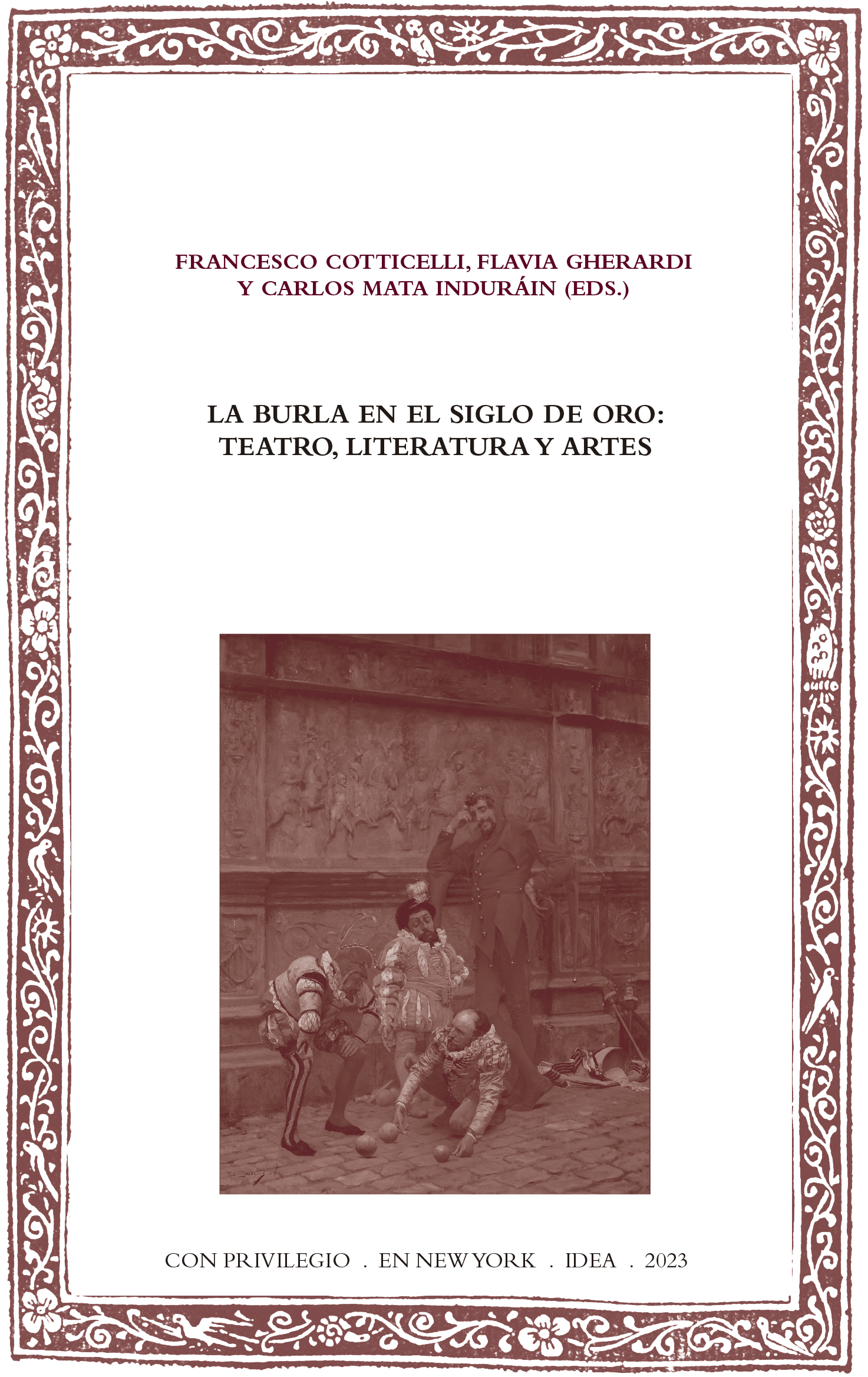 Francesco Cotticelli, Flavia Gherardi and Carlos Mata Induráin (eds.), La burla en el Siglo de Oro: teatro, literatura y artes, New York, IDEA, 2023.
Francesco Cotticelli, Flavia Gherardi and Carlos Mata Induráin (eds.), La burla en el Siglo de Oro: teatro, literatura y artes, New York, IDEA, 2023.
ISBN: 978-1-952399-15-2
This Issue collects the papers presented at the congress "The mockery in the Golden Age: theater, literature and arts", held in Naples in October 2021. The meeting addressed various aspects of mockery as a singular and characteristic phenomenon of theatrical, musical and literary production from the sixteenth to the eighteenth centuries, a phenomenon that imposed itself as a relevant narrative and poetic strategy, primordial cell and permanent resource of both the scholarly spectacle and the manifestations of the Commedia dell'arte, structural entertainment formula for the expression - direct or indirect - of criticism of the world and societies of the Modern Age. The ten essays examine authors and works corresponding to different artistic manifestations, which are offered to the reader as watchtowers or privileged points of view to be able to evaluate in their complexity the proposed topic .
Francesco Cotticelli is Professor of Disciplines of the Performing Arts at the University of Naples Federico II. He deals mainly with theater history of the seventeenth and eighteenth centuries, the Commedia dell'Arte and its diffusion in Europe, Metastasio and his role in eighteenth-century culture, and the tradition of theater in Naples from the baroque age to the present day.
Flavia Gherardi is Professor of Spanish Literature at the University of Naples Federico II. She directs the journal SigMa and is administrative assistant of Cuadernos AISPI. Her research focuses on prose narrative of the sixteenth and seventeenth centuries (novela pastoril, novela corta, Don Quixote, prose of ideas, etc.) and the poetry of the Golden Age (Quevedo, Villamediana, Spanish-Italian relations...).
Carlos Mata Induráin, Full Professor accredited, is researcher and Secretary of group of research Siglo de Oro (GRISO) of the University of Navarra and Secretary of the Institute of programs of study Auriseculares (IDEA). His lines of research focus on Spanish literature of the Golden Age (burlesque comedy, Calderón, Cervantes and quixotic recreations, etc.).
|
INDEX |
Page |
|
The varied trajectories of the golden mockery (as presentation) |
9 |
|
FRANCESCO COTTICELLI |
17 |
|
FLAVIA GHERARDI |
31 |
|
ARNULFO HERRERA |
49 |
|
RENATA LONDERO |
63 |
|
PAOLOGIOVANNI MAIONE |
81 |
|
CARLOS MATA INDURÁIN |
103 |
|
137 |
|
|
VALENTINA NIDER |
157 |
|
FERNANDO RODRÍGUEZ MANSILLA |
173 |
|
PIER MARIO VESCOVO |
189 |
Paul Firbas and José A. Rodríguez Garrido (eds.), Diario de noticias sobresalientes en Lima y noticias de Europa (1700-1711). Issue 2 (1706-1711), New York, IDEA, 2023.
programs of study Indianos, 25
ISBN: 978-1-952399-13-8
In this second Issue we offer the edition of the final years of the Diario de noticias sobresalientes en Lima y Noticias de Europa (1700-1711), a newspaper printed by Joseph de Contreras y Alvarado. The period covered here runs from January 1706 to December 1711, and corresponds to the most critical years of the War of the Spanish Succession and, in the viceroyalty of Peru, to the governments of the Marquis of Castell dos Rius and, partially, of Archbishop Diego Ladrón de Guevara. This unique series of loose sheets sample the history of the elites of the viceroyalty of Peru, with its powerful merchants, and the daily life of the city, with its hierarchies and popular devotions, and reveals the importance of the workshop publishing house and printing press of Lima as a center for the diffusion of news in the Hispanic Monarchy. The edition is complemented by a new preliminary study and notes to the text on lexicon, cultural references and news sources.
Paul Firbas is Adjunct Professor at department of Hispanic Languages and Literature and affiliated with department of History at Stony Brook University. He has edited the colonial poem Armas antárticas de Juan de Miramontes Zuázola (Lima, 2006), the Issue Épica y colonia: essay sobre el género épico en Iberoamérica (Lima, 2008) and co-edited the Catalog La Library Services del Inca Garcilaso de la Vega (Madrid, 2016). He has published numerous articles on texts from the viceregal period, particularly from the Andean area , and on the transatlantic circulation of news in early modernity.
José A. Rodríguez Garrido is a senior lecturer at department of Humanities and director of group of research y Edición de Textos Coloniales Hispanoamericanos (GRIETCOH) at the Pontificia Universidad Católica del Perú. He is the author of many articles, particularly on the colonial period, among which his dedication to the work of Espinosa Medrano and Peralta Barnuevo, as well as to Peruvian viceregal theater, stands out. He is co-editor of Edición y anotación de textos coloniales hispanoamericanos ( Madrid, 1999) and El teatro en la Hispanoamérica colonial (Madrid, 2008) and author of the book La Carta Atenagórica de Sor Juana: textos inéditos de una polémica ( Mexico, 2004).
Martina Vinatea and Ignacio Arellano, Epidemics and remedies in the Viceroyalty of Peru. Two medical treatises on garrotillo and measles (Francisco de Figueroa and Francisco Bermejo), New York, IDEA, 2023.
programs of study Indianos, 24
ISBN: 978-1-952399-12-1
Epidemics and diseases, the resulting crises and their cures are constant episodes faced by human societies. Although the programs of study linked to health policies already have a long and productive relationship with the Humanities, little has been contributed in the specific field of the programs of study of the Golden Age with an interdisciplinary view. The project "Enfermedades y epidemias en el mundo hispánico del Siglo de Oro. Realidades médicas y percepciones sociales en el Perú virreinal" (VRI-UP), from the Office of the Vice President for Research of the Universidad del Pacífico (Peru), underlines the importance of applying traditional methods for seventeenth-century texts to the complex social fabric of the Peruvian viceroyalty. The fundamental goal was the recovery of some textual materials of the Golden Age in the New World related to epidemics and epidemic diseases, mainly measles and diphtheria, since in order to support the historical, sociological or medical history programs of study , it is essential to have guarantee editions of the texts, which include medical and moral treatises, reports of events and other literary works. In this Issue the treatise by Francisco de Figueroa on "el garrotillo o esquilencia mortal" (1615); and the speech de la enfermedad sarampión experimentada en la Ciudad de los Reyes del Perú (1694) by Francisco de Bermejo y Roldán are published in a critically reliable condition, with programs of study and the corresponding annotation.
Martina Vinatea, PhD in Hispanic Philology and PhD in History, is a senior lecturer at the Academic department of Humanities of the Universidad del Pacífico (Peru) and co-director of the Centro de programs of study Indianos (CEI) / project programs of study Indianos (PEI) of the University of Navarra and the Universidad del Pacífico. Her recent work has focused on Hispanic and viceregal Peruvian women's convent poetry and on the works of the poets of the Academia Antartica.
Ignacio Arellano is Full Professor of Literature at the University of Navarra, where he directs the group de research Siglo de Oro (GRISO), which develops an extensive program of research that includes the critical edition of the complete autos sacramentales of Calderón and Lope de Vega, the complete theater of Tirso de Molina and Bances Candamo, the publication of La Perinola. Revista de research quevediana and the yearbook Calderoniano, as well as the project de programs of study Indianos (PEI) at partnership with the Universidad del Pacífico (Peru).
Ignacio Arellano (dir.), Poesía de sátira política y clandestina del Siglo de Oro. Essential Anthology. Issue I. Reigns of Philip III and Philip IV, New York, IDEA, 2023.
ISBN: 978-1-952399-09-1
In the framework of the project of research La burla como diversión y arma social en el Siglo de Oro (II). Political and clandestine poetry. Recuperación patrimonial y contexto histórico y cultural (AEI/FEDER, UE, PID2020-116009GB-I00), of the Ministry of Science and Innovation (MICINN) of the Government of Spain, this Issue addresses the corpus corresponding to the reigns of Philip III and Philip IV, substantially expanding the material available so far from the abundant repertoire of clandestine poetry and political satire of the Golden Age. This submission includes 381 poems from numerous manuscripts, accompanied by an apparatus of notes that tries to clarify the complex keys of its satirical allusions and preceded by an introductory study in which, in addition to establishing the state of the question on the subject, theoretical reflections are offered on the criteria and challenges of edition of this difficult and fascinating corpus of enormous literary, historical, social and cultural interest.
Ignacio Arellano is Full Professor of Literature at the University of Navarra, where he leads the group de research Siglo de Oro (GRISO). He has published numerous programs of study on Golden Age literature and directs, together with Carlos Mata Induráin, the aforementioned project in which the present publication is inserted.
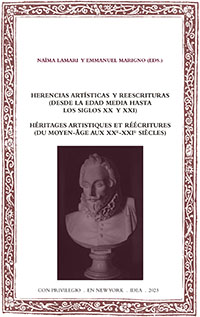 Naïma Lamari and Emmanuel Marigno (eds.), Herencias artísticas y reescrituras (desde la Edad average hasta los siglos XX y XXI) / Héritages artistiques et réécritures (du Moyen-Âge aux XXe-XXIe siècles), New York, IDEA, 2023.
Naïma Lamari and Emmanuel Marigno (eds.), Herencias artísticas y reescrituras (desde la Edad average hasta los siglos XX y XXI) / Héritages artistiques et réécritures (du Moyen-Âge aux XXe-XXIe siècles), New York, IDEA, 2023.
ISBN: 978-1-952399-10-7
Artistic Inheritances and Rewritings (from the Age average to the XX-XXI centuries) presents a set of critical works on the question of rewriting. This theme is studied, more specifically, from a transcultural, transhistorical and transmedial point of view. The creations analyzed here belong to the Caribbean, French-speaking and Hispanic areas; moreover, they highlight the aesthetic and ethical processes resulting from the transhistorical dialogue (from the Age average to the 21st century) and transmedial (hybridization of some rewritings). The book proposes programs of study on Goya in the contemporary Spanish novel and cinema, on Simone Leigh's Las Menines (2018) and on the mystical tradition in José Ángel Valente. Works on Calderonian motifs in Ernesto Caballero's latest theater and on Manuel Iribarren's Letras are added, along with reflections on Rojas Zorrilla's Donde hay agravios no hay celos (Where there are grievances there is no jealousy ). Also included is an analysis of La judía de Toledo or Alfonso VIII by Eusebio Asquerino and another related to the interartiality of El caballero de Olmedo from the Festival of Avignon. A contribution dedicated to Lourdes Ortiz and the feminine rewriting of a classical myth: Fedra (1984) and a study on the rewriting of the Bible in David combattant, by Louis de Masasse, complete the Issue .
Naïma Lamari is Professor of Literature at the University of Avignon (France). Specialized in the dramatic works of Tirso de Molina, she is currently dedicated to the reception of the Golden Age theater from the performing arts of the 20th-21st centuries.
Emmanuel Marigno is Full Professor of Literature at the University of Saint-Étienne (France). He has directed the group of research CELEC EA 3069 between 2015 and 2020, and is Dean of the School Arts, Lettres, Langues since 2021. His research focuses on the Golden Age and its reception from the arts of the 20th-21st centuries.
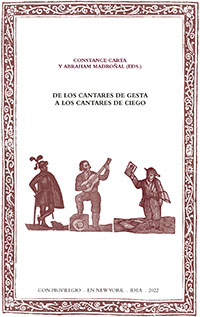 Constance Carta and Abraham Madroñal (eds.), De los cantares de gesta a los cantares de ciego, New York, IDEA, 2022.
Constance Carta and Abraham Madroñal (eds.), De los cantares de gesta a los cantares de ciego, New York, IDEA, 2022.
ISBN: 978-1-952399-05-3
Almost all the articles published here coincide in having at their base one or more sheets preserved in the Library Services University of Geneva. It is not often that works on the history of literature take into account both permanence and mobility; nor that an attempt is made to trace and document the presence of these characteristics, almost antithetical, at different moments of a literature collected in single sheets, as the programs of study gathered here do. Let us hope that the sixteen programs of study published in this book are as many swallows, of paper and ink, heralding a springtime of the research on string literature, at once legible, visible, audible, representable, singable and danceable.
Constance Carta is professor of Spanish literature of the Age average and Renaissance at the University of Geneva. Thanks to the support of the Sandoz Foundation, she directs from 2020 to 2024 a project of research combining programs of study literary and Humanities digital in order to study the collection of more than nine hundred loose sheets housed in the university Library Services of the aforementioned institution. She is the founder and current president of Ephemera Helvetica, association , a Swiss organization that promotes the study of printed ephemera.
Abraham Madroñal is Full Professor of Spanish literature at the University of Geneva and an expert in Golden Age literature. He has published several programs of study devoted to the pliegos sueltos, in particular those located in Geneva libraries, such as the book Poesías desconocidas del Siglo de Oro recuperadas de la Library Services de Ginebra (Hispánica Helvética, 2016).
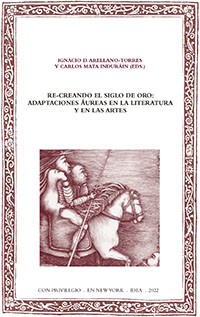 Ignacio D. Arellano-Torres and Carlos Mata Induráin (eds.), Re-creating the Golden Age: golden adaptations in literature and the arts, New York, IDEA, 2022.
Ignacio D. Arellano-Torres and Carlos Mata Induráin (eds.), Re-creating the Golden Age: golden adaptations in literature and the arts, New York, IDEA, 2022.
ISBN: 978-1-952399-03-9
The Spanish Golden Age -its outstanding works, its themes and characters, and even its authors themselves: writers, painters, etc.- has known numerous recreations over the centuries, in different arts and in various genres, with approaches of all kinds and with the most diverse intentions. It could be said without fear of being mistaken that such a tendency to recreate has been particularly intense in recent years, in formats that are not only the traditional ones in literature (novels, theater, poetry, essay...) and in other arts (music, cinema, television, comics and graphic novels ...), but also in other more modern territories such as manga and anime, advertising, video games, and even the Internet, social networks and other virtual spaces related to the unstoppable development in our days of the new technologies. Of course, the eight contributions that make up this Issue -Re-creatingthe Golden Age: golden adaptations in literature and the arts-cannot cover such a complex panorama in all its vast extension; but we think that the different analyses offered here by their authors constitute a significant sample on the numerous possibilities that exist to re-create -that is, to re-create, not only to evoke- our splendid and exciting Spanish Golden Age.
Ignacio D. Arellano-Torres received his PhD from Stony Brook University with a thesis on literary travel in the literature of the Golden Age. He is currently Assistant Professor at the University of Lousiana at Monroe, where he combines his work professor with research. Some of his main areas of interest are the analysis of space in literature, the study of literary adaptations and the edition of autos sacramentales.
Carlos Mata Induráin, Full Professor accredited, is researcher and Academic Secretary of group of research Siglo de Oro (GRISO) of the University of Navarra and Secretary of high school of programs of study Auriseculares (IDEA). He is also a correspondent in Spain of the Bolivian Academy of the language Spanish . His lines of research focus on the Spanish literature of the Golden Age (burlesque comedy, Calderón, Cervantes and quixotic recreations, plays about the Arauco War, etc.). He is the author of the literature blog "Ínsula Barañaria".
|
INDEX |
Page |
|
9 |
|
|
EMMANUEL MARIGNO |
13 |
|
CARLOS MATA INDURÁIN |
39 |
|
CARMELA MATTZA |
79 |
|
95 |
|
|
CARMEN RIVERO IGLESIAS |
119 |
|
RACHEL SCHMIDT |
135 |
|
VICTORIANO RONCERO |
161 |
|
IGNACIO D. ARELLANO-TORRES
|
177 |
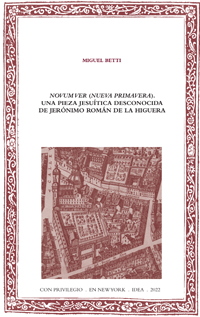 Miguel Betti, Novum ver (New Spring). An unknown Jesuit piece by Jerónimo Román de la Higuera, New York, IDEA, 2022.
Miguel Betti, Novum ver (New Spring). An unknown Jesuit piece by Jerónimo Román de la Higuera, New York, IDEA, 2022.
ISBN: 978-1-952399-08-4
The Jesuit Jerónimo Román de la Higuera (1537-1611) was a Toledan historian and professor who went down in posterity as one of the greatest forgers of Spanish historiography, for having produced a series of "false chronicles" in Latin attributed to various authors of Late Antiquity and the Middle Ages average. However, we know today that this author also dedicated part of his life to composing a B number of poems and at least two dramatic works that were never published. This Issue presents for the first time one of these unpublished plays entitled Novum Ver (New Spring), written around 1593 and preserved in the archives of the Royal Academy of History (Madrid). It is one of the many plays that were composed in the different schools of the Society of Jesus on the framework of some festivity, to be performed by their students, in this case the members of the Congregation of the Anunciata of the high school of Madrid.
Miguel Betti is PhD student in language, Hispanic literature and culture at the University of Geneva, where he teaches seminars on the literature of the Golden Age. He completed programs of study of Philosophy and Letters in Buenos Aires, Paris and Geneva. Currently, his most recent works of research focus on various aspects of aurisecular literature and Spanish-American colonial history, and particularly on the life and work of the Toledo Jesuit Jerónimo Román de la Higuera.
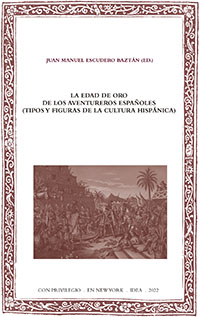 Juan Manuel Escudero Baztán (ed.), La Edad de Oro de los aventureros españoles (tipos y figuras de la cultura hispánica), New York, IDEA, 2022.
Juan Manuel Escudero Baztán (ed.), La Edad de Oro de los aventureros españoles (tipos y figuras de la cultura hispánica), New York, IDEA, 2022.
ISBN: 978-1-952399-07-7
In the Spain of the sixteenth and seventeenth centuries, daily existence was often reduced to surviving in bad ways. Those were good times for extraordinary men and women with an adventurous spirit. From those who decided one fine day to get on a ship and travel the ocean in search of the riches and honor denied them by the mother country, who arrived in the newly discovered Indies in meager handfuls, to those who fought hand to hand in the different war scenarios of Europe, with the inexhaustible arrogance of those who had nothing to lose, and who often fought in pitiful conditions, without adequate supplies and beset by hunger and thirst. But also the futility of common life in the Golden Age made existence itself a daily adventure, full of trades and affairs that today seem to our eyes just as extraordinary. This Issue, which gathers contributions from several specialists in Golden Age literature, wants to pay a well-deserved tribute to these free spirits, authentic adventurers of that time.
Juan Manuel Escudero Baztán is Senior Associate Professor of the University of La Rioja. He has also been a professor and researcher at the group de research Siglo de Oro (GRISO) of the University of Navarra. He is a full member of CECE (Centro para la Edición de los Clásicos Españoles) and director of Cuadernos de research Filológica. He currently directs the group of research on Spanish theater since Early Modernity (TEMT). He has published numerous works on aurisecular theater, Calderón de la Barca, Lope de Vega, Luis Quiñones de Benavente and other minor playwrights.
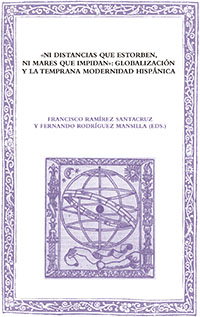 Francisco Ramírez Santacruz and Fernando Rodríguez Mansilla (eds.), "Ni distancias que estorben ni mares que impidan": globalización y la temprana modernidad hispánica, New York, IDEA, 2022 .
Francisco Ramírez Santacruz and Fernando Rodríguez Mansilla (eds.), "Ni distancias que estorben ni mares que impidan": globalización y la temprana modernidad hispánica, New York, IDEA, 2022 .
ISBN: 978-1-952399-02-2
The works gathered in "Ni distancias que estorben, ni mares que impidan": globalización y la temprana modernidad hispánica seek to bring to light the links that unite the Hispanic world of the 16th and 17th centuries, considering, in fact, inevitable linguistic, social or even racial tensions of the time, around themes such as authority, the literary language , honor, religion, etc. In short, this collection of programs of study aims to establish a dialogue with the usual colonialist criticism and the old-fashioned prejudices of certain peninsular critics through a global perspective: a thorough understanding of early modernity as an integrated whole, which was known at the time as the Hispanic monarchy. This philological approach intends to leave aside extemporaneous readings and old ideological barriers around the texts addressed.
Francisco Ramírez Santacruz is Full Professor at the University of Fribourg (Switzerland). D. in Romance Languages and Literatures from Harvard University and former scholarship recipient of the Alexander von Humboldt Foundation, he is a specialist in early modern Hispanic literature and culture on both sides of the Atlantic and 20th century Spanish-American literature. He has been Visiting Professor at multiple universities in the United States and Europe.
Fernando Rodríguez Mansilla is an associate member of the GRISO (group de research Siglo de Oro) of the University of Navarra and of the PEI (project programs of study Indianos). He is currently Senior Associate Professor at Hobart and William Smith Colleges (Geneva, New York). He is the author of the books Picaresca femenina de Alonso de Castillo Solórzano ( 2012), El Inca Garcilaso en su Siglo de Oro (2019) and En los márgenes del Siglo de Oro (2020). He has also published works on Cervantes, Quevedo, the picaresque novel, Lope de Vega, María de Zayas and colonial literature.
Almudena Vidorreta, Theatre, power and printing in Spanish Sardinia, New York, IDEA, 2021.
ISBN: 978-1-952399-01-5
Theatre, power and printing in Spanish Sardinia deals with the Spanish-Italian culture born in Cagliari, its capital, through the literature written, performed and published around the viceroys who exercised their mandate during the decline of the Habsburgs. Political and religious conflicts, dramatised accounts of events and dialogued loas can be found quotation in the palatial letters of the second half of the 17th century, which are dealt with here in their historical context A purpose of a loa by José Navarro. Like so many other poets of his time, this Aragonese author, who was secretary to Juan Bautista Ludovisi, Prince of Piombino and Viceroy of the island, ventured across the Mediterranean as part of the retinue of the Infanta Margaret of Austria on her journey to Vienna, of whose vicissitudes he gives an account in the Loa para la comedia de la fuerza del natural (Loa for the Comedy of the Force of Nature, 1666). In addition to the philological edition of the dramatic text, it includes a study of the trajectory publishing house of the stamp in which it was published, the Galcerín family, a family of printers at the service of the interests of the Crown. These materials are an opportunity to learn more about this still little-travelled period, that of Spanish rule in Baroque Sardinia, and to add new pages to the history of the Spanish viceroyalties.
Almudena Vidorreta holds a PhD in Philology Hispánica from the University of Zaragoza, where she specialised in Spanish golden letters (Study and edition of the "Poesías varias" by José Navarro, 1654), and a PhD in Latin American Literature from the Graduate Center, The City University of New York, with a work on the reception of Teresa de Jesús in literature written by women from a transatlantic perspective. She has developed her degree program as professor and researcher in North American institutions (Fordham University, Haverford College or the high school Cervantes in Manhattan, among others) and Spanish (University of Zaragoza and International University of La Rioja, where she currently works). Since 2017, she is board member of the board Directive of the association International Siglo de Oro (AISO).
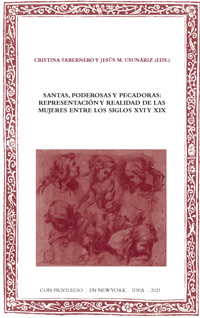 Cristina Tabernero and Jesús M. Usunáriz (eds.), Santas, poderosas y pecadoras: representación y realidad de las mujeres entre los siglos XVI y XIX, New York, IDEA, 2021.
Cristina Tabernero and Jesús M. Usunáriz (eds.), Santas, poderosas y pecadoras: representación y realidad de las mujeres entre los siglos XVI y XIX, New York, IDEA, 2021.
ISBN: 978-1-952399-00-8
Santas, poderosas y pecadoras: representación y realidad de las mujeres entre los siglos XVI y XIX, brings together eighteen contributions in which the analysis of the feminine speech in the centuries of Modernity in the peninsular and American sphere is approached from disciplines such as Literature, Linguistics, History, Art or Thought. The reader will be able to contemplate a wide variety of female types described in the imaginary and recreating sentences or verses of dramas, comedies and poems, or reworked from the historical experiences of real characters. Thus transgressive women, saints and saintesses, queens, scholars, prostitutes, admired, satirized or hated women, real or imaginary, sometimes stereotypes, who live and survive their time, make their presence felt. The contributions of these specialists, with the female subject in perspective, stimulate a better understanding of the social reality of past centuries, regardless of anachronisms.
Cristina Tabernero is Professor of Spanish language and member of group de research Siglo de Oro (GRISO) at the University of Navarra. Her research has focused mainly on the history of Spanish and its varieties. In recent years, she has been involved in the study of insults in the 16th and 17th centuries from different perspectives and in the characterisation of the female speech in the Modern Age. She is the author of Diccionario de injurias de los siglos XVI y XVII (2019) (with Jesús M. Usunáriz).
Jesús M. Usunáriz is Full Professor of Modern History and member of the group of research Siglo de Oro (GRISO) of the University of Navarra. His programs of study has focused on the International Office of the Hispanic Monarchy and on the social and cultural history of the 16th-18th centuries. Among other publications, he is the author of Spain in Germany: the Thirty Years' War in the chronicles and relations of events (2016) or the Dictionary of insults of the sixteenth and seventeenth centuries (2019) (with Cristina Tabernero). He is director of the journal report y Civilización and of the collection Library Services Áurea Digital (BIADIG) of the GRISO.
Francisco Martínez Montiño, Arte de cocina en que se trata el modo que más se usa de guisar en este tiempo en viandas de carne y pescado, pastelería, conservería y bizcochería y lo tocante para el regalo de enfermo, ed. Jesús M. Usunáriz and Magalí Ortiz Martín, New York, IDEA, 2021.
ISBN: 978-1-938795-55-8
To speak of haute cuisine in the Golden Age, it is necessary to refer to the figure of the master Francisco Martínez Montiño, chief cook to King Philip III, author, in 1611, of the book Arte de cocina, which deals with the most common way of cooking meat and fish dishes, pastries, preserves and biscuits, as well as those relating to the gift of the sick, of which twenty-five editions were published between the 17th and 19th centuries, test , which is a testimony to its success and prestige. Montiño's recipe book compiles more than half a thousand recipes in which, in clear and sober language, he explains how to prepare, prepare and present the most diverse dishes, from the simplest to the most fantastic, from the most traditional to the most innovative and sophisticated, all aimed at a very wide public. Thanks to its preliminary study and an extensive and useful glossary, this edition of the book analyses ingredients, techniques, spaces, tastes, the relationship between food and health, and the image and role of professional chefs. In addition, it attempts to approach the way in which gastronomic culture was understood in the courtly world of the Golden Age and its influence on Spanish kitchens and kitchens up to the contemporary period.
Jesús M. Usunáriz is Full Professor of Modern History and member of the group of research Siglo de Oro (GRISO) of the University of Navarra. His programs of study has focused on the International Office of the Hispanic Monarchy and on the social and cultural history of the 16th-18th centuries. Among other publications, he is the author of Spain in Germany: the Thirty Years' War in the chronicles and relations of events (2016) or the Dictionary of insults of the sixteenth and seventeenth centuries (2019) (with Cristina Tabernero). He is director of the journal report y Civilización and of the collection Library Services Áurea Digital (BIADIG) of the GRISO.
Magalí Ortiz Martín has a degree in History and Journalism from the University of Navarra. She has worked at elBulliFoundation, where she has participated in several projects such as elBulliLab (2016) or elBulli1846 (2021), both related to the History of Gastronomy and creativity. He has also collaborated with the department of speech of group of IXO restaurants, including Mugaritz and Nerua, and with that of the Six Senses hotel chain in Portugal.
Martina Vinatea, The "speech in praise of poetry": a declaration of principles of the poets of the New World, New York, IDEA, 2021.
ISBN: 978-1-938795-50-3
The speech en loor de la poesía, an anonymous paratext that prefaces the Primera parte del Parnaso antártico de obras amatorias, by Diego Mexía de Fernangil (1608), is an exponent of the group of poems aimed at praising and defending poetry from those who do not consider the importance of their empire. This defence is made on behalf of a group of authors who, in the last decade of the 16th century and the first two decades of the 17th century, carried out their literary work and formed the so-called Academia Antártica.
The speech is an attempt to reflect on the act of writing poetry with two important additions: the art of writing poetry in the New World, specifically in Peru, and the art of writing by the feminine hand. It is also clearly an attempt to establish a new canon which is beginning to be built in the New World and which is based on the appropriation of classical models by American writers. The speech should be seen as a more ambitious poem than the mere introduction to Mexía's translation. In fact, it is a work that is linked to the foundation of the American Creole project .
Martina Vinatea, PhD in Hispanic Philology and PhD in History, is a senior lecturer at the department Académico de Humanities of the Universidad del Pacífico (Lima, Peru) and co-director of the Centro de programs of study Indianos (CEI) / project programs of study Indianos (PEI) of the University of Navarra and the Universidad del Pacífico. Her recent work has focused on women's convent poetry in Spain and viceroyal Peru and on the works of the poets of the Academia Antartica.
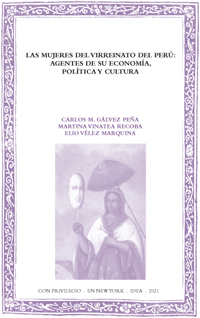
Carlos M. Gálvez Peña, Martina Vinatea Recoba and Elio Vélez Marquina, Las mujeres del virreinato del Perú: agentes de su Economics, política y cultura, New York, IDEA, 2021.
ISBN: 978-1-938795-74-9
The American continent, during the modern era, was a woman. The writers of the sixteenth and seventeenth centuries imagined it as an untamed Amazon surrounded by wild fauna. And, above all, anthropophagous. It was the antithesis of the Christian city, where idolatry reigned. It was then that the viceroyalties established a new humanity, where the woman was more than the soldier's companion. The wombs of American women gestated the life of the lineages that, since the 17th century, have renewed the pact with which America is linked to the rest of the world. The present Issue reviews the symbolic categories with which the female body was thought and, above all, contributes two programs of study that, from biography, trace the coordinates of the sphere of action of women who, from an apparent anonymity, exerted their influence in the literate culture and in the political sphere.
Martina Vinatea Recoba, PhD in Hispanic Philology and PhD in History, is Senior Lecturer at the Universidad del Pacífico (Lima, Peru) and Co-Director of the Centro de programs of study Indianos (CEI) / project programs of study Indianos (PEI) of the University of Navarra and the Universidad del Pacífico. Her recent work has focused on Hispanic and viceregal Peruvian women's convent poetry and on the works of the poets of the Academia Antártica.
Carlos Gálvez Peña, PhD in Latin American History and Early Modern History, is Adjunct Professor of History of the department of Humanities of the Pontificia Universidad Católica del Perú and Professor of department of Humanities of the Universidad del Pacífico (Lima, Peru). His most recent work deals with the problem of political representation and historical sources in the Peruvian viceroyalty during the seventeenth century.
Elio Vélez Marquina holds a Master's degree in Spanish-American Literature and is a professor at the department Académico de Humanities of the Universidad del Pacífico (Lima, Peru). He is also coordinator of project programs of study Indianos (PEI) at the University of Navarra and the University of the Pacific. His recent work explores the complex relationships between iconography and the creation of a Creole speech during the 17th century.
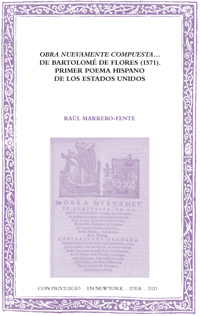
Raúl Marrero-Fente, Obra nuevamente compuesta... de Bartolomé de Flores (1571). First Hispanic poem in the United States, New York, IDEA, 2021.
ISBN: 978-1-938795-81-7
This book presents a study and critical edition of the poem Obra nuevamente compuesta... (1571) by Bartolomé de Flores, considered the first poem in Spanish about North America and the only poetic testimony to Pedro Menéndez de Avilés's victory over the French Huguenots in Florida in 1565. The poem offers one of the earliest poetic descriptions of nature and Native Americans in the 16th century. The formal characteristics of the work, which belongs to the literary genre of verse accounts of events printed on sheets of string, are examined. A close reading of the poem is also made in order to understand its importance in the history of 16th-century colonial poetry. Finally, it includes a facsimile reproduction of the only known copy of the work, preserved in the John Carter Brown Library.
Raúl Marrero-Fente is Full Professor of Hispanic Literatures and Law at the University of Minnesota and a corresponding member of the North American Academy of Spanish language . He is researcher associate of group of research Siglo de Oro (GRISO) at the University of Navarra, and a member of the Center for programs of study of Colonial America (CEAC) at the Universitat Autònoma de Barcelona. He is the author, publisher or co-editor of fifteen books and seventy articles on Spanish and Latin American literature, especially of the Golden Age and the colonial period.
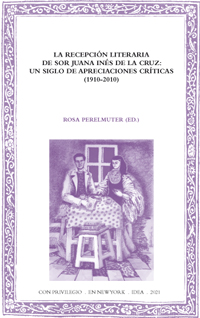
Rosa Perelmuter (ed.), The Literary Reception of Sor Juana Inés de la Cruz: A Century of Critical Appraisals (1910-2010), New York, IDEA, 2021.
ISBN: 978-1-938795-69-5
The present Issue has been prepared thanks to the partnership of thirteen scholars who accepted the task of dealing with the literary reception of Sor Juana Inés de la Cruz during a century of commentaries (1910-2010). For each of the decades of our Issue the contributors have had as goal to go through in detail -although with admitted subjectivity- the critical production during their decade and thus avoid the subject of generalizations that a more encompassing look would perhaps arouse. The result has been a set of essays that bear the individual stamp of each researcher, but that in any case offer different approaches to the paradigms of reading Sorjuan's work. In these chapters the reader will find both the essays and the bibliographies of each decade. The latter, prepared by the diligent bibliographer Luis Villar, allow us to see as a whole all that was written about Sor Juana in that decade; the essays gather what the authors interpreted from that information, emphasizing the topics that seemed most relevant to them among the critical opinions of the particular decade. Our readers will thus be able to verify the continuity of what Elías Trabulse already observed in 1975, that the twentieth century "has invented a variety of Sor Juanas, from the mystic, ascetic and beatific to the psychoneurotic; from the precursor of Mexican nationalism to the emancipator of women and, finally, from the sum and compendium of the "multiform" and "magical" of Gongorian poetry to the prolific author whose writings -which could be said to be encyclopedic-, "filled the Hispanic world...."".
Rosa Perelmuter is Professor at department of Romance Studies at the University of North Carolina at Chapel Hill, where she specializes in the literature of the Spanish-American colonial period. She received her doctorate in Romance Languages from the University of Michigan. She has published widely on a range of writers from Christopher Columbus to Manuel Puig. She has two monographs on Sor Juana: Noche intelectual: La oscuridad idiomática en el "Primero sueño" (UNAM, 1982) and Los límites de la femineidad en Sor Juana Inés de la Cruz: Estrategias retóricas y recepción literaria (Iberoamericana / Vervuert, 2004). She is currently preparing a book on the Hebrew community in Cuba graduate Yiddish Cuba: Identity, Culture, Community (1920-1960).
Victoriano Roncero López (ed.), Antología de la literatura burlesca del Siglo de Oro. Burlas picarescas, New York, IDEA, 2020.
ISBN: 978-1-938795-73-2
This Issue of the Antología de la literatura burlesca del Siglo de Oro, undertaken in the framework of the project Identidades y alteridades. La burla como diversión y arma social en la literatura y cultura del Siglo de Oro ( FFI2017-82532-P, MICINN/AEI/-FEDER, EU), is devoted to Burlas picarescas. The Spanish picaresque novel continues the humor of the buffoonish literature initiated in Spain in the 15th century by poets such as Villasandino or Antón de Montoro, and continued in the early 16th century by the prose work of Villalobos or don Francés de Zúñiga. From Lazarillo de Tormes onwards, the new genre appropriated the subject of carnivalesque and demystifying humor of the literature of jesters to personify it in the rogue and in his graces and misfortunes. In the present Issue we have tried to present a wide anthology of mockery in several picaresque texts, some very well known: Lazarillo de Tormes, Guzmán de Alfarache and El Buscón; others less read, but which contain funny episodes of a comicality typical of European carnivals and courts: El Guitón Onofre, La pícara Justina, La segunda parte del Lazarillo by Juan de Luna, Teresa de Manzanares and El high school program Trapaza, by Castillo Solórzano, Lazarillo de Manzanares by Cortés de Tolosa, La desordenada codicia de los bienes ajenos by Carlos García, and, finally, the novel that closes the Issue and the genre of the picaresque-bufonesque novel, the Estebanillo González.
Victoriano Roncero López is Full Professor of Spanish literature in the Department of Hispanic Languages and Literature at Stony Brook University (USA). He is director of IDEA, Hipogrifo, member of GRISO and the Center for the Edition of Spanish Classics. He has published books on Quevedo's Humanism, his historiographic concept and on humor in the picaresque novel. He has edited an anthology of Castilian cancioneril poetry (with Brian Dutton), the poetry of Fernando de Herrera, an anthology of satirical burlesque poetry of the 16th and 17th centuries (with Ignacio Arellano), Quevedo's muse Clío (with Ignacio Arellano); Quevedo's El Buscón, El tribunal de la justa venganza; Tirso de Molina's La fingida Arcadia, Calderón's El saber del mal y el bien, as well as autos sacramentales by Lope de Vega (La privanza del hombre) and Calderón (El primer blasón del Austria and El lirio y el azucena). He has co-edited a series of Calderonian entremeses and mojigangas.
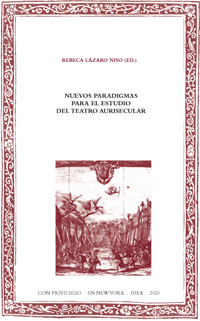
Rebeca Lázaro Niso (ed.), Nuevos paradigmas para el estudio del teatro aurisecular, New York, IDEA, 2020.
ISBN: 978-1-938795-72-5
The proliferation of new technologies and other complementary aspects to its environment, developed since the end of the last century, make possible the approach to the dramatic text from other less conventional and more novel perspectives within the Hispanic philological tradition. The different works that are collected in this Issue want to account, therefore, to that innovative spirit through the consideration of new paradigms that approach the literary fact seen as an amalgam of elements that shed new light on the preponderance of the text and its adjacents. It is a question, then, of presenting to the reader other forms of critical analysis that, by force, suppose a new look within the panorama of the programs of study on the aurisecular theater.
Rebeca Lázaro Niso, PhD in Philology , is a lecturer at the University of La Rioja. She is a specialist in Golden Age Literature, specifically in the dramaturgy of Álvaro Cubillo de Aragón. Her field of study also includes Innovation professor related to Digital Humanities and the didactic application of literature in academic contexts. He has been a member of the teams of research BITAE, DhuMAR and Teatro español del Siglo de Oro.
Carlos F. Cabanillas Cárdenas, Arnulfo Herrera, Fernando Rodríguez Mansilla and Martina Vinatea (eds.), Antología de la literatura burlesca del Siglo de Oro, Burla y sátira en los virreinatos de Indias. Una antología provisional, New York, IDEA, 2020.
ISBN: 978-1-938795-71-8
In the framework of the Anthology of the burlesque literature of the Golden Age, undertaken from the project Identidades y alteridades. La burla como diversión y arma social en la literatura y cultura del Siglo de Oro ( FFI2017-82532-P, MICINN/AEI/FEDER, UE), this Issue is dedicated to the materials that we can call indianos. This book is an attempt to disseminate some outstanding compositions and authors. It does not pretend to be exhaustive or even to outline a basic systematic panorama, but to show some representative texts in the field of the two great viceroyalties. For the Peruvian, the poems of Caviedes and the Ciego de la Merced and the prose texts extracted from chronicles of the Indies constitute a limited but significant example. For the New Spain, to the poetic anthology is added a version of the famous scatological opuscule of Quevedo dedicated to the last eye, a manifestation of the validity of a model like that of Don Francisco, very perceptible also in a poet like Caviedes.
Carlos F. Cabanillas Cárdenas, graduate from the Pontificia Universidad Católica del Perú and PhD from the University of Navarra, currently works as a professor and researcher at the Norwegian Arctic University in Tromsø. His fields of study are the literature of the Golden Age and, in particular, the work of the poet Juan del Valle y Caviedes, whose work he has edited and published several articles.
Arnulfo Herrera has been a professor of Spanish literature of the Golden Age at the National Autonomous University of Mexico since 1978. He is attached to high school de Investigaciones Estéticas, where he works on Mexican literature.
Fernando Rodríguez Mansilla is Senior Associate Professor at Hobart and William Smith Colleges (Geneva, New York). He is the author of the books Picaresca femenina de Alonso de Castillo Solórzano ( 2012) and El Inca Garcilaso en su Siglo de Oro (2019). In addition, he has published works on Cervantes, Quevedo, the picaresque novel, Lope de Vega, María de Zayas and colonial literature.
Martina Vinatea, PhD in Philology Hispanic and History, is Senior Lecturer at the Universidad del Pacífico (Peru) and Co-Director of the Centro de programs of study Indianos (CEI) / project programs of study Indianos (PEI). She is currently researching women's convent poetry and poetry of viceregal Peru.
Celsa Carmen García Valdés (ed.), Antología de la literatura burlesca del Siglo de Oro, Entremeses de burlas, New York, IDEA, 2020....
ISBN: 978-1-938795-70-1
The present Issue contains a set of entremeses -one of them unpublished- which, due to their special characteristics, are representative, within the gigantic world of entremeses, of a subgenre: entremeses de burlas. The central motif of each of the twenty selected pieces is, precisely, a mockery, but it is not just any mockery: it has to be a witty mockery -wit is highly valued by the society of the time-; it has to have a purpose and carry it out; and it has to be inoffensive, eutrapelic. The anthology closes with two more pieces in which the structural mockery, while being ingenious and achieving its goal, does not fulfill the condition of not harming. Thus the reader can compare and see what the difference is between the entremeses de burlas and other entremeses that also have mockery.
Celsa Carmen García Valdés, PhD in Philology Románica, has been Professor of teaching average , Associate Professor at the Universities of Oviedo and Navarra, and Technical Advisor to the Ministry of Education in the Rabat and Buenos Aires delegations. She has been a member of the group de research Siglo de Oro (GRISO) at the University of Navarra since its creation in 1990. As a scholar of Golden Age literature, she has published, between programs of study and critical editions, some thirty books, as well as numerous chapters and articles in collective works and journals of the specialization program.
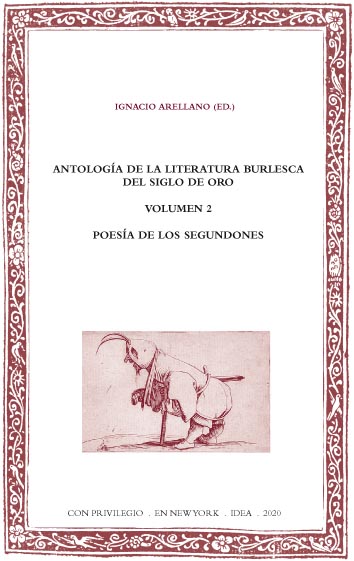
Ignacio Arellano (ed.), Antología de la literatura burlesca del Siglo de Oro. Issue 2, Poesía de los segundones, New York, IDEA, 2020.
ISBN: 978-1-938795-77-0
The first Issue of the Antología de la literatura burlesca del Siglo de Oro, undertaken in the framework of the project Identidades y alteridades. La burla como diversión y arma social en la literatura y cultura del Siglo de Oro ( FFI2017-82532-P MICINN/AEI, FEDER, UE), published by this collection Batihoja, was devoted to the three major names of the Golden Age poetry, Lope, Góngora and Quevedo. This second one gathers a selection of those who can be called second in relation to the first ones, and who in turn have different categories. Surely more names could be added; the poets of transatlantic Spain are excluded here, because they will be included in a specific Issue destined to the burlesque poetry of the viceroyalties of the Indian viceroyalties. It is, therefore, one of many possible anthologies. However, the high Degree of codification of themes and expressive resources -the reiteration of many jokes, burlesque motifs and puns will be noted- makes this selection problem less relevant than it seems, since all these poems are very representative of the genre. The main contribution of this Issue consists of the annotation, which attempts to clarify for a lay reader the innumerable joking references, allusions and games of all kinds subject.
Ignacio Arellano is Full Professor of the University of Navarra, where he directs the group de research Siglo de Oro (GRISO), which develops a wide program of research that includes the critical edition of the autos of Calderón and Lope de Vega, the complete theater of Tirso de Molina and Bances Candamo or the publication of La Perinola. Revista de research quevediana and the yearbook Calderoniano.
Belinda Palacios, Entre la historia y la ficción: estudio y edición de "Historia del Huérfano" de Andrés de León (1621), New York, IDEA, 2020.
ISBN: 978-1-938795-79-4
The Hispanic Society of America preserves a manuscript copy that must have been printed in Seville in 1621, but for some reason never appeared in print. It is the Historia del Huérfano, by Andrés de León, a text that narrates in third person the life of a young man from Granada. At only fourteen years of age, the Orphan embarks for the New World, beginning a series of adventures and misfortunes that will lead him to travel through South America and the Caribbean as well as a good part of Spain and Italy. The story extends over 328 pages and is accompanied by more than one hundred poems attributed to the protagonist, but possibly written by the author of the work. This Issue proposes a critical edition of the manuscript, accompanied by a rigorous apparatus of notes and an introductory study intended to facilitate the understanding of the text.
Belinda Palacios holds a PhD in Colonial Hispanic Literature from the University of Geneva. She is currently a postdoctoral fellow at the University of Geneva, where she has also been teaching courses and seminars on colonial and contemporary Hispanic American literature and an introduction to textual analysis since September 2014. His research focuses especially on the Chronicles of the Indies and contemporary Peruvian literature. She has participated in numerous conferences in Switzerland and abroad.
Fernando Rodríguez Mansilla, En los márgenes del Siglo de Oro. Vidas imaginarias de los siglos XVI y XVII, New York, IDEA, 2020.
ISBN: 978-1-938795-68-8
En los márgenes del Siglo de Oro (On the Margins of the Golden Age ) aims, through fiction, to recover characters and issues that were left in that blank space on paper and have gone largely neglected: ignored women around consecrated subjects; writers who were left behind, for various reasons, in the current literary canon; as well as little-known episodes in the small history of those centuries, such as the sick galley slaves whom nobody, except a civil servant, took pity on or the forgotten lady who inspired a very famous literary character in her time. With diverse textual modalities, these eight stories are also an exercise in style that reworks the literary expression of the Golden Age, with its commonplaces, its lexicon and some of its narrative moulds.
Fernando Rodríguez Mansilla is an associate member of GRISO (group of research Siglo de Oro) and PEI (project programs of study Indianos). He is currently Senior Associate Professor at Hobart and William Smith Colleges (Geneva, New York). He received the award "Luis Andrés Murillo" for the best article cervantino of 2014 given by the Cervantes Society of America. He is the author of the books Picaresca femenina de Alonso de Castillo Solórzano ( 2012) and El Inca Garcilaso en su Siglo de Oro (2019). In addition, he has published works on Cervantes, Quevedo, the picaresque novel, Lope de Vega, María de Zayas and colonial literature.
Rosa M. Calafat Vila, Catalina Monserrat Roig and Gabriel Seguí Trobat, El "Nou Mètode" de Antoni Portella, una gramàtica latina en language catalana: Menorca y Mallorca en la Ilustración, New York, IDEA, 2020.
ISBN: 978-1-938795-67-1
This is an important piece of 18th century Catalan lexicology, hitherto unstudied and, to a certain extent, forgotten. The Nou mètode, a work written by the Menorcan Antoni Portella in 1762 and republished in 1783, is surprising for its methodological content, following the dictates of Port-Royal. It is a work of unquestionable interest, which needed a critical edition and a study highlighting its linguistic, sociolinguistic and grammatical value, together with a comparative analysis of the two editions. Its publication was accompanied by controversy among the scholars of its time due to the fact that it was written in Catalan, contravening the dictates of the committee of Castile, and, at the same time, intended to enter skill with the methods in use in Mallorca. Hence the civil service examination to the Menorcan grammarian and his work, the fruit of a Menorca that was committed to the cultivation of the autochthonous language in all areas, outside the standardising process dictated by the Nueva Planta Decrees.
Rosa M. Calafat Vila holds a PhD in Philology Catalan and is a full professor at the UIB, as well as Coordinator of Language Policy at the same university, and a founding member of the IEHM. Her main lines of research are in the fields of historical sociolinguistics and textual pragmatics. She has been awarded the award de essay Josep Irla (2010) and has recently been awarded the Ciutat de Palma 2018 prize for novels.
Catalina Monserrat Roig is an interim lecturer at the UIB, where she teaches teaching Latin language and is a researcher at the IEHM. Her lines of research focus on Latin linguistics and the survival of the classical tradition in Spanish humanism.
Gabriel Seguí Trobat is Senior Associate Professor at the Ateneu Universitari Sant Pacià, Barcelona, and at the high school Superior de Liturgia de Barcelona. His line of research is the medieval Roman liturgy from the theological and philological point of view.
Felipe B. Pedraza Jiménez, El "Arte Nuevo" de hacer comedias de Lope de Vega. Context and text, New York, IDEA, 2020.
ISBN: 978-1-938795-63-3
In the Arte nuevo de hacer comedias en este tiempo, Lope de Vega tackles, sometimes with cynical heartbreak, other times with enthusiasm and categoricalness, the complex dialectic relationship between artists and their audiences in the birth of modern theatre. The articles in this booklet attempt to sketch with methodological rigour the context in which this speech was born, its origin and significance, the academic framework in which it was conceived, its editorial vicissitudes, the precise scope of its degree scroll, its relations with other works by the author.... These preliminary questions are the curtain that rises to give way to the text, critically edited, with the variants of all the important testimonies.
Felipe B. Pedraza Jiménez is Full Professor of Spanish literature (theory and history of theater) at the University of Castilla-La Mancha and director of the high school Almagro of classical theater. He has devoted his research work to the general history of Spanish and Latin American literature and to programs of study on the Golden Age. He has offered critical editions of Lope de Vega's major works: Rimas, Arte nuevo de hacer comedias and La vega del Parnaso (dir.), and has dedicated articles and monographic volumes to some of the most notable authors of the Spanish Baroque: Lope de Vega, Rojas Zorrilla, Calderón, Cervantes, Enríquez Gomez.... In the field of dramatic theory, he has published Drama, escena e historia. Notas para una Philosophy del teatro.
Ignacio Arellano, J. Enrique Duarte and Carlos Mata Induráin, Los Santos Niños Justo y Pastor en el teatro del siglo XVI (la "Representación" de Francisco de las Cuevas y el anónimo "Auto del martirio", New York, IDEA, 2020.
ISBN: 978-1-938795-66-4
At the beginning of the 4th century, in the ancient Complutum, the young Christians Justo and Pastor, who soon became known as "the Holy Children", were martyred. Their cult spread little by little, but around the year 732, in times of Muslim domination, their relics were transferred to northern territories, finally ending up in the church of San Pedro el Viejo in Huesca. The people of Complutense would have to wait several centuries, until 1568 to be exact, to see the precious remains of the Holy Children on their soil once again. Alcalá celebrated the return of the relics in style. The festivities included the staging of two plays: the Representation of the martyrs Justo and Pastor written by Francisco de las Cuevas and an Auto del martirio de Sant Justo y Pastor by the master Alonso de Torres, which is perhaps - although it is not possible to say for sure - the second of the works that we publish here as anonymous, which has been preserved in the Codex of old plays. These are two important dramatic pieces not only for Alcalá de Henares, but also in the process of development of Spanish religious theatre in the second half of the 16th century.
Ignacio Arellano is Full Professor of the University of Navarra, where he directs the group de research Siglo de Oro (GRISO), which develops a wide program of research that includes the critical edition of Calderón's autos, the complete theater of Bances Candamo or the publication of La Perinola and the Calderonian yearbook .
J. Enrique Duarte, Senior Associate Professor , is researcher of GRISO. His interest is focused on the theater of the Golden Age (Calderón, Tirso, Bances Candamo...), having published numerous editions of comedies and autos sacramentales. He is Secretary of La Perinola. Revista de research quevediana and its collection of "Anejos".
Carlos Mata Induráin, Senior Associate Professor , is researcher and Secretary of GRISO and IDEA. His lines of research focus on Spanish literature of the Golden Age: burlesque comedy, Calderón's autos sacramentales, Cervantes and the quixotic and Cervantes' recreations, plays about the Arauco war, etc.
Ignacio Arellano (ed.), Antología de la literatura burlesca del Siglo de oro. Issue 1, Poesía de Lope de Vega, Góngora y Quevedo, New York, IDEA, 2020.
ISBN: 978-1-938795-65-7
The universe of mockery in the Golden Age offers many complications and difficulties to the reader and the scholar. Some questions attached to these problems are attempted, if not resolved, at least raised in the project Identidades y alteridades. La burla como diversión y arma social en la literatura y cultura del Siglo de Oro ( FFI2017-82532-P MICINN/AEI, FEDER, UE), in whose framework this Issue has been prepared, which deals with the burlesque poems of the three major poets of the Baroque: Lope de Vega, Góngora and Quevedo. To them we owe the three fundamental poetic repertoires of the period: the Rimas humanas y divinas of Lope's graduate Tomé de Burguillos, the Chacón manuscript of Góngora's poems and the edition of Quevedo's El Parnaso español by José González de Salas. From these three essential sources we have chosen a series of poems characterized by the burlesque approach , abundant in mockery and with intense satirical component, because in the internship it is impossible to separate these sides of the jocoseria literature, all mixed of mockery and truth, without taking into account that the mockery is not in itself alien to the truth.
Ignacio Arellano is Full Professor of the University of Navarra and has been Visiting Professor at numerous universities around the world. He directs the group of research Siglo de Oro (GRISO) of the University of Navarra, where he develops an extensive program of research on the Golden Age, including the project critical edition of the complete autos completos of Calderón and Lope de Vega, of the complete theater of Tirso de Molina and Bances Candamo, or the publication of La Perinola. Revista de research quevediana and the yearbook Calderoniano.
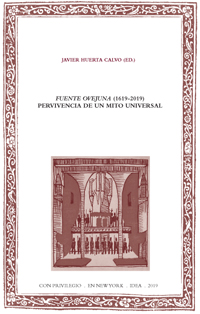
Javier Huerta Calvo (ed.), source Ovejuna (1619-2019). Pervivencia de un mito universal, New York, IDEA, 2019.
ISBN: 978-1-938795-60-2
This book brings together the interventions that took place at conference on Spanish University Theatre, held in Madrid in 2019, the year that marks the fourth centenary of the publication of source Ovejuna, perhaps Lope's degree scroll which, for reasons that are not always strictly dramatic but openly political, has had a greater resonance on stages all over the world. A piece linked to the programming of university theatres, from the controversial version that Federico García Lorca made for La Barraca in 1933 to the no less controversial one presented by Alberto Castilla at the Festival de Nancy in 1965, its fortune in other fields and spectacular forms, such as ballet and cinema, is also considered.
Javier Huerta Calvo is Full Professor of Spanish Literature at the Complutense University of Madrid. He has devoted much of his research to the study of the theater of the Golden Age, particularly in its brief and burlesque forms(Teatro breve de los siglos XVI y XVII, El teatro breve en la Edad de Oro, Una fiesta burlesca del Siglo de Oro, El nuevo mundo de la risa), as well as the theater of the twentieth century, with several editions and monographs on Benavente, García Lorca and other authors.
|
Index |
Page |
|
11 |
|
|
The printed reception of a classic |
|
|
GUILLERMO GÓMEZ SÁNCHEZ FERRER |
15 |
|
RAFAEL GONZÁLEZ CAÑAL |
35 |
|
JOSÉ ENRIQUE LÓPEZ MARTÍNEZ From the Republic to Francoism |
49 |
|
JAVIER DOMINGO MARTÍN |
73 |
|
FERNANDO DOMÉNECH RICO |
93 |
|
MARÍA JESÚS BAJO MARTÍNEZ |
111 |
|
DIEGO SANTOS SÁNCHEZ |
125 |
|
JAVIER HUERTA CALVO |
145 |
|
M.ª ÁNGELES VARELA OLEA source Ovejuna outside Spain |
159 |
|
AMY BERNARDI |
187 |
|
ANNE-LAURE FEUILLASTRE |
205 |
|
JORGE BRAGA RIERA |
221 |
|
MAŠA KMET |
243 |
|
VERONIKA RYJIK Other views |
255 |
|
CÉSAR OLIVA |
275 |
|
SERGIO ADILLO RUFO |
287 |
|
MANUEL CANSECO |
301 |
|
JULIO VÉLEZ SAINZ |
311 |
|
ANTONIO SERRANO |
327 |
|
MIGUEL ÁNGEL AULADELL PÉREZ |
343 |
|
WIKTORIA BRYZYS |
383 |
Gleydi Sullón Barreto, Travellers to the New World. Extranjeros en Lima, 1590-1640, New York, IDEA, 2019.
ISBN: 978-1-938795-64-0
Travellers to the New World analyses the integration strategies of foreigners living in Lima in the years 1590-1640. This question is interesting because foreigners, according to the law, agreement , were forbidden to travel to the Indies, let alone trade with them, unless they had obtained a carta de vecindad or naturaleza, or through a royal licence that enabled them to make the journey. The analysis of the notarial deeds reveals not only the presence of foreigners in the social composition of Lima, but also their active participation in the social dynamics of the city. The marriage strategy with a native of the kingdom, the acquisition of real estate, the links created with the city's religious and health institutions, the exercise of a certain profession or official document without any prohibition, and the use of goods or objects common to those used by other Limeños, without signs of a particular excluding identity, are data that suggest - from the social internship - that they lived integrated.
Gleydi Sullón Barreto holds a PhD in History from the Complutense University of Madrid. Author of the book Extranjeros integrados. Portugueseses en la Lima virreinal, 1570-1680 (Madrid, CSIC, 2016), she has specialized in the study of the Portuguese presence in seventeenth-century Peru, basing her research on the analysis of the notarial source . Her interest has also focused on the other foreign presences, and on the knowledge of the social dynamics of viceregal Lima. She is currently a professor at the National University of Piura (UNP), a member of seminar of research in Modern American History (Madrid) and a corresponding researcher at the Centro de Humanities d'Aquém e d'Além-Mar (Lisbon).
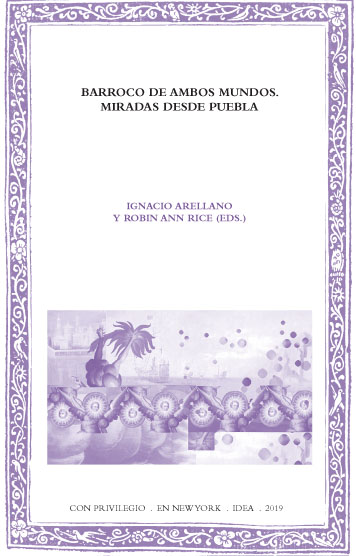
Ignacio Arellano and Robin Ann Rice (eds.), Baroque from Both Worlds. Views from Puebla, New York, IDEA, 2019.
ISBN: 978-1-938795-62-6
Baroque from both worlds. Miradas desde Puebla offers a series of interdisciplinary and transatlantic works on various themes and problems of this period, with particular attention to the modalities of the Baroque of the Indies. The diversity of approaches and motifs addressed, without pretending to be exhaustive, makes it possible to obtain position a basic state of the art that can be very useful for researchers or those who are curious about a cultural phenomenon of such importance on both sides of the ocean.
Ignacio Arellano is Full Professor of the University of Navarra and has been Visiting Professor at numerous universities around the world. He directs the group of research Siglo de Oro (GRISO) of the University of Navarra, where he develops an extensive program of research on the Golden Age, including the project critical edition of the complete autos completos of Calderón and Lope de Vega, of the complete theater of Tirso de Molina and Bances Candamo, or the publication of La Perinola. Revista de research quevediana and the yearbook Calderoniano.
Robin Ann Rice is Professor and full-time researcher at the Universidad Popular Autónoma del Estado de Puebla (UPAEP). A member of the National System of Researchers (SNI), she holds a PhD in Hispanic Philology from the University of Navarra. Her previous programs of study is from the area of Comparative Literature. She is the author of books and articles on Sor Juana Inés de la Cruz, Isabel de la Encarnación, Vélez de Guevara, Lope de Vega, María de Zayas, Mariana de Carvajal and Miguel de Cervantes, among others.
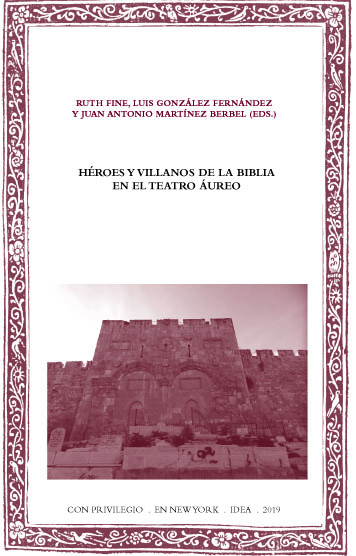
Ruth Fine, Luis González Fernández and Juan Antonio Martínez Berbel (eds.), Héroes y villanos de la Biblia en el teatro áureo, New York, IDEA, 2019.
ISBN: 978-1-938795-53-4
The programs of study of this book reflects on a wide range of key biblical characters, both heroes and villains. It includes, as the ultimate human expression of evil, the Antichrist, or the very example of betrayal represented by the New Testament character Judas Iscariot, the fatal instrument that facilitated the capture and subsequent Crucifixion of Christ. As might be expected, there is also the devil, with his various facets as a promoter of evil and a somewhat burlesque character. Through the story of the unfortunate Tamar, as told by Tirso, the role of the evil brother, Amon, as opposed to the beautiful Absalom, defender of family honor, is studied, as well as how the love affairs (in different forms) found in the Bible were received theatrically. Likewise, and in relation to the previous story, ambiguous characters are evoked, such as King David, both Israelite hero and fallible, sinful and punished monarch. The Issue also presents an extensive essay on the notion of the good king and the bad king. It is, in short, a set of programs of study that delves into the function and scope of a great variety of biblical characters present in aurisecular literature.
Ruth Fine is Professor of Hispanic Philology and Director of department of programs of study Spanish and Latin American at the Hebrew University of Jerusalem. She specialises in the literature of the Golden Age, with an emphasis on the work of Cervantes and the literature of conversos.
Luis González Fernández, Senior Associate Professor of the University of Toulouse, is dedicated to the study of demonology from the 15th to the 17th centuries and its presence in the Golden Age theater, especially in comedy and in the Codex of the Autos Viejos.
Juan Antonio Martínez Berbel is Senior Associate Professor of the University of La Rioja and an expert in Golden Age literature. His areas of interest focus on Golden Age theater (especially Lope de Vega and Agustín Moreto), the Bible and mythology.
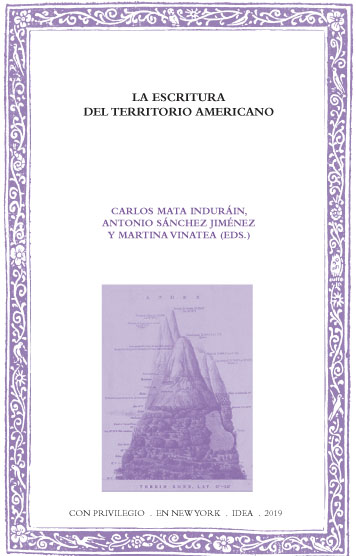
Carlos Mata Induráin, Antonio Sánchez Jiménez and Martina Vinatea (eds.), The Writing of American Territory, New York, IDEA, 2019.
ISBN: 978-1-938795-61-9
One of the topics that has most attracted the attention of Americanist critics has been the role played by the European imaginary in constructing in America a chimerical continent that brought together a large part of the hopes and fears of the old world, as well as its projects of colonial domination. Such is the influence of this current that there is hardly any study of importance, from Todorov's classic to the recent imagological works, that does not recapture it and examine how Europeans invented America or (and perhaps here is the most important development of recent years) how Americans adopted and modified this invention to enhance their own interests. This Issue, The Writing of American Territory, examines this series of European chimeras in their interaction with American reality and across diverse literary (the travel or merit account, the chronicle, the chorography, the comic theater, the Philosophy, etc.) and artistic (mural painting) genres.
Carlos Mata Induráin, Senior Associate Professor , is researcher and Secretary of GRISO (University of Navarra) and IDEA. His research focuses on the Spanish Golden Age: burlesque comedy, autos sacramentales, Cervantes, Lope or Calderón, among other authors.
Antonio Sánchez Jiménez, Full Professor of Spanish Literature at the Université de Neuchâtel (Switzerland), is the author of several monographs and critical editions of golden texts (Lope de Vega, Calderón de la Barca, Eugenio de Salazar, Spanish and viceregal poetry, Leyenda Negra, etc.).
Martina Vinatea, PhD in Philology Hispanic and History, is Senior Lecturer at the Universidad del Pacífico (Peru) and Co-Director of the Centro de programs of study Indianos (CEI) / project programs of study Indianos (PEI). She is currently researching women's convent poetry and poetry of viceregal Peru.

Randi Lise Davenport and Isabel Lozano-Renieblas (eds.), Cervantes in the Septentrión, New York, IDEA, 2019.
ISBN: 978-1-938795-58-9
This Issue collects fifteen articles by leading Cervantists who presented their work at the International congress "Cervantes in the Septentrion", held at the Arctic University of Norway (Tromsø), in June 2017. Convened on the occasion of the 400th anniversary of the first edition of Los trabajos de Persiles y Sigismunda, historia septentrional, the congress had the scientific endorsement of the association de Cervantistas. In recent decades, critical perspectives on Cervantes' posthumous novel have multiplied and radically changed its critical landscape, and it has gone from being a marginal work to occupying a prominent place in Cervantes' narrative. The goal of congress was to present the renewed state of the art on the Persiles. The fifteen articles offered here reveal this vitality of Cervantes' literary testament within the current research . Another selection of papers presented at congress is collected in a monographic section of Hipogrifo. Journal of Golden Age Literature and Culture ( 7.1, 2019), accessible online.
Randi Lise Davenport has been a senior lecturer in Hispanic Literature and Culture at the Norwegian Arctic University in Tromsø since 2009. She organised at her university the International congress "Cervantes in the Septentrion" (June 2017), in which 80 Cervantists from some 18 countries participated. He is board member on the board Board of Directors of the association de Cervantistas since 2018, and of the association International Siglo de Oro (AISO) since 2017.
Isabel Lozano-Renieblas is Professor of Spanish Literature at Dartmouth College (USA). Her research focuses on the study of the aesthetics of the novel, particularly the Cervantes novel. She has published the monographs Cervantes y el mundo del "Persiles" (1998) and Cervantes y los retos del "Persiles" (2014). He has coordinated a Issue for Revista de Occidente dedicated to the Persiles (2017), in partnership with Antonio García Berrio. He has edited Los trabajos de Persiles y Sigismunda for publishing house Penguin (2016), and has collaborated in the edition of this same work by the Real Academia Española (2017).

António Apolinário Lourenço, Carlos d'Abreu and Mariela Insúa, Francisco Botelho de Morais e Vasconcelos (1670-1747) e as letras ibéricas do seu tempo. Francisco Botello de Moraes e Vasconcelos (1670-1747) and the Iberian letters of his time, New York, IDEA, 2019.
ISBN: 978-1-938795-59-6
The aim of this Issue, in which several Spanish and Portuguese researchers collaborate, is to pay tribute to an important figure of Iberian letters, who lived in the last decades of the 17th century and the first decades of the 18th century: Francisco Botello de Moraes y Vasconcelos (Torre de Moncorvo, 1670-Salamanca, 1747). The goal is to offer a panoramic tour, as far as possible, of all the known work of the Torre Moncorvino writer, which was published in three different languages: Spanish, Latin and Portuguese. In this way, it is intended to deepen in the knowledge of the period of transition between centuries, recovering for its literary and cultural history the figure of one of its most forgotten interpreters.
António Apolinário Lourenço is Professor of Literature at the University of Coímbra, where he coordinates the Spanish section programs of study and is a member of the Executive committee of the Portuguese Literature Centre (CLP). He is the author or publisher of several books published in Portugal, Spain and Brazil, on different periods and authors, but mostly devoted to Spanish and Portuguese literature.
Carlos d'Abreu holds a PhD in Geography from the University of Salamanca, is a poet, archaeologist, researcher on regional and cross-border issues and partner of the Centre for Portuguese Literature (CLP) of the University of Coimbra. Professionally, he is a senior technician at the Portuguese Ministry of Education .
Mariela Insúa is a researcher and administrative assistant of group de research Siglo de Oro (GRISO) at the University of Navarra and editor of Hipogrifo. Revista de literatura y cultura del Siglo de Oro. A specialist in the work of the Mexican Fernández de Lizardi, she has also published works on the Golden Age, especially on 17th century Spanish-Portuguese theatre.
Juan Pérez de Montalbán, Auto sacramental famoso de las Santísimas Formas de Alcalá, preliminary study, edition and notes by Ignacio Arellano, J. Enrique Duarte and Carlos Mata Induráin, New York, IDEA, 2019.
ISBN: 978-1-938795-57-2
On 16 July 1619, the Vicar General of Alcalá de Henares, Don Cristóbal de la Cámara y Murga, formally declared the miracle of the Holy Uncorrupt Forms of Alcalá. To celebrate the event, Juan Pérez de Montalbán wrote the auto sacramental of Las Santísimas Formas de Alcalá, which we are publishing today - at the initiative of the Bishopric of Alcalá - in commemoration of the fourth centenary of this event. The edition is completed with a facsimile of the manuscript of the auto, preserved at the Library Services Nacional de España. We include as appendices the transcription of a series of documents related to the history of the Santas Formas; the secondspeech of the mass, by Pérez de Montalbán himself; and, finally, the famous Entremés de Turrada, by Quiñones de Benavente, to suggest the festive sacramental conglomerate characteristic of the Golden Age.
Ignacio Arellano is Full Professor of the University of Navarra, where he directs the group de research Siglo de Oro (GRISO), which develops a wide program of research that includes the critical edition of Calderón's autos, the complete theater of Bances Candamo or the publication of La Perinola and the Calderonianyearbook .
J. Enrique Duarte, Senior Associate Professor , is researcher of GRISO. His interest is focused on the theater of the Golden Age (Calderón, Tirso, Bances Candamo...), having published numerous editions of comedies and autos sacramentales. He is Secretary of La Perinola. Revista de research quevediana and its collection of "Anejos".
Carlos Mata Induráin, Senior Associate Professor , is researcher and Secretary of GRISO and IDEA. His lines of research focus on Spanish literature of the Golden Age: burlesque comedy, Calderón's autos sacramentales, Cervantes and the quixotic and Cervantes' recreations, plays about the Arauco war, etc.
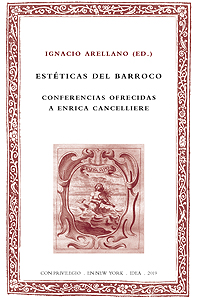
Ignacio Arellano (ed.), Aesthetics of the Baroque. Lectures given to Enrica Cancelliere, New York, IDEA, 2019.
ISBN: 978-1-938795-56-5.
This Issue gathers a selection of the lectures given to Professor Enrica Cancelliere in an act of homage for her research career and scientific work, contributions that make her one of the leading authorities in the study of the Baroque and its aesthetics. A group of colleagues and friends bring together works on Cervantes, Calderón, Góngora and various aspects of the mentality, art and culture of the Baroque, including the complex epistemological approach of Professor Cancelliere herself.
Ignacio Arellano is Full Professor of the University of Navarra, and has been Senior Associate Professor of the University of León and Full Professor of the University of Extremadura, as well as a visitor at numerous universities around the world. He directs the group of research Siglo de Oro (GRISO) of the University of Navarra, where he develops an extensive program of research on the Golden Age, including the project critical edition of the complete works of Calderón, the complete theater of Bances Candamo, or the publication of La Perinola. Revista de research quevediana and the yearbook Calderoniano.
|
Index |
Page |
|
9 |
|
|
IGNACIO ARELLANO |
15 |
|
PATRIZIA BOTTA, DEBORA VACCARI AND AVIVA GARRIBBA |
29 |
|
LAVINIA BARONE |
53 |
|
ENRICA CANCELLIERE |
87 |
|
GIOVANNI CARAVAGGI |
117 |
|
CIRIACO MORÓN |
131 |
|
VALENTINA NIDER |
153 |
|
GIULIA POGGI |
171 |
Antonio Sigler de Huerta, No hay bien sin ajeno daño. Las doncellas de Madrid, introductory study and critical edition by Luisa Roselló Castillo, New York, IDEA, 2018.
ISBN: 978-1-938795-39-8.
Antonio Sigler de Huerta is a secondary author whose life and work have received little attention from critics, which is why his theatrical production has gone practically unnoticed. However, he enjoyed some recognition in his time (he not only participated in various academies, but also received the praise of Montalbán and Lope de Vega, which, however, did not prevent him from being the target of Calderón's acid sonnets) and in his comedies we find some notable successes. Thus, knowing his life and work allows us to understand more accurately the literary panorama of the Golden Age and the relationships of friendship or enmity that were established between the playwrights of the time. In this Issue we offer the study and the critical and annotated edition of two of his comedies of cloak and sword: No hay bien sin ajeno daño and Las doncellas de Madrid.
Luisa Rosselló Castillo, PhD in Hispanic Philology (award Extraordinary of doctorate), is a collaborator of high school of programs of study Hispanics in Modernity (IEHM) of the University of the Balearic Islands. Her area of specialization as a researcher is the Spanish theatre of the Golden Age (Lope de Vega, Moreto, etc.). She is also a member of the team researcher Moretianos.

Delia Gavela García (ed.), Escenarios en conflicto en el teatro bíblico áureo, New York, IDEA, 2018.
ISBN: 978-1-938795-54-1.
This Issue gathers eleven works by research related to the conflict as a literary motif, but also as a reflection of a complex historical-social reality, that of 17th century Spain, which had religion as one of its main backbones and theater as one of the most universal and socially influential forms of entertainment. The authors, all of them renowned specialists in the golden drama (Tatiana Alvarado Teodorika, María Rosa Álvarez Sellers, Piedad Bolaños Donoso, Enrica Cancelliere, Francisco Domínguez Matito, Alfredo Rodríguez López-Vázquez and Marcella Trambaioli), the history of religions (Ruth Fine and Francisco Peña Fernández), literature written in Latin (Teresa Jiménez Calvente) or contemporary theater (María Isabel Martínez López) have approached the biblical source and its protagonists (Jael, Rachel, Abraham, Jonah, etc.) to analyze their presence in the biblical comedy (Jael, Rachel, Abraham, Jonah, etc.).) to analyze its presence in the golden comedy, in its antecedents and in its later sequels, through the analysis of various works and authors, to highlight the multiple perspectives and scenarios from which the biblical conflict can be approached.
Delia Gavela García is Senior Lecturer at the University of La Rioja. She has previously taught at the UAM, Carleton University (Canada) and the UIMP, and has been a visiting professor at the University of Rome-La Sapienza and the University of Toulouse-Le Mirail. Her research field focuses on Spanish literature and its didactics, with special attention to the theatre of the Golden Age. She is part of several projects of research (La obra dramática de Agustín Moreto and CONSOLIDER), including BITAE (II): Nuevos paradigmas de interpretación teatral: respuestas para una sociedad en conflicto (FFI2013-47806-R), which has led to the publication of this monograph.
Enea Silvio Piccolomini (Pius II), Treatise on the Misery of Courtiers (Translation by Diego López de Cortegana), critical edition, introduction and notes by Nieves Algaba, New York, IDEA, 2018.
ISBN: 978-1-938795-48-0.
This book publishes the translation into Spanish of De curialium miseriis, one of the most acidic works by Enea Silvio Piccolomini, who was pope under the name of Pius II from 1458 to 1464. It is a text (translated by Diego López de Cortegana as Tratado de la miseria de los cortesanos and published in Seville, 1520) which should be included among the works on "court contempt and village praise" which had such an impact during the first half of the 16th century and which, in part, emerged in the heat of Erasmus' ideas. But if there is one thing that makes this treatise stand out, it is the way in which Piccolomini combines the continuous recourse to classical and contemporary authorities (mainly Juvenal and Poggio Bracciolini) with his own experience as a courtier. And it is here that a satire emerges, which, underpinned by a sometimes scatological realism, makes for pages of enjoyable reading.
Nieves Algaba holds a PhD in Philology Hispánica from the Complutense University of Madrid. She is currently working professor at the Pontificia Comillas and UNIR universities and at the UCEAP programme of the University of California, based at the Complutense University. Although his field of specialization focuses on the study of the 15th and 16th centuries, and particularly on Spanish-Italian relations, he has published books and articles on Lope de Vega, contemporary authors and the special cultural crossroads of the late 19th century.

Ignacio Arellano and Gonzalo Santonja Gómez-Agero (eds.), La hora de los asesinos: crónica negra del Siglo de Oro, New York, IDEA, 2018.
ISBN: 978-1-938795-49-7.
This Issue, La hora de los asesinos: crónica negra del Siglo de Oro, brings together a dozen works that were exhibited at a meeting co-organized by the Instituto Spanish y Leonés de la language and the group de research Siglo de Oro of the University of Navarra, which was held, with the same degree scroll, at the Palacio de la Isla in Burgos in the summer of 2017. From the hand of various specialists (Ignacio Arellano, José María Díez Borque, Juan Manuel Escudero Baztán, Naïma Lamari, Carlos Mata Induráin, Felipe B. Pedraza Jiménez and Milagros Rodríguez Cáceres, Victoriano Roncero López, Sergio Santiago Romero, Gonzalo Santonja Gómez-Agero and Jesús M. Usunáriz), the reader will be able to recall some famous murderers and murders, both real and literary, together with other gruesome events and cases of various violence that are part of the black chronicle of the Hispanic Golden Age.
Ignacio Arellano is Full Professor of the University of Navarra, specialist in literature of the Golden Age. He has published some one hundred and fifty books and nearly four hundred articles in specialized journals. He is also the author of the blog El jardín de los clásicos.
Gonzalo Santonja is Full Professor of the Complutense University of Madrid and director of high school Spanish y Leonés de la language. For his numerous books and articles he has been awarded, among others, the award Nacional de Literatura (essay) and the award Castilla y León de las Letras.
|
Index |
Page |
|
9 |
|
|
IGNACIO ARELLANO |
11 |
|
JOSÉ MARÍA DÍEZ BORQUE |
27 |
|
JUAN MANUEL ESCUDERO BAZTÁN |
35 |
|
NAÏMA LAMARI |
45 |
|
CARLOS MATA INDURÁIN |
59 |
|
FELIPE B. PEDRAZA JIMÉNEZ AND MILAGROS RODRÍGUEZ CÁCERES |
97 |
|
VICTORIANO RONCERO LÓPEZ |
119 |
|
SERGIO SANTIAGO ROMERO |
127 |
|
GONZALO SANTONJA GÓMEZ-AGERO |
139 |
|
JESÚS M. USUNÁRIZ |
155 |
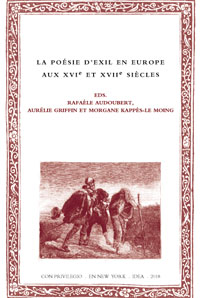
Rafaèle Audoubert, Aurélie Griffin et Morgane Kappès-Le Moing (eds.), La poésie d'exil en Europe aux XVIe et XVIIe siècles, New York, IDEA, 2018.
ISBN: 978-1-938795-47-3.
If exile in the twentieth and twenty-first centuries, a period of great change, has been studied in depth, the same is not true of the modern period. The very notion is problematic: is it possible to speak of exile in the 16th and 17th centuries, is there a definition of exile specific to this period, what are the possible commonalities, the possible differences between geographical and linguistic areas (Spain, England, Italy, the Netherlands)? One may also wonder what form exile takes when it becomes poetic. Indeed, poetry, the privileged means of expression of the "I", implies an emotional density not found in other genres of exile writing. Thanks to its codified character, poetry can favour the aestheticisation of the world to be abandoned or, on the contrary, that of the place of exile. Is there a poetry of exile, recurrent figures or motifs? Can the choice of this noble genre be seen as a possibility of compensating for the failure of exile?
Rafaèle Audoubert, professor at the Université de Saint-Étienne (Université de Lyon, France), devoted her thesis doctoral thesis to Quevedo's moral poetry, and her work focuses on Quevedo's work and its links with Spanish politics in the Golden Age. She has also researched other aspects of aurisecular poetry, translations, letters and the circulation of texts in early modern Europe.
Aurélie Griffin, professor at the Université Sorbonne Nouvelle-Paris 3 and member of the PRISMES centre, is the author of La Muse de l'humeur noire. Urania de Lady Mary Wroth, une poétique de la mélancolie (Classiques Garnier), and of several articles on Lady Mary Wroth, Sir Philip Sidney and Shakespeare. Her research focuses on the relationship between the pastoral genre and melancholy, on early women writers in England and on material culture.
Morgane Kappès-Le Moing is a lecturer at the Université de Saint-Étienne (France) and a member of CELEC (research center on Foreign and Comparative Literatures). She researches the relationship between literature and power in the Spanish Golden Age. She is the author of thesis on the literary patronage of the Count of Lemos and has participated in collective works on How Francisco de Quevedo's private life should be.
|
Index |
Page |
|
9 |
|
|
ROLAND BÉHAR |
13 |
|
AURÉLIE GRIFFIN |
25 |
|
MORGANE KAPPÈS-LE MOING |
43 |
|
CARLOS MATA INDURÁIN |
61 |
|
VINCENT ROGER |
115 |
Martina Vinatea, "Fundación y grandezas de la muy noble y muy leal ciudad de los Reyes de Lima", by Rodrigo de Valdés, New York, IDEA, 2018.
ISBN: 978-1-938795-46-6.
Lima, the most important city in South America from the beginning of the 17th century, is described in Fundación y grandezas de la muy noble y muy leal Ciudad de los Reyes (Foundation and Grandeurs of the Most Noble and Most Loyal City of the Kings) by means of a speech that seeks to appropriate space and time and marks continuity with the European tradition. It is exalted for its splendour and designated as a new Rome, a translatio imperii, because it quickly became a rich and complex city, a political and commercial centre of great importance and a monumental Baroque city, where religious buildings take on special importance. The Jesuit Rodrigo de Valdés described Lima in this way, because the Creole speech needed to construct an idea of the New World as an extension of Spain, the seat of power of the largest empire in Christendom. This construction had to be expressed in a mythical founding story that would make it possible to establish the New World as a paradigm within the system of representations established by the imperial imaginary and consolidate a symbolic image of Lima and a Creole mythography. Thus, the poem by Father Valdés should be seen as a text centred on the foundation itself, with two central figures as its framework: Pizarro and Santa Rosa de Lima. The two characters are recognised as the paradigms that sustain the empire: courage in the struggle combined with the desire to conquer and sanctity. Francisco Pizarro, hero of the conquest, is presented as a centaur, a viracocha and as a vehicle for the establishment of the myth of Lima as the garden of Eden where Isabel Flores de Oliva, the Dominican tertiary, the first saint of the New World who protects the city from civil discord, plagues and pirates, the unifying symbol of a fragmented society, will be born.
Martina Vinatea, PhD in Hispanic Philology and PhD in History, is Senior Lecturer at the Universidad del Pacífico (Lima, Peru) and Co-Director of the Centro de programs of study Indianos (CEI) / project programs of study Indianos (PEI) of the University of Navarra and the Universidad del Pacífico. Her recent work has focused on Hispanic and viceregal Peruvian women's convent poetry and on the works of the poets of the Academia Antártica.
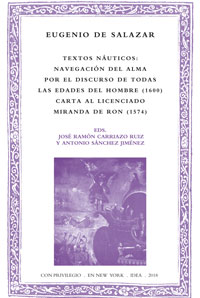
Eugenio de Salazar, Textos náuticos: Navegación del alma por el speech de todas las edades del hombre (1600). Carta al graduate Miranda de Ron (1574), edited by José Ramón Carriazo Ruiz and Antonio Sánchez Jiménez, New York, IDEA, 2018.
ISBN: 978-1-938795-43-5.
One of the greatest attractions of Eugenio de Salazar(c. 1530-1602), poet, jurist and royal official, is the nautical flavour of his literary writings. In them, Salazar pours out with elegance and humour his knowledge of all aspects of the Indies degree program - pirates, storms, discomforts, customs - and demonstrates his mastery of the language of seamanship. Textos náuticos offers a critical and annotated edition of his two main maritime works: the Navegación del Alma ( 1600), an allegorical-moral poem, and the hilarious Carta al graduate Miranda de Ron ( 1574), a burlesque epistle about life on board transatlantic ships.
José Ramón Carriazo Ruiz is Senior Associate Professor at the Universidad Nacional de Education a Distancia, lexicographer and expert in nautical vocabulary of the Golden Age, topic on which he has published several works.
Antonio Sánchez Jiménez is Full Professor of Spanish literature at the Université de Neuchâtel (Switzerland). He has published several books on Spanish and Viceroyal poetry of the Golden Age.
Beatrice Garzelli, Translating the Golden Age: Quevedo and His Contemporaries, New York, IDEA, 2018.
ISBN: 978-1-938795-44-2.
This Issue studies the translation -whether intersemiotic or interlinguistic- of literary texts from the Golden Age, especially those of Francisco de Quevedo, together with works by Carlos García and Baltasar Gracián. The book allows a careful reflection on the translator fact in its various manifestations, commenting -in the passage from Spanish to Italian- the mechanisms of compensation of some losses, thanks to the linguistic negotiation. This pathway highlights the figure of the translator of Spanish texts of the Golden Age, whose role has only recently come to be recognized, and whose work is essential to grasp the author's thought and decipher the Baroque doctrine of difficulty. If, on the one hand, Italian translation constitutes a relevant critical contribution to literary texts of great attraction and complexity, on the other hand, it offers to a wide public of Italian speakers, not Hispanists, the opportunity to get to know extraordinary authors who would otherwise be almost completely ignored.
Beatrice Garzelli is Professor of language and Spanish Translation at the Università per Stranieri di Siena where she is Director of the Linguistic Centre and Vice-Director of department. Her programs of study focuses on the translation from Spanish into Italian of Golden Age and contemporary literary texts and the audiovisual translation (dubbing and subtitling) of Spanish and Latin American short films and auteur films. With regard to the Spanish Baroque, his edition and annotated translation of "Clío", Musa I. Con un'appendice da "Melpómene" (with Alessandro Martinengo and Federica Cappelli, 2005), the monograph "Nulla dies sine linea. Letteratura e iconografia in Quevedo (2008) and the first Italian translation of Carlos García's La desordenada codicia de los bienes ajenos ( with Alessandro Martinengo, 2011).
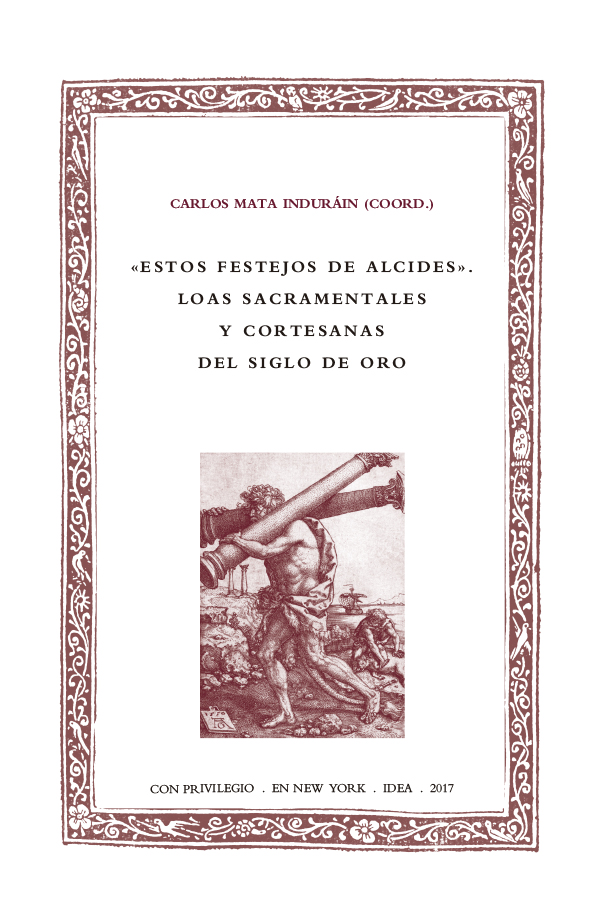 Carlos Mata Induráin (coord.), Estos festejos de Alcides. Loas sacramentales y cortesanas del Siglo de Oro, New York, IDEA, 2017.
Carlos Mata Induráin (coord.), Estos festejos de Alcides. Loas sacramentales y cortesanas del Siglo de Oro, New York, IDEA, 2017.
ISBN: 978-1-938795-42-8.
This Issue gathers thirteen pieces that are part of the corpus of courtly and sacramental loas of the Golden Age, which is perhaps the least known of the genre. They are works that manifest, at various levels and dimensions, concerns related to the topic of authority and power, which are offered here in reliable and conveniently annotated texts. Brief commentaries (on the authors and their context, data of representation, plot schemes, metrics, etc.) accompany the editions, carried out by various specialists (Ignacio Arellano, J. Enrique Duarte, Judith Farré Vidal, Carlos Mata Induráin, Tonina Paba, José Antonio Rodríguez Garrido, Enrique Rull, Leonardo Sancho, Ana Suárez Miramón and Martina Vinatea). First the peninsular loas are collected (Rojas Villandrando, Calderón de la Barca, Bances Candamo and Zamora), followed by one from the Sardinian sphere (Delitala and Castelví) and, finally, the American loas are added (Sor Juana, Llamosas and Peralta Barnuevo).
Carlos Mata Induráin, Senior Associate Professor Accredited, is researcher and Academic Secretary of group of research Siglo de Oro (GRISO) of the University of Navarra and Secretary of high school of programs of study Auriseculares (IDEA). He is also a correspondent in Spain of the Bolivian Academy of the language Spanish . His lines of research focus on Spanish literature of the Golden Age (burlesque comedy, Calderón, Cervantes and quixotic recreations, plays about the Arauco War, etc.). He is the author of the blog "Ínsula Barañaria".
|
Index |
Page |
|
CARLOS MATA INDURÁIN |
9 |
|
IGNACIO ARELLANO |
11 |
|
IGNACIO ARELLANO |
17 |
|
ENRIQUE RULL |
29 |
|
ANA SUÁREZ MIRAMÓN |
49 |
|
IGNACIO ARELLANO |
75 |
|
95 |
|
|
111 |
|
|
153 |
|
|
J. ENRIQUE DUARTE |
169 |
|
J. ENRIQUE DUARTE |
201 |
|
235 |
|
|
259 |
|
|
279 |
|
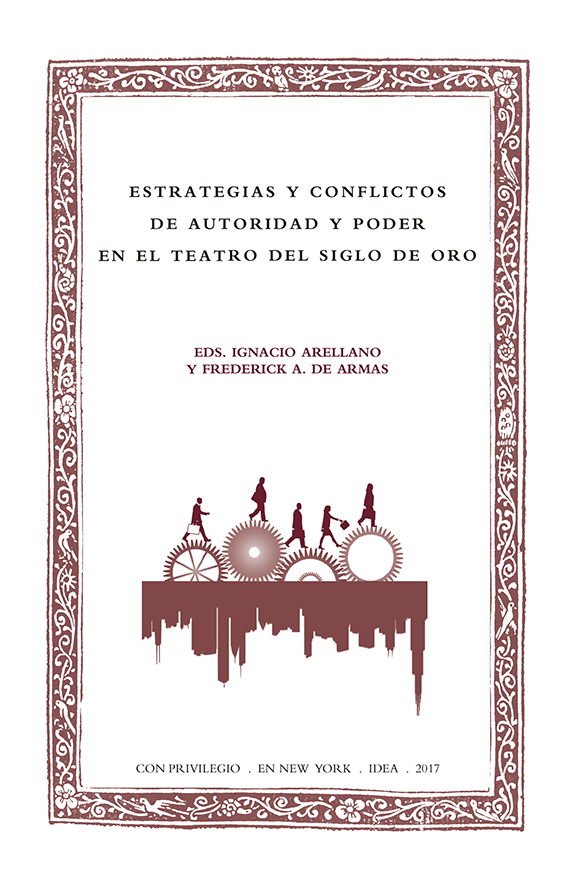 Ignacio Arellano and Frederick A. de Armas (eds.), Estrategias y conflictos de autoridad y poder en el teatro del Siglo de Oro, New York, IDEA, 2017.
Ignacio Arellano and Frederick A. de Armas (eds.), Estrategias y conflictos de autoridad y poder en el teatro del Siglo de Oro, New York, IDEA, 2017.
ISBN: 978-1-938795-40-4 Batihoja, 44.
In the universe of authority and power, conflicts abound and strategies multiply. The theater of the Golden Age reveals many aspects of this process, as analyzed by the authors of this Issue which traces particular cases in specific comedies, but also the confrontation of theories and practices of power. Part of the issues involved were discussed at the International congress "Strategies and Conflicts of Authority and Power in Golden Age Theater," co-organized by GRISO-University of Navarra and The University of Chicago in October 2016, in the framework of the project FFI2014- 52007-P "Autoridad y poder en el teatro del Siglo de Oro", of the Ministry of Industry, Economics and Competitiveness of the Government of Spain and of the "network del Patrimonio Teatral Clásico Español" (FFI2015-71441-REDC) of the Plan Nacional de research Científica, development e Innovación Tecnológica of the Government of Spain.
Ignacio Arellano is Full Professor of the University of Navarra, specialist in literature of the Golden Age. He has published some one hundred and fifty books and nearly four hundred articles in specialized journals. He is also the author of the blog El jardín de los clásicos.
Frederick A. de Armas is Full Professor of Spanish and Comparative Literature at the University of Chicago. A specialist in golden literature, particularly Cervantes and Calderón, he is the author of works such as The return of Astrea: an astral-imperial myth in Calderón, Cervantes. Raphael and the Classics, Quixotic Frescoes and Don Quixote among the Saracens.
|
Index |
Page |
|
9 |
|
|
IGNACIO ARELLANO |
13 |
|
FREDERICK A. DE ARMAS |
27 |
|
DAVID GARCÍA HERNÁN |
43 |
|
LUCIANO GARCÍA LORENZO |
59 |
|
HILAIRE KALLENDORF |
75 |
|
JOSÉ MIGUEL MARTÍNEZ TORREJÓN |
89 |
|
FELIPE B. PEDRAZA JIMÉNEZ |
105 |
|
MILAGROS RODRÍGUEZ CÁCERES |
123 |
|
JESÚS M. USUNÁRIZ |
139 |
|
JULIO VÉLEZ SAINZ |
161 |
Urszula Aszyk, Juan Manuel Escudero Baztán and Marta Piłat Zuzankiewicz (eds.), The dramatic text and the visual arts. Spanish Golden Age theatre and its heirs in the 20th and 21st centuries., New York, IDEA, 2017.
ISBN: 978-1-938795-29-9. Batihoja, 43.
The present Issue gathers contributions from several specialists in the dramaturgy of the Golden Age and that of its heirs of the Silver Age, the avant-garde, the Spanish postwar period and Postmodernism, who reflect on the theater as a space for meeting of the poetic and visual arts. The approach multidisciplinary of the texts determines a great variety of perspectives from which the aurisecular theater can be studied, such as the scenic effects and visual values of the dramatic text, the scenic representation and the cinematographic adaptation of the comedies, as well as the influence of baroque aesthetics and themes in the Spanish contemporary theater.
Urszula Aszyk is Professor of Spanish Literature at the University of Warsaw. As a visiting professor she has taught at several foreign universities. She is the author of more than 200 articles and a number of books on Spanish theatre. She has recently published Drama-Teatro-Arte. Metatheatricality, intertextuality and theatricality in Spanish drama of the Golden Age and the 20th century (2014).
Juan Manuel Escudero Baztán is researcher of the group de research Siglo de Oro (GRISO) of the University of Navarra and Deputy Director of the yearbook Calderoniano and the collection "Library Services Áurea Hispánica". His main lines of research are currently focused on Spanish literature of the Golden Age, especially its theatre and colonial poetry.
Marta Piłat Zuzankiewicz is a researcher at the University of Warsaw. specialization program Her research interests are Counter-Reformation political thought, emblematic literature, Baroque comedy, and Polish-Spanish relations. She is a member of association International Golden Age and the International Society for the Study of Event Relations.
Pietro Bembo and Giovanni Francesco II Pico della Mirandola, De imitatione. On la imitacióne, bilingual edition by Oriol Miró Martí, New York, IDEA, 2017.
ISBN: 978-1- 938795-37- 4.
The epistolary De imitatione ( c. 1515) is a set of three letters in Latin signed by two of the leading humanists of the Renaissance and a text of paramount importance insofar as it became the programmatic text of the theory of the uniquemodel . The De imitatione is the direct antecedent of Bembo's Prose della volgar lingua, which would codify the Italian literary language and Petrarchism of the 16th century and, as such, is the linchpin necessary to fully understand one of the works core topic of the Renaissance. This edition includes the first Spanish translation of the epistolary, as well as a study of its impact both on the Latin letters from which it emerged and on the vulgar letters of Italy and Spain to which it spread. Its publication makes it possible to recover an essential text for understanding the Renaissance literary canon. It also has the advantage of including the third letter, considered lost for centuries, which is presented, together with the other two, duly annotated and translated into Spanish for the first time.
Oriol Miró Martí is a lecturer at the International University of La Rioja. His publications include the editions in Chair of the Prosas de la language vulgar by Pietro Bembo (2011) and the Poesía Completa by Juan de Arguijo (2009), as well as the Comentario a una canción de amor by Giovanni Pico della Mirandola (PPU, 2007). He is a member of the Renaissance Society of America, the association International Siglo de Oro and the association International Hispanists.
Bartolomé Jiménez Patón, Discursos (de calamidades, cruces y herejes), ed. González Maya, New York, IDEA, 2017.
ISBN: 978-1- 938795-35- 0.
This Issue presents three very little studied and edited speeches of the famous humanist from La Mancha, Jiménez Patón. The one on the Cross and the one on the Statutes of Cleanliness have never seen the light of day, so their reading will be of great interest to the specialized reader. Together with the speech on the plagues of locusts, they present a set of short works centered on a series of moral questions anchored to his most immediate reality, which characterized the Patón of his last years, already far from his philological programs of study . This interest in the times in which he lived and his particular religious obsession about the placement of the image of the holy cross, about the sins of men, which caused the coming of the plagues of locusts, and about the ambitions of the so-called unmerited pretenders to positions of responsibility, define not only a man on guard against the enemies of the faith but also an entire society. It is worth mentioning, finally, the edict of Philip IV on the irreverent uses of the cross only known by this book, and which we now edit and study.
Juan C. González Maya, doctorate by the University of the Balearic Islands, with award extraordinary, has developed a research degree program focused on the edition and study of works from the Spanish Golden Age. His lines of research have covered fields as diverse as the poetry, prose and theatre of Jerónimo de Cáncer, the collections of short plays, chorography in Ordóñez de Ceballos or various programs of study on the speeches of Jiménez Patón. He has published in the most prestigious journals on both literature and religion (Criticón, Revista de Literatura, Bulletin Hispanique, Hispania Sacra, yearbook de Historia de la Iglesia...).
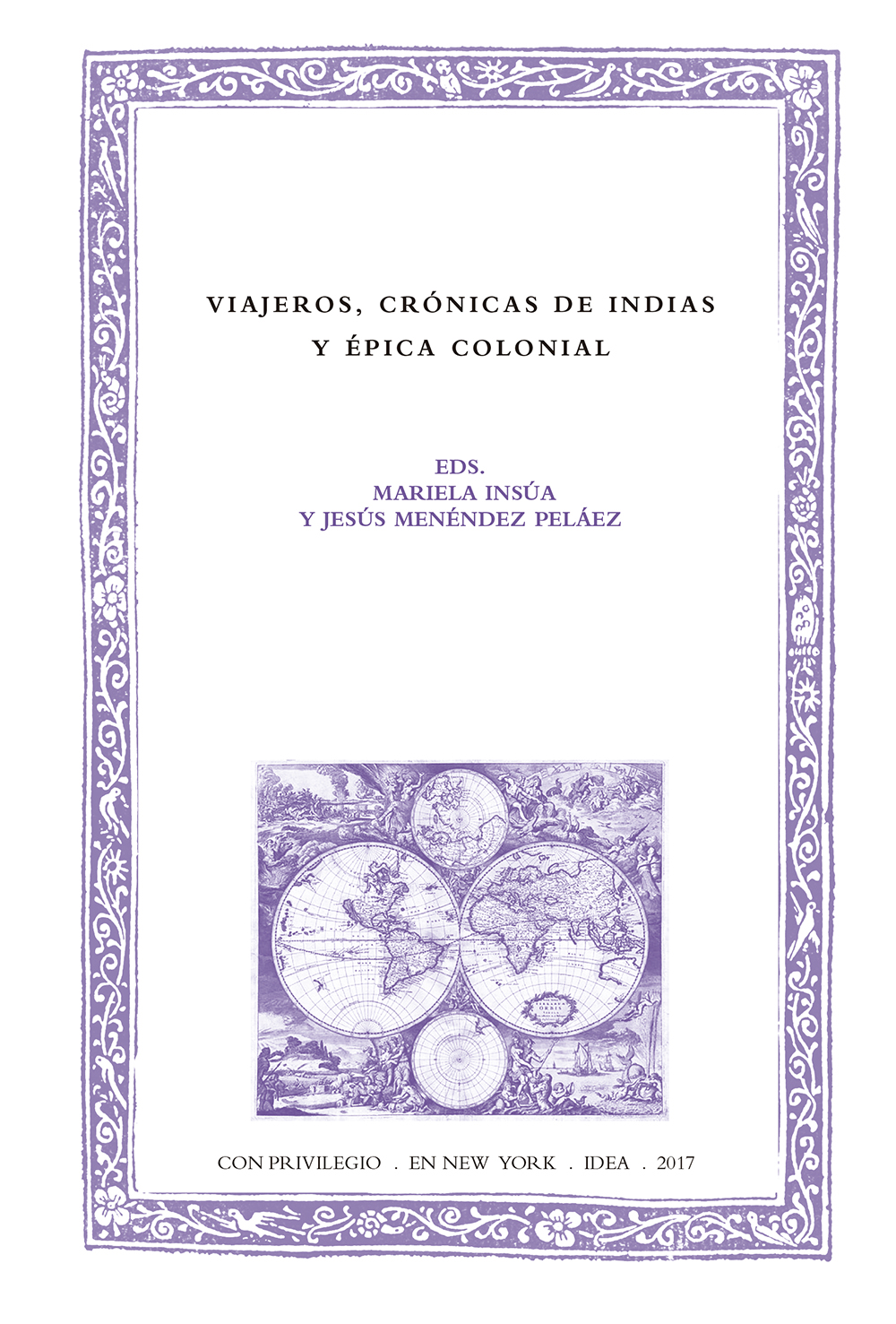 Mariela Insúa and Jesús Menéndez Peláez (eds.), Viajeros, crónicas de Indias y épica colonial, New York, IDEA, 2017.
Mariela Insúa and Jesús Menéndez Peláez (eds.), Viajeros, crónicas de Indias y épica colonial, New York, IDEA, 2017.
ISBN: 978-1-938795-36-7
This collective Issue gathers a dozen works focused on three thematic lines: the transatlantic voyages, the chronicles of the Indies and the colonial epic, which are approached from different critical and interdisciplinary points of view. The analysis ranges from general aspects such as the need for a relevant philological annotation of the epic, the chronicles and other Indian texts, or the fundamental role of Columbus and Cortes in the configuration of the toponymy of the Indies, to the commentary of particular relationships such as that of Gaspar de Carvajal or the Infortunios of Alonso Ramírez de Sigüenza y Góngora. It also offers approaches to specific travelers such as Fray Miguel de Aguirre and the polemic Bartolomé de las Casas, and to specific issues such as the presence of the brigantine in the conquest and capture of Mexico. As for the epic genre in the American framework , interpretations are provided on the poem Vida de Santa Rosa de Oviedo y Herrera; the curious Poema heroico hispano latino de Rodrigo de Valdés or El Bernardo de Balbuena. The Issue closes with a coda on travelers of Cervantine lineage and their pilgrimages.
Mariela Insúa is a researcher and administrative assistant of group de research Siglo de Oro (GRISO) at the University of Navarra and Editor of Hipogrifo. Revista de literatura y cultura del Siglo de Oro. A specialist in the work of Fernández de Lizardi, she has also published on the Spanish Golden Age, the contemporary Spanish novel and Hispano-American literature.
Jesús Menéndez Peláez has been Full Professor of Spanish literature and Dean of the School of Philosophy and Letters of the University of Oviedo. In his long career as professor and as researcher he has participated in multiple projects of research and published numerous works on Spanish literature from the Age average to the eighteenth century.
|
Table of contents |
Page |
|
9 |
|
|
IGNACIO ARELLANO |
11 |
|
TRINIDAD BARRERA |
37 |
|
ÁNGEL DELGADO |
51 |
|
ÁLEX GÓMEZ ROMERO |
71 |
|
JOSÉ ELÍAS GUTIÉRREZ MEZA |
91 |
|
BERNAT HERNÁNDEZ |
107 |
|
ANTONIO LORENTE MEDINA |
125 |
|
ELIO VÉLEZ MARQUINA |
141 |
|
MARTINA VINATEA |
195 |
|
MARTÍN ZULAICA LÓPEZ |
207 |
appendixCervantine Travellers
|
IGNACIO D. ARELLANO TORRES |
227 |
|
MARIELA INSÚA |
243 |
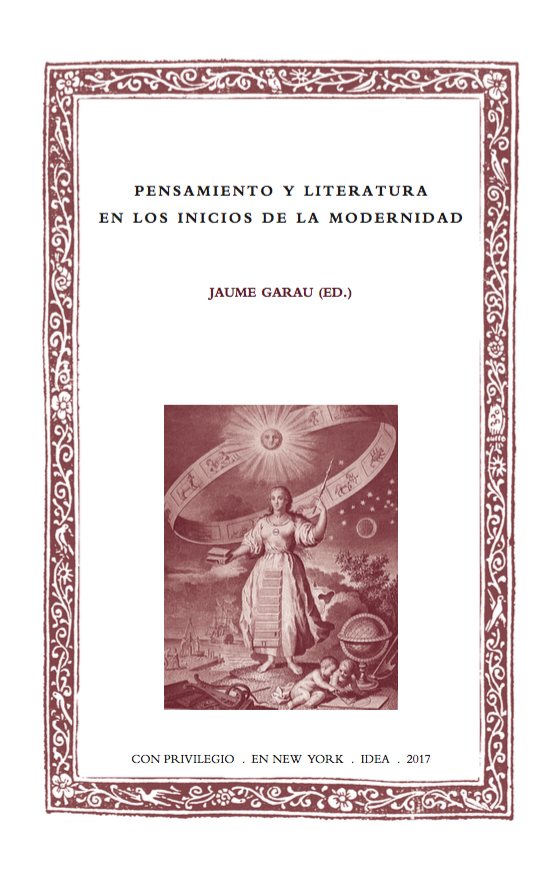
Jaume Garau (ed.), Pensamiento y literatura en los inicios de la modernidad, New York, IDEA, 2017.
ISBN: 978-1-938795-26-8. Batihoja, 39.
The present Issue brings together a series of programs of study that analyze the relationship between thought, in a broad sense, and literary work during the fullness of the Golden Age. The topics covered range from the symbolic value of some animals in the work of Gracián; the vision that a humanist of the stature of Bartolomé Jiménez Patón has of the Church or his considerations about what we modernly call misogyny and homophobia; the relations between power and politics in some comedies of Lope de Vega and the background of the town of Illescas in two of his comedies, without forgetting some of the ideas of the Fénix about the monarchical institution.
Jaume Garau is Full Professor at the University of the Balearic Islands. He has specialized in the Spanish literature of the Golden Age. He has published several books and articles about the beginnings of literature in Spanish in Mallorca, as well as critical editions of Tirso de Molina, Torres Villarroel and Bartolomé Jiménez Patón. His interests also include the study of sacred preaching, the work of Cervantes and literature written in the time of the novatores. He is currently the Director of the high school of programs of study Hispanics in Modernity (IEHM) of the University of the Balearic Islands.
|
Table of contents |
Page |
|
JAUME GARAU |
9 |
|
IGNACIO ARELLANO |
13 |
|
FRANCISCO FLORIT DURÁN |
21 |
|
JAUME GARAU |
47 |
|
ABRAHAM MADROÑAL |
75 |
|
JUAN MATAS CABALLERO |
95 |
|
CATALINA MONSERRAT ROIG |
123 |
|
LUISA ROSSELLÓ CASTILLO |
147 |
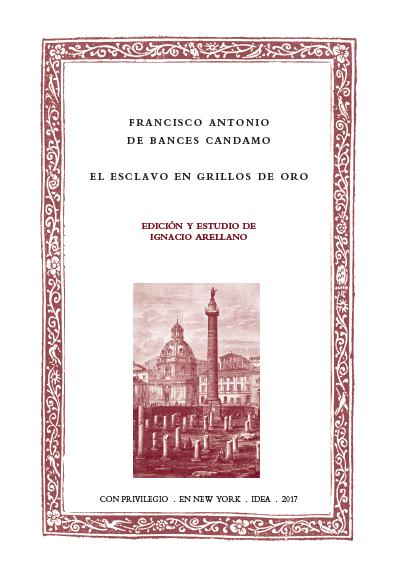
Francisco Antonio de Bances Candamo, El esclavo en grillos de oro, edition and study by Ignacio Arellano, New York, IDEA, 2017.
ISBN: 978-1-938795-34-3.
Batihoja, 38. El esclavo en grillos de oro is one of the most interesting comedies by Bances Candamo, the official playwright of Charles II, in which he develops - with the example of the emperor Trajan - a broad doctrine on the art of good government and the servitude that power implies for a ruler aware of his obligation, which is none other than the service of the common good.
Ignacio Arellano is Full Professor of the University of Navarra, and has been Senior Associate Professor of the University of León and Full Professor of the University of Extremadura, as well as a visitor at numerous universities around the world. He directs the group of research Siglo de Oro (GRISO) of the University of Navarra, where he develops a wide program of research on the Siglo de Oro, which includes the project critical edition of the complete works of Calderón, the complete theater of Bances Candamo, or the publication of La Perinola. Revista de research Quevediana and the yearbook Calderoniano.Batihoja 37. Newspaper of outstanding news in Lima and News from Europe.
Paul Firbas and José A. Rodríguez Garrido (eds.), Diario de noticias sobresalientes en Lima y Noticias de Europa (1700-1711), Issue 1 (1700-1705), New York, IDEA, 2017.
ISBN: 978-1-938795-33-6.
Batihoja, 37. We offer here a study and edition of what was most probably the first newspaper in the Americas: the Diario de noticias sobresalientes en Lima and the Noticias de Europa, which were printed in the workshops of José de Contreras y Alvarado between 1700 and 1711 in the capital of the viceroyalty of Peru. It is a material that until now has had little circulation among scholars of the Peruvian colonial world and that offers a wealth of information on the events in Lima at the beginning of the 18th century and on the events that shook Europe at the same time. This first Issue contains the first five years of Peruvian and European news, which correspond to the final stage of the viceregal government of the Count of Moncloa (1700-1705).
Paul Firbas is Adjunct Professor at department of Hispanic Languages and Literature at Stony Brook University. He has edited the poem Armas antárticas de Juan de Miramontes Zuázola ( 2006) and the Issue Epica y colonia: ensayos sobre el género épico en Iberoamérica (2008) and published numerous articles on colonial culture, particularly of the Andean area .
José A. Rodríguez Garrido is a senior lecturer at department of Humanities at the Pontificia Universidad Católica del Perú. He is co-editor of the volumes Edición y anotación de textos coloniales hispanoamericanos ( Madrid, 1999) and El teatro en la Hispanoamérica colonial (Madrid, 2008) and author of the book La Carta Atenagórica de Sor Juana: textos inéditos de una polémica (Mexico, 2004).
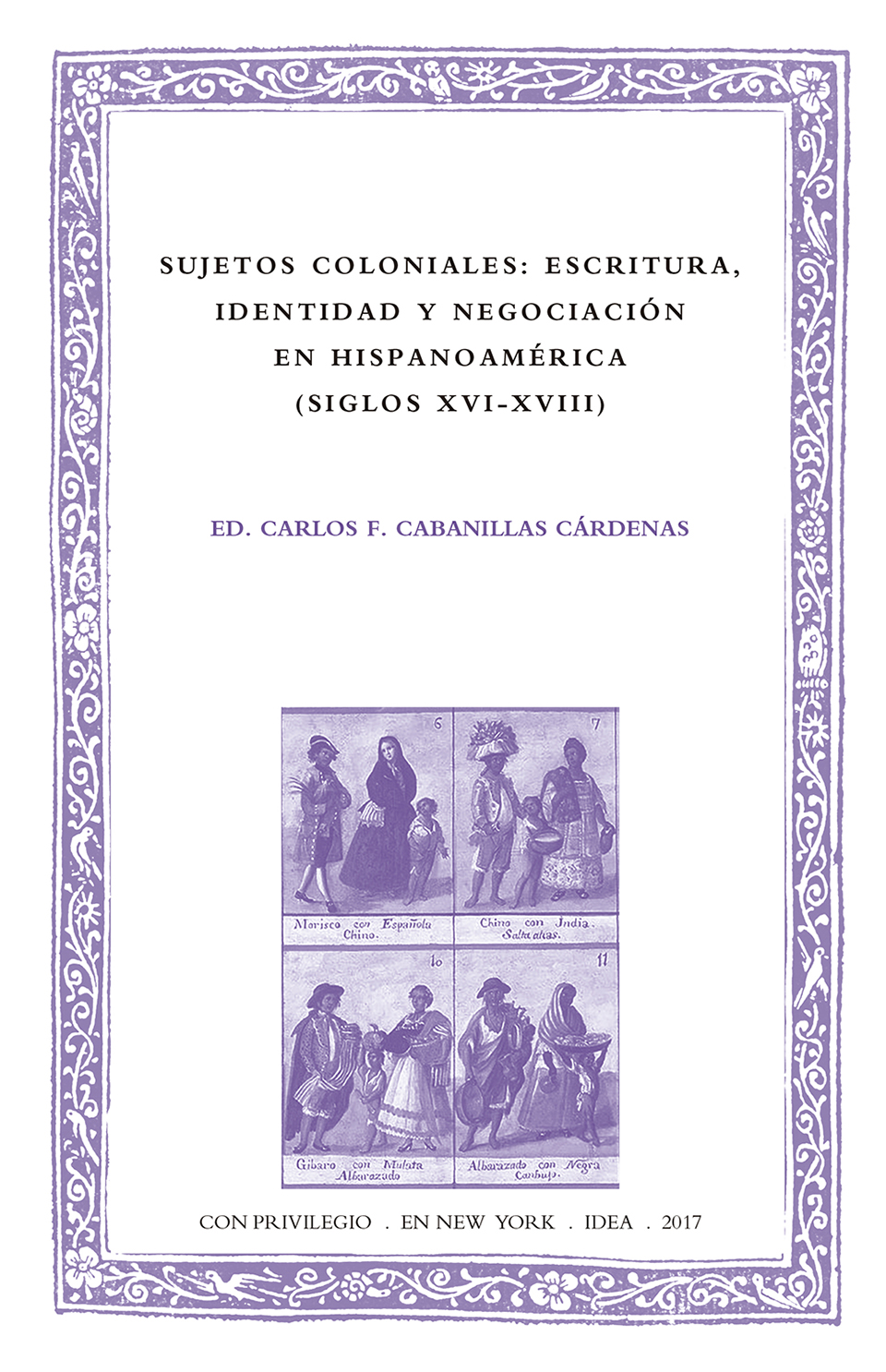 Carlos F. Cabanillas Cárdenas (ed.), Sujetos coloniales: escritura, identidad y negociación en Hispanoamérica (siglos XVI-XVIII), New York, IDEA, 2017.
Carlos F. Cabanillas Cárdenas (ed.), Sujetos coloniales: escritura, identidad y negociación en Hispanoamérica (siglos XVI-XVIII), New York, IDEA, 2017.
ISBN: 978-1-938795-32-9.
This book includes fourteen works that focus on the study of different colonial subjects who lived in the American viceroyalties between the sixteenth and eighteenth centuries. The approach of each one is diverse, as diverse were these subjects and also the different strategies they used, not only to find improvements within the colonial system but, in many cases, to claim an individual or collective identity. Some of these works also study the forms of representation (including their valuations) among the different groups of colonial subjects: peninsulars, Creoles, Indians, mulattos, maroons; and the discursive strategies (imitation, representation, rewriting) they used in their respective projects. The Inca Garcilaso de la Vega deserves attention in several of the programs of study . But there are also approaches to the figures of Alonso Enríquez de Guzmán, Titu Cusi Yupanqui, Carlos de Sigüenza y Góngora, Juan de Espinosa Medrano, Juan del Valle y Caviedes and José Joaquín Fernández de Lizardi, as well as other chroniclers and texts of the period.
Carlos F. Cabanillas Cárdenas is Senior Associate Professor at the ITU Arctic University of Norway (Tromsø) and associate member of the group de research Siglo de Oro (GRISO) of the University of Navarra. He has developed his research activity mainly in relation to the work of the colonial poet Juan del Valle y Caviedes, of whom he has made a critical edition of his poems against the doctors of Lima(Guerras físicas, proezas medicales, hazañas de la ignorancia) and several programs of study that clarify the textual panorama of his poetic works.
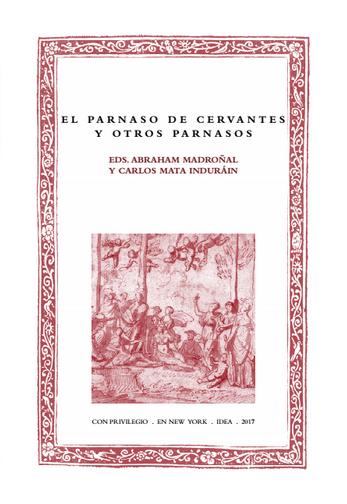 Abraham Madroñal and Carlos Mata Induráin (eds.), El Parnaso de Cervantes y otros parnasos, New York, IDEA, 2017.
Abraham Madroñal and Carlos Mata Induráin (eds.), El Parnaso de Cervantes y otros parnasos, New York, IDEA, 2017.
ISBN: 978-1-938795-12-1.
This book may seem heterogeneous and in fact it is, as its own degree scroll indicates: El Parnaso de Cervantes y otros parnasos. In vain will we look for a common thread between the work of Cervantes and the other texts presented here, and yet we can speak of fortuitous coincidences. Undoubtedly, the most striking is that the Voyage of Parnassus saw the light in 1614 and that just three hundred years later the Catalog of Édouard Favre's collection was published, work exemplary carried out by Léopold Micheli. It is a collection of several thousand documents kept at the Library Services in Geneva, known until a few years ago as the Bibliothèque publique et universitaire (BPU), whose existence dates back to 1556. Ten papers make up the content of this Issue: four of them are devoted to the work of Cervantes; five others are about materials from the Geneva Library Services ; finally, another article focuses on historical aspects that explain how, at the end of the 19th century and in the first years of the following century, the magnificent Altamira collection was dismantled, divided into several lots that were dispersed throughout Western Europe.
Abraham Madroñal is currently Full Professor at the University of Geneva and research scientist at the Center for Human Sciences of the CSIC. Specializing in the Golden Age, he has published books and articles on short plays, vejámenes, poetry, Jiménez Patón, Cervantes and Lope de Vega. He is director of the journal Anales Cervantinos (CSIC-Centro de programs of study Cervantinos) and the collection Clásicos Hispánicos (Iberoamericana-CSIC).
Carlos Mata Induráin is researcher and Secretary of group of research Siglo de Oro (GRISO) at the University of Navarra, and Secretary of high school of programs of study Auriseculares (IDEA, Madrid / New York). His main lines of research are currently focused on Spanish literature of the Golden Age: burlesque comedy, Calderón's autos sacramentales, Cervantes and Quixote and Cervantes' recreations, plays about the Arauco War, etc.
|
Table of contents |
Page |
|
CARLOS ALVAR, "Foreword". |
9 |
I. CERVANTES' PARNASSUS
|
|
Page |
|
JAUME GARAU |
13 |
|
MARÍA LUISA LOBATO |
37 |
|
ROSA NAVARRO DURÁN |
37 |
|
FELIPE B. PEDRAZA JIMÉNEZ |
75 |
II. THE OTHER PARNASSOS
|
|
Page |
|
ALFREDO ALVAR EZQUERRA / DIANA E. DÍEZ LÓPEZ |
93 |
|
CONSTANCE CARTA |
131 |
|
EPICTETO DÍAZ NAVARRO |
157 |
|
VANESSA GONZÁLEZ |
171 |
|
ABRAHAM MADROÑAL |
195 |
|
BELINDA PALACIOS |
285 |
Judith Farré (coord.), Antonio de Solís. Teatro breve, New York, IDEA, 2016.
ISBN: 978-1-938795-23-7.
This Issue presents the edition of the short theater of Antonio de Solís, one of the poets of Calderón de la Barca's cycle who, despite sharing with him the position of Palace playwright, has aroused little interest among the current literary historiography to the point that his works still lack a complete critical edition from the neo-Lachmanian perspective. Because of his presence in the social and cultural world of the second half of the 17th century, and as a result of his intense participation in the palace festivities, it is essential to begin the recovery of Solís's theater insofar as it contributes to the mechanical stylization of the comedy of cloak and sword and systematizes certain features that are pointed out in Calderón. The short theater of Solís, as a field of study of procedure and the compositional technique of his comedies as well as the dramaturgy of the late seventeenth century, also allows us to address other interdisciplinary issues such as court patronage, the professionalization of the theater or the evolution of comedy.
The edition of the short theatre of Antonio de Solís has been coordinated by Judith Farré Vidal. The team publisher was formed by Alain Bègue (Université de Poitiers), Judith Farré Vidal (committee Superior de Investigaciones Científicas), Dalia Hernández Reyes (Universidad Nacional Autónoma de México), Adriana Ontiveros (Universidad Iberoamericana, México) and Josep Maria conference room Valldaura (Universitat de Lleida).
Alonso Ramos, Los prodigios de la omnipotencia y milagros de la gracia en la vida de la venerable servant of God, Catarina de San Juan (libros II, III y IV), ed. Robin Ann Rice, New York, IDEA, 2016.
ISBN: 978-1-938795-28-2.
Approved by the highest and most elite ecclesiastical hierarchs of late seventeenth-century New Spain, Los prodigios de la omnipotencia y milagros de la gracia en la vida de la venerable servant of God Catarina de San Juan exploited the evangelising docere, delectare, movere in the form of a hagiographical novel. True to the Ignatian fantastic, the text promotes the global success of the Jesuit apostolate through Catharine of St John's bilocations around the world, hyperbolic and pedestrian miracles, and supernatural interventions that became everyday occurrences. On the verge of being considered for beatification, the whole process came to a halt when the Jesuit author, Alonso Ramos, came under suspicion when he began to have problems with his own congregation but on an international level. The influential and celebrated Ramos spent the last 18 years of his life in prison and Catarina became a myth that survives to this day.
Robin Ann Rice is a full-time professor and researcher at the Universidad Popular Autónoma del Estado de Puebla (UPAEP). A member of the National System of Researchers (SNI), she holds a PhD in Hispanic Philology from the University of Navarra. Her previous programs of study is from the area of Comparative Literature. She is the author of books and articles on Sor Juana Inés de la Cruz, Isabel de la Encarnación, Vélez de Guevara, Lope de Vega, María de Zayas, Mariana de Carvajal and Miguel de Cervantes, among others.
Alonso Ramos, The Prodigies of Omnipotence and Miracles of Grace in the Life of the Venerable Servant of God, Catharine of St. John (Book I), ed. Robin Ann Rice, New York, IDEA, 2016.
ISBN: 978-1-938795-27-5.
Hagiographies of nuns proliferated in the 17th century in New Spain, and the Jesuits were the champions of this subject of novelistic manifestations. Inspired by the authors' personal ambitions to cultivate holiness in unsuspected persons, the texts, part medieval exemplum , part fantastic novel, wove stories with excessive miracles and portentous acts only possible in a world living in the last paroxysms of Renaissance imagination, mystical exuberance and the intellectual technique of the Ignatian compositio loci. The Prodigies of Omnipotence and Miracles of Grace in the Life of the Venerable Servant of God Catharine of St John, written between 1689 and 1692, is the most voluminous and complicated compendium of all the hagiographical models of the time. It recorded how society experienced spirituality and at what Degree it was willing to believe in thaumaturgical events and people whose lived experiences went beyond the bounds of belief.
Robin Ann Rice is a full-time professor and researcher at the Universidad Popular Autónoma del Estado de Puebla (UPAEP). A member of the National System of Researchers (SNI), she holds a PhD in Hispanic Philology from the University of Navarra. Her previous programs of study is from the area of Comparative Literature. She is the author of books and articles on Sor Juana Inés de la Cruz, Isabel de la Enca
Francisco de Borja y Aragón, Príncipe de Esquilache, Relación y sentencia del virrey del Perú (1615-1621), ed. María Inés Zaldívar Ovalle, New York, IDEA, 2016.
ISBN: 978-1-938795-25-1
The present edition submission provides the reader with the Relación left by Don Francisco de Borja y Aragón, Príncipe de Esquilache, Viceroy of Peru between 1615 and 1621, and the subsequent Sentencia del committee Real de las Indias, in 1626. Also included at the beginning of the corpus is the transcription of a brief message sent by Esquilache to his predecessor, the Marquis of Montesclaros, and the latter's extensive reply to the aforementioned message. The set of versions of the texts worked on for this edition is made up of three manuscripts and three printed editions, in the case of the Relación, and the original manuscript and a printed version in the case of the Sentencia, plus the manuscript of the Billete a Montesclaros and its subsequent reply. This edition includes an extensive preliminary study that submission provides information and elements of analysis that can help to better understand the still little-known context in which this viceroyalty of Peru developed.
María Inés Zaldívar Ovalle (Santiago de Chile), PhD in Literature, is a teacher, essayist and poet. She works as professor and researcher at the School de Letras at the Pontificia Universidad Católica de Chile. She is the author of several books of poetry and essay, and of articles on Spanish and Latin American literature in specialised magazines and other written media speech . For the last eight years her research work has focused mainly on the literary work and government of the Viceroy of Peru, Don Francisco de Borja y Aragón, Prince of Esquilache.
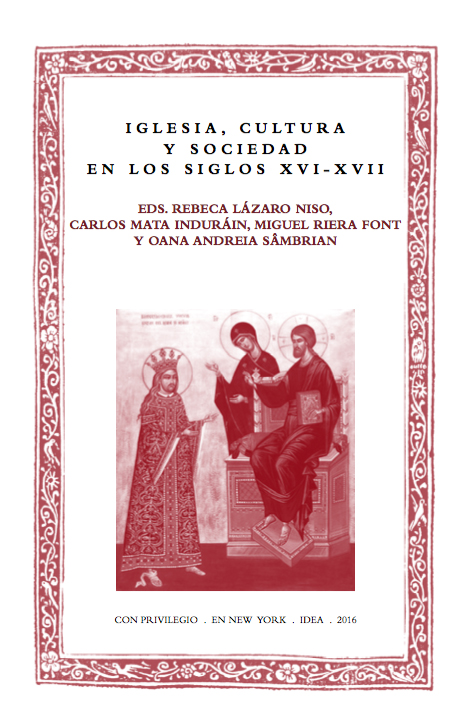 Rebeca Lázaro Niso, Carlos Mata Induráin, Miguel Riera Font and Oana Andreia Sâmbrian (eds.), Iglesia, cultura y sociedad en los siglos XVI-XVII, New York, IDEA, 2016.
Rebeca Lázaro Niso, Carlos Mata Induráin, Miguel Riera Font and Oana Andreia Sâmbrian (eds.), Iglesia, cultura y sociedad en los siglos XVI-XVII, New York, IDEA, 2016.
ISBN: 978-1-938795-11-4
The present Issue compiles a series of works that, with approach multidisciplinary , address the relationship between Church, culture and society in the 16th and 17th centuries. The topics range from philological and historical to theological and philosophical perspectives, all of which apply their specific method of analysis to the works of the Spanish Golden Age (with extension, in some cases, to Romanian culture), thus highlighting the multitude of perspectives from which this period can be thought and (re)interpreted.
Rebeca Lázaro Niso is a lecturer at the University of La Rioja and a researcher at group BITAE at the same university.
Carlos Mata Induráin is researcher and Secretary of group of research Siglo de Oro (GRISO) of the University of Navarra.
Miguel Riera Font is researcher of the University of the Balearic Islands (scholarship pre-doctoral of the Balearic community financed with FEDER funds).
Oana Andreia Sâmbrian is a senior researcher at the Romanian Academy. specialization program Her research interests are programs of study cultural and Romanian-Spanish relations.
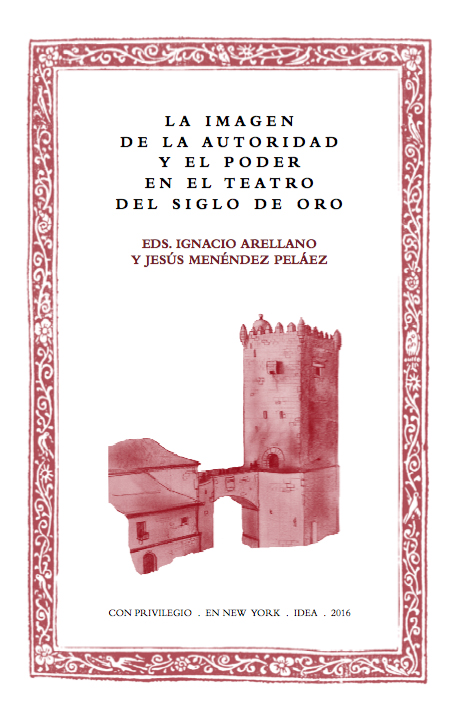 Ignacio Arellano and Jesús Menéndez Peláez (eds.), La imagen de la autoridad y el poder en el teatro del Siglo de Oro, New York, IDEA, 2016.
Ignacio Arellano and Jesús Menéndez Peláez (eds.), La imagen de la autoridad y el poder en el teatro del Siglo de Oro, New York, IDEA, 2016.
ISBN: 978-1-938795-24-4
Authority and power are universally valid themes, in all spheres, in all dimensions, and constitute an endless field of analysis. The Golden Age is, moreover, a privileged period, rich in reflections on power, from treatises on the art of good government to theological works; from political satire to the complex propaganda (not at all mechanical, despite the well-known theory of a scholar like Maravall) developed by the theatre. In the present pages, the reader will find a handful of enquiries that cover some of the infinite possible fields: conflicts between love, duty and power applied to a historical protagonist whose circumstances are subjected to the power of legend and artistic creation; the propagandistic power of theatre; the image of military power in the works of a playwright as universal as Calderón; models from the Bible transferred to the figures of power in theatre; analysis of specific plays that materialise different types of powerful and varied power conflicts...
Ignacio Arellano is Full Professor of the University of Navarra, specialist in literature of the Golden Age. He has published some one hundred and fifty books and nearly four hundred articles in specialized journals. He is also the author of the blog El jardín de los clásicos.
Jesús Menéndez Peláez has been Full Professor of Spanish literature and Dean of the School of Philosophy and Letters of the University of Oviedo. In his long career as professor and as researcher he has participated in multiple projects of research, and published numerous works on Spanish literature from the Age average to the eighteenth century.
|
Table of contents |
Page |
|
9 |
|
|
IGNACIO ARELLANO |
11 |
|
JULIÁN GONZÁLEZ BARRERA |
29 |
|
A. ROBERT LAUER |
43 |
|
JESÚS MENÉNDEZ PELÁEZ |
59 |
|
ENRIQUE RULL |
87 |
|
OANA ANDREIA SAMBRIAN |
99 |
|
SARA SANTA AGUILAR |
115 |
|
ANA SUÁREZ MIRAMÓN |
135 |
|
151 |
|
|
GERMÁN VEGA GARCÍA-LUENGOS |
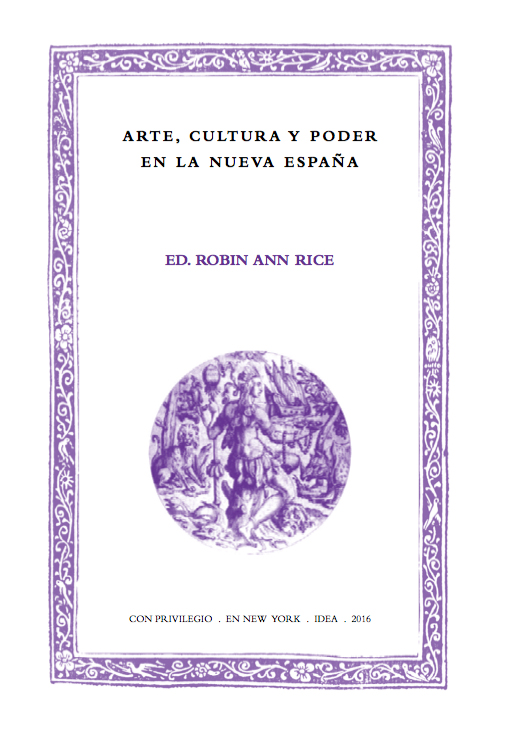 Robin Ann Rice (ed.), Art, Culture and Power in New Spain, New York, IDEA, 2016.
Robin Ann Rice (ed.), Art, Culture and Power in New Spain, New York, IDEA, 2016.
ISBN: 978-1-938795-21-3
This Issue gathers different chapters by specialists and their approaches to New Spain's culture. For this reason its degree scroll, Art, culture and power in New Spain, is indicative of the interdisciplinary approach of the whole. The book, with innovative research, is divided into three parts: "Society and the exercise of power", "design urban and human spaces" and "The invention of the novo-Hispanic subject: speech and collective imaginary".
Robin Ann Rice is a full-time professor and researcher at the Universidad Popular Autónoma del Estado de Puebla (UPAEP). A member of the National System of Researchers (SNI), she holds a PhD in Hispanic Philology from the University of Navarra. Her previous programs of study is from the area of Comparative Literature. She is the author of books and articles on Sor Juana Inés de la Cruz, Isabel de la Encarnación, Vélez de Guevara, Lope de Vega, María de Zayas, Mariana de Carvajal and Miguel de Cervantes, among others.
|
Table of contents |
Page |
|
9 |
PART ONE: "SOCIETY AND THE EXERCISE OF POWER".
|
|
Page |
|
FRANCISCO JAVIER PIZARRO GÓMEZ |
15 |
|
JORGE MEDINA DELGADILLO |
29 |
|
CELIA SALAZAR EXAIRE |
53 |
|
JUAN PABLO SALAZAR ANDREU |
71 |
|
MANUEL LÓPEZ FORJAS |
93 |
PART TWO: "DESIGN URBAN AND HUMAN SPACES".
|
|
Page |
|
JUAN MANUEL MÁRQUEZ MURAD |
119 |
|
CARLOS ARTURO GIORDANO SANCHEZ VERIN |
157 |
|
MARÍA PÍA BENÍTEZ UNÁNUE |
173 |
|
VERÓNICA LORENA OROZCO VELÁZQUEZ |
189 |
PART THREE: "THE INVENTION OF THE NOVO-HISPANIC SUBJECT: SPEECH AND COLLECTIVE IMAGINARY".
Felix K. E. Schmelzer, The rhetoric of knowledge: the prologue to mathematical treatises in language Spanish (1515-1600), New York, IDEA, 2016.
ISBN: 978-1-938795-13-8
The Spanish Renaissance conceived rhetoric as an all-encompassing link between all the arts and sciences, a true regina artium. According to agreement with this idea, the scientific authors of that time consciously used rhetoric to link the specific knowledge of their discipline with the general categories of culture and Public discourse. This book analyses this process of mediation through a corpus of 24 prologues to mathematical treatises in Spanish language , texts which are included in the second part of the book.Felix K. E. Schmelzer, magister artium in Philology Spanish, French and English (University of Münster, Germany) and PhD in Hispanic Literature and Literary Theory (University of Navarra, Spain), is an academic at the Universidad de los Andes (Chile) and an associate member of the group de research Siglo de Oro (GRISO) at the University of Navarra. His topics of research include rhetoric and the history of science.
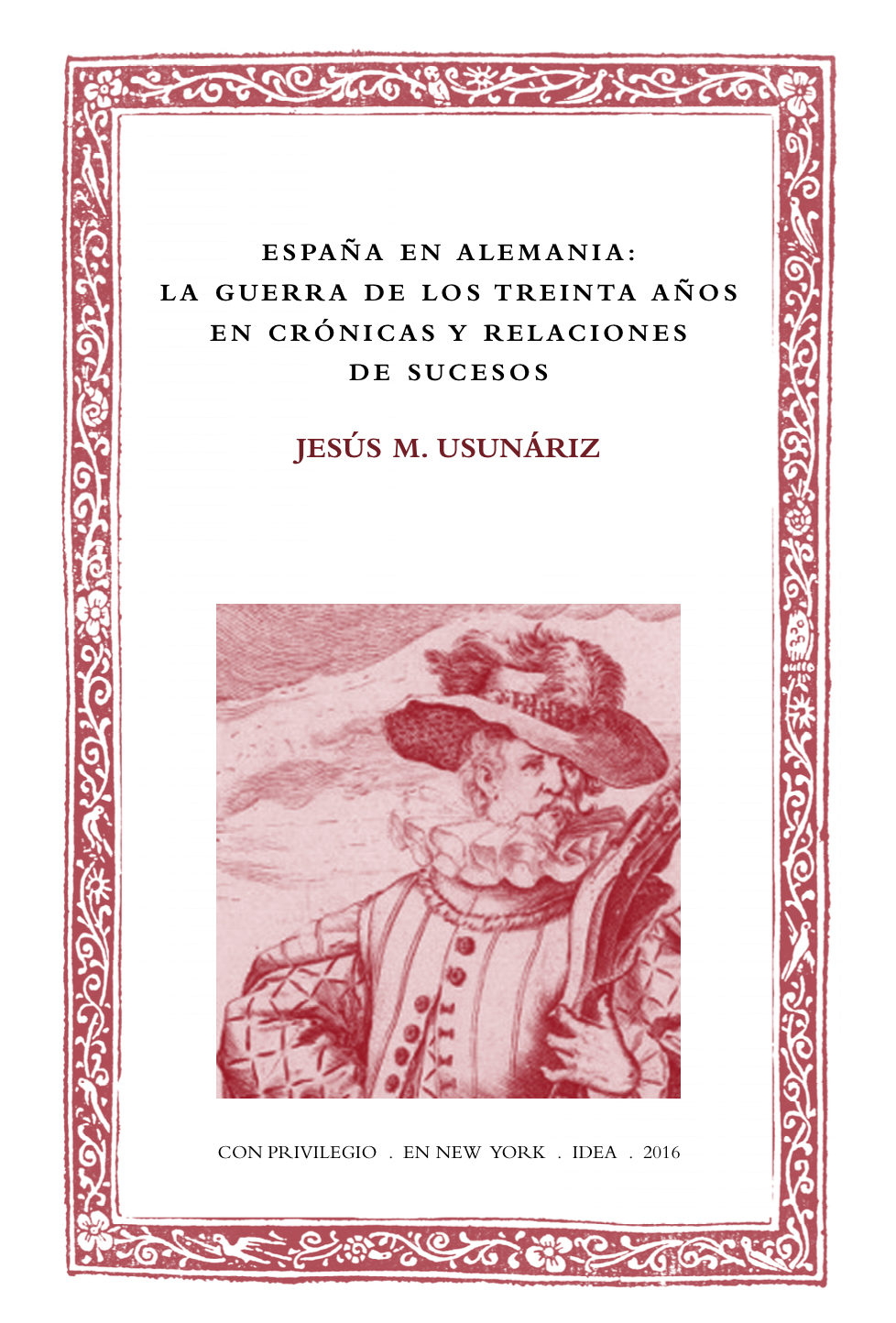
Jesús M. Usunáriz, España en Alemania: la guerra de los Treinta Años en las crónicas y relaciones de sucesos, New York, IDEA, 2016.
ISBN: 978-1-938795-22-0
The Thirty Years' War was an international conflict in which Spain played a very important role, which has not always been highlighted. This is reflected in the numerous historical chronicles, accounts of events and literary works that, in print or in manuscript, dealt with the vicissitudes of that cruel confrontation. These texts not only described certain events, more or less heroic, more or less surprising, but also reflected the political ideas, religious sentiments and diplomatic attitudes of the protagonists and the actors involved. From the defenestration of Prague (1618) to the signature of the Peace of the Pyrenees (1659), the authors of such writings were busy narrating battles, describing heroes and traitors, telling us about miracles and astrological phenomena that seemed to influence the destiny of men, while at the same time they stopped to recount the endless negotiations that sought the longed-for peace in the midst of a Europe plunged into a war that seemed to have no end.
Jesús M. Usunáriz is Senior Associate Professor of Modern History and member of group of research Siglo de Oro (GRISO) of the University of Navarra. Among other books, he is the author of España y sus tratados internacionales (1516-1700) (2006), and publisher of works such as Poderes y autoridades en el Siglo de Oro: realidad y representación (2012) (with António Apolinário Lourenço), Del poder y sus críticos en el mundo ibérico del Siglo de Oro (2013) ( with Ignacio Arellano and Antonio Feros) or La autoridad política y el poder de las letras en el Siglo de Oro ( 2013) (with Edward Williamson). His research focuses on the study of social history and cultural changes in Golden Age Spain.
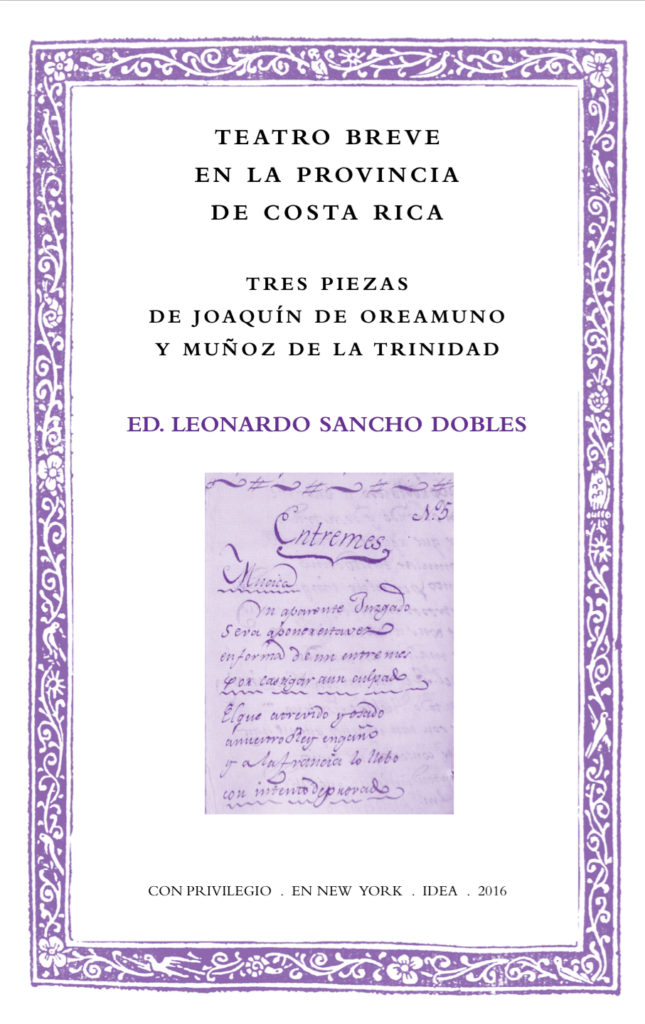
Short plays in the province of Costa Rica. Three plays by Joaquín de Oreamuno y Muñoz de la Trinidad, ed. Leonardo Sancho Dobles, ed. Leonardo Sancho Dobles, New York, IDEA, 2016.
ISBN: 978-1-938795-20-6
In the province of Costa Rica, three short plays written by Joaquín de Oreamuno y Muñoz de la Trinidad were staged in January 1809. In colonial geography, the province belonged to the Old Kingdom of Guatemala and the representation was part of a series of shows of loyalty to the Spanish monarchy. The three pieces respond in good measure to the aurisecular aesthetics and show a careful handling of style and spectacular elements. The present Issue makes available to the public these short plays, written at the end of the colonial period, which show that the canon of the Golden Age theater had also reached the farthest province of the Old Kingdom of Guatemala.
Leonardo Sancho Dobles is high school program and graduate in Philology Spanish and Magister Litterarum in Latin American Literature from the University of Costa Rica and PhD in Hispanic Literature and Literary Theory from the University of Navarra. He is currently a professor Full Professor of the School of programs of study General and the Program of postgraduate program in Literature at the University of Costa Rica.
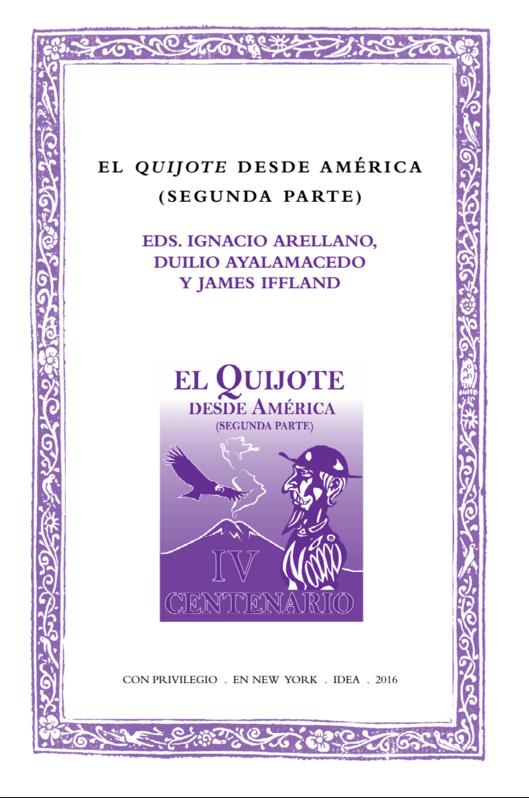 Ignacio Arellano, Duilio Ayalamacedo and James Iffland (eds.), El Quijote desde América (Segunda parte), New York, IDEA, 2016.
Ignacio Arellano, Duilio Ayalamacedo and James Iffland (eds.), El Quijote desde América (Segunda parte), New York, IDEA, 2016.
ISBN: 978-1-938795-14-5
Don Quixote from America (Part Two) is a tribute to the Quixote of 1615 by a group of distinguished specialists from both sides of the Atlantic. It is a way of recognising, and celebrating, the immediate arrival of Cervantes' masterpiece in America and its subsequent profound impact on many important aspects of its culture. The works focus either on the themes and episodes of the Second Part of Don Quixote or on the traces of the work in various spheres of literary and artistic production on the American continent.
Ignacio Arellano is Full Professor of the University of Navarra, specialist in literature of the Golden Age. He has published some one hundred and fifty books and nearly four hundred articles in specialized journals. He is also the author of the blog El jardín de los clásicos.
Duilio Ayalamacedo teaches courses at specialization program programs of study transatlantics (16th, 17th and 18th centuries). He has published A esta hora and Moradas.
James Iffland has taught Spanish and Latin American literature at Boston University since 1974. He is the author of Quevedo and the Grotesque, De fiestas y aguafiestas: risa, locura e ideología en Cervantes y Avellaneda, among other titles; and co-editor of El "Quijote" desde América. He is also publisher Associate Editor of Cervantes: The Bulletin of the Cervantes Society of America.
Fernando Rodríguez-Gallego and Alejandra Ulla Lorenzo, Un fondo desconocido de comedias españolas impresas conservado en la Library Services Pública de Évora (con estudio detallado de las de Calderón de la Barca), New York, IDEA, 2016.
ISBN: 978-1- 938795-17- 6
This Issue presents the collection of ninety-three Spanish comedias sueltas preserved in the Library Services Pública de Évora. In addition to the bibliographic description of each of these editions, the possible origins of the collection currently preserved in Évora have been studied, as well as its bibliographic value, which has made it possible to identify the unique or rare comedies. Among them, six previously unknown editions by Calderón have been located, which have also been examined from the point of view of their textual relevance.
Fernando Rodríguez-Gallego holds a PhD in Philology Hispánica from the Universidade de Santiagode Compostela (2009), and is currently working at the Université de Neuchâtel. His main interests are Spanish literature of the Golden Age, in particular its theatre, as well as the edition of texts.
Alejandra Ulla Lorenzo works as a postdoctoral researcher at University College Dublin. In 2011 she received her PhD from the Universidade de Santiago de Compostela with a thesis entitled El mayor encanto, amor de Calderón, fiesta cortesana. Study and edition. Her main lines of research are the theatre of the Golden Age and its relationship with the history of the book.
Ignacio Arellano, José María Díez Borque and Gonzalo Santonja, Espejo de ilusiones (Homenaje de Valle Inclán a Cervantes), New York, IDEA, 2016.
ISBN: 978-1-938795-18-3
This Issue, in addition to the general presentation by José María Díez Borque and the two works on scenic comedy in Cervantes' theater (Ignacio Arellano) and the gaze with which Valle Inclán observes Cervantes (Gonzalo Santonja), includes a careful facsimile of the Valleinclanesque edition of the entremés of La guarda cuidadosa, a particular tribute from the creator of the esperpentos to the founder of literary modernity on the occasion of the III Centenary of the publication of Don Quixote, after the publication of Ocho comedias y ocho entremeses nuevos (Eight comedies and eight new hors d'oeuvres) had just expired without pain or glory. Homage of writer and publisher concreted in an entremés, a gesture that goes far beyond the mere chronological circumstances, as if Valle had joined two commemorations in one.
Ignacio Arellano is Full Professor of the University of Navarra, specialist in literature of the Golden Age. He has published some one hundred and fifty books and nearly four hundred articles in specialized journals. He is also the author of the blog El jardín de los clásicos.
Gonzalo Santonja is Full Professor of the Complutense University of Madrid and director of high school Spanish y Leonés de la language. For his numerous books and articles he has been awarded, among others, the award Nacional de Literatura (essay) and the award Castilla y León de las Letras.
José María Díez Borque is Full Professor of Spanish literature at the Complutense University of Madrid. He is the author of numerous editions and critical monographs on authors of the Golden Age. He is part of the committee of many specialized magazines and has been curator of important exhibitions.
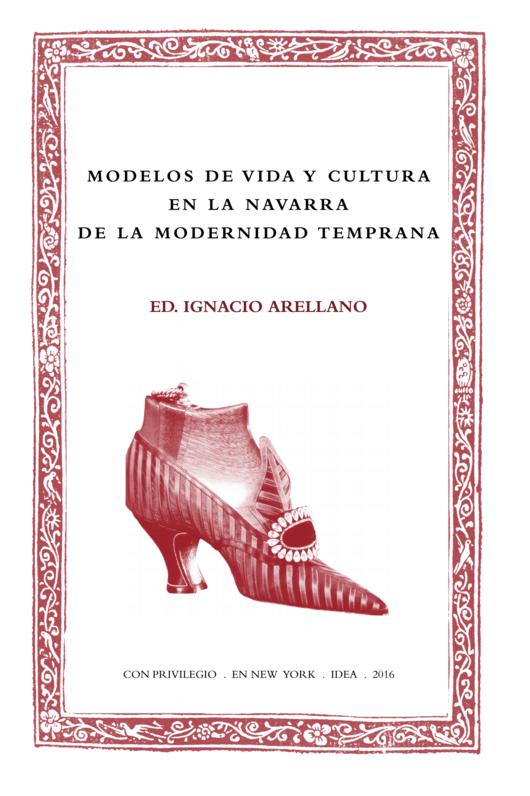 Ignacio Arellano (ed.), Modelos de vida y cultura en la Navarra de la modernidad temprana, New York, IDEA, 2016. ISBN: 978-1-938795-15-2
Ignacio Arellano (ed.), Modelos de vida y cultura en la Navarra de la modernidad temprana, New York, IDEA, 2016. ISBN: 978-1-938795-15-2
This Issue, which focuses on some models of life in the Navarre of "early modernity", constitutes a partial node in a wider network of research being developed by the GRISO (group de research Siglo de Oro) of the University of Navarra, from an interdisciplinary point of view, to analyze in their historical and cultural environment some notable Navarrese figures, representatives of certain "models of life", such as the saint, the adventurer, the intellectual, the writer, the member of the clergy or the poet, tracing also certain coordinates of the professional (midwives), social and political (manorial regime, structure of the insults....) or literary. Although the scope is regional (Navarre) the entity of many of these figures or the representativeness of other aspects of social life confer to these approaches -we believe- wider values than those of a costumbrist or local inquiry.
Ignacio Arellano is Full Professor of the University of Navarra, specialist in literature of the Golden Age. He has published some one hundred and fifty books and nearly four hundred articles in specialized journals. He is also the author of the blog El jardín de los clásicos.
|
Table of contents |
Page |
|
IGNACIO ARELLANO Preface |
9 |
|
IGNACIO ARELLANO Life and Adventures of St. Francis Xavier. Free Adaptation of Teixeira, Valignano and Others |
11 |
|
IGNACIO ARELLANO model intellectual and religious: Fray Pedro Malón de Echaide and his Conversion of La Madalena |
49 |
|
CARLOS MATA INDURÁIN Literary Models in Early Modern Navarre (16th-17th centuries) |
117 |
|
CRISTINA TABERNERO Social anti-models and insults in Navarre in the Golden Age: from knaves to rogues |
251 |
|
JESÚS M. USUNÁRIZ "They will tell me when they pay". Cascante: a town degree scroll (1633) for a divided society |
281 |
|
JESÚS M. USUNÁRIZ "Kill that traitor, kill him! Fitero and its seigniorial regime in the Modern Age |
299 |
|
JESÚS M. USUNÁRIZ The "official document de comadres" and the "arte de partear". Some notes on Navarre: 16th-18th centuries. |
319 |
|
JESÚS M. USUNÁRIZ "Agur. Acaso, hasta el cielo": letters of Basque-Navarrese emigrants in the Indies and their ties with home (18th century) |
365 |
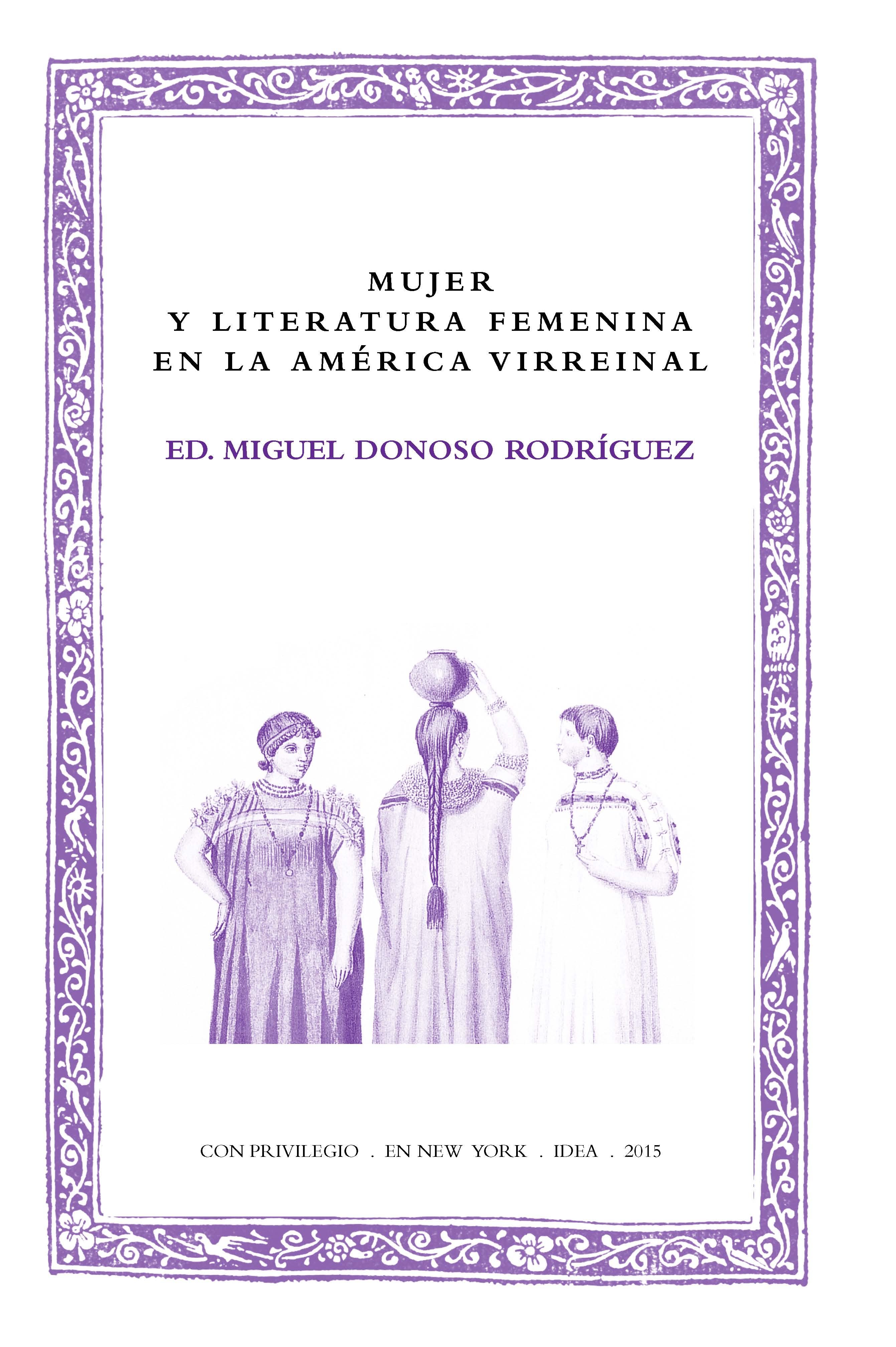 Miguel Donoso Rodríguez (ed.), Mujer y literatura femenina en la América virreinal, New York, IDEA, 2015. ISBN: 978-1-938795-08-4.
Miguel Donoso Rodríguez (ed.), Mujer y literatura femenina en la América virreinal, New York, IDEA, 2015. ISBN: 978-1-938795-08-4.
This book offers the reader a series of works dedicated to women of viceregal America, women who were writers or protagonists of relevant events in the conquest of various territories in the region. In addition to the programs of study dedicated to the summits of colonial letters such as Sor Juana Inés de la Cruz, we find in these pages others that focus on figures such as Inés Suárez, la Malinche, Doña Mencía de los Nidos and Doña Mencía Calderón de Sanabria; on ordinary New Spain women such as Teresa Villasana and María Maturana; on nuns such as Josefa Azaña y Llano and Úrsula Suárez, or even on anti-heroines such as Catalina de los Ríos Lisperguer -la Quintrala-, among others.
Miguel Donoso Rodríguez, PhD in Philology , is an academic at the Universidad de los Andes (Chile) and an associate member of group de research Siglo de Oro (GRISO) at the University of Navarra. He has published works on the Spanish picaresque novel (edition of Alonso, mozo de muchos amos, by Jerónimo de Alcalá Yáñez); on the Spanish satirical and costumbrista novel (edition of Periquillo el de las gallineras, by Francisco Santos) and another on the chronicles of the Indies (edition of Historia de todas las cosas que han acaecido en el Reino de Chile, by Alonso de Góngora Marmolejo). He is currently preparing a critical edition of the text Desengaño y reparo de la guerra del Reino de Chile ( 1614), by Alonso González de Nájera.
The publication of this book is part of the activities of project programs of study Indianos (PEI).
|
|
Page |
|
MIGUEL DONOSO |
11 |
Heroines and Anti-heroines in the Indies
Novo-Hispanic Literature: From Sor Juana to Fernandez de Lizardi
|
|
Page |
|
JUVENTINA SALGADO ROMÁN |
143 |
|
MARIBEL ESPINOSA GONZÁLEZ |
155 |
|
SOFÍA MIRANDA VALDEBENITO |
169 |
|
LEONARDO SANCHO DOBLES |
177 |
|
MARIELA INSÚA |
191 |
Conventual Women's Literature
|
|
Page |
|
SILVIA GUADALUPE ALARCÓN SÁNCHEZ |
207 |
|
MARTINA VINATEA RECOBA |
219 |
|
CATHERINE E. BURDICK |
233 |
|
MIGUEL DONOSO RODRÍGUEZ |
247 |
Women and Women's Literature, from America to Europe
|
|
Page |
|
DAVID GARCÍA HERNÁN |
263 |
|
MIGUEL FERNANDO GÓMEZ VOZMEDIANO |
283 |
|
JAVIERA LORENZINI R. |
311 |
|
BRAULIO FERNÁNDEZ BIGGS |
327 |
|
MARIA QUIROZ TAUB |
343 |
Alessandro Martinengo, Al margen de Quevedo. Paisajes naturales. Textual landscapes, New York, IDEA, 2015. ISBN: 978-1-938795-10-7.
This book aims to demonstrate how - starting from little studied documents concerning Quevedo, for example, the Letter-Brief of Pope Urban VIII (1625) or from apparently marginal works, such as the Judgement that the writer placed before the History of the unhappy prosperity of Felipa de Catánea, translated from the French by Juan Pablo Mártir Rizo (1625) - we achieve not only a new perspective on the vicissitudes of his mature period, but also a true specimen of his writing techniques.
Alessandro Martinengo has been Senior Associate Professor of Spanish-American Literature at the University of Pisa (1958-1963) and of Spanish Literature at the University of Trieste (1963-1969), and then Full Professor of Spanish Literature (1969-2003) at the University of Pisa. His publications deal with Spanish Romanticism - he has edited the edition of Espronceda's Poesías (1840), Barcelona, Octaedro, 2004 -, the literature of the geographical discoveries and the Spanish Baroque with several books dedicated to Quevedo, the last one entitled Quevedo, fronteras de la Philology. Con una mirada hacia Gracián (Pamplona, Eunsa, 2006).
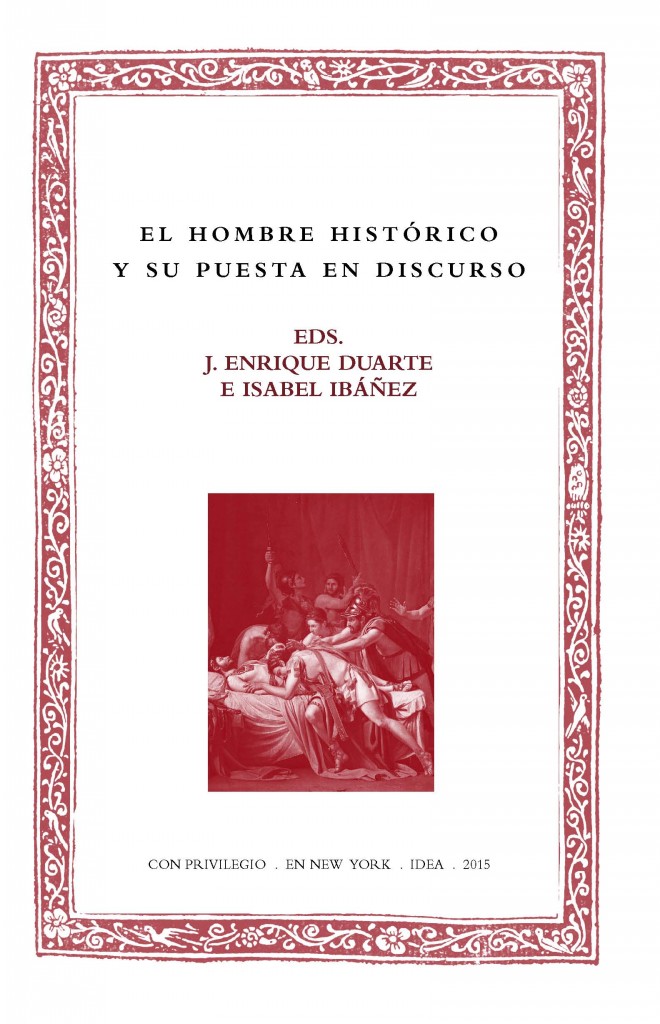 J. Enrique Duarte and Isabel Ibáñez (eds.), El hombre histórico y su puesta en speech en el Siglo de Oro, New York, IDEA, 2015. ISBN: 978-1-938795-07-7.
J. Enrique Duarte and Isabel Ibáñez (eds.), El hombre histórico y su puesta en speech en el Siglo de Oro, New York, IDEA, 2015. ISBN: 978-1-938795-07-7.
The relationship established between history, the historical, the historical character and literature in its different forms is one of the most treated and fruitful elements since the beginnings of criticism and which has not yet been exhausted, as test this book shows. The authors of these works have reflected on how the writers of the Golden Age were able to somatise the historical elements that form part of the historical character into operative literary elements in the context of a work that are inserted into a baroque aesthetic, studying the way in which it is integrated into the literary part of the character.
J. Enrique Duarte is graduate and holds a PhD in Philology Hispánica from the University of Navarra. He was hired by the GRISO in 1998 and since then he has been working on research on various authors: Pedro Calderón de la Barca, Francisco de Quevedo, Tirso de Molina and Francisco Antonio de Bances Candamo. He has mainly focused his interest on the theatre of the Golden Age, publishing several articles and editions of comedies and autos sacramentales. He currently combines his work at research with the coordination of the magazine La Perinola (ISSN: 1138-6363) as secretary. He is also in charge, also as secretary, of the Anejos de la revista La Perinola.
Isabel Ibáñez holds a PhD and HDR (habilitated to conduct research) in Études Ibériques (Philology Hispánica) from the Université de Pau (France). She works as Professeur d'Université (Professor) at the Université de Pau after having worked there first as PRAG (Catedrática de high school Titular de Universidad) from 1992 and then as Maître de Conférences (Titular de Universidad) from 1998 to 2006. Since her thesis , defended in 1997 and dedicated to Tirso de Molina's La santa Juana, she has focused her research on aurisecular theatre, especially that of Tirso de Molina, and on hagiographic comedy. Currently, in addition to his work at professor and research , he holds various administrative positions related to teaching and research at his university and at the national level within professional organisations (SHF).
Juan Manuel Gauger, Jesuit Authority and Universal Knowledge. La polémica cometaria entre Carlos de Sigüenza y Góngora y Eusebio Francisco Kino, New York, IDEA, 2015. ISBN: 978-1-938795-05-3.
Jesuit authority and universal knowledgeisa new approach to the astronomical and philosophical Libra of Carlos de Sigüenza y Góngora in the context of the polemic with Eusebio Francisco Kino and his astronomicalexhibition of the comet. In addition to situating both cometary treatises in the European and colonial astronomical tradition of the period, we study the main sources of the exhibitionto show that Kino, rather than refuting Sigüenza, was reproducing the arguments that two Bavarian colleagues had formulated to refute the hypothesis that comets were not involved in human misfortunes. Obsessed with asserting his American status, it was the Creole who found in the European missionary an ideal adversary with whom to compete intellectually. The greatest contribution of this study, however, lies not only in reinterpreting Kino's motivations and exposing Sigüenza's biased reading. By examining the bibliography of these treatises, the author proposes that the actors in the quarrel abused the argument of authority in order to affiliate themselves with the intellectual tradition of the Society of Jesus.
Juan Manuel Gauger is high school program at Humanities and graduate in Linguistics and Literature, with accredited specialization in Hispanic Literature, from the School de Letras y Ciencias Humanas of the Pontificia Universidad Católica del Perú. She holds a Master's degree in Hispanic American Literature from the same university programs of study. His interests include the colonial Novo-Hispanic speech , in particular the works of Sor Juana Inés de la Cruz and Carlos de Sigüenza y Góngora, as well as the Iberian and American religious manifestations of the 16th and 17th centuries. He currently directs the group of research on colonial mysticism at project programs of study Indianos of the Universidad del Pacífico.
María Fernández López (Marcia Belisarda), Obra poética completa, ed. Martina Vinatea Recoba, New York, IDEA, 2015. ISBN: 978-1-938795-03-9.
A manuscript, a pseudonym, a nun's name and a convent were the keys with which Martina Vinatea deciphered the enigma of Marcia Belisarda. For the first time, her Obra poética completa ( 1640) has been published, based on the manuscript preserved at the Library Services Nacional de España. Starting with the text itself, which always provides reliable and reliable information, and with the help of history and research in archives, where there is more information than one might imagine, Vinatea identifies Marcia Belisarda: María Fernández López was her name in the century; and María de Santa Isabel, in the convent of the Comendadoras de Santiago de Toledo. This book consists of two main parts: a preliminary study that provides a literary-historical approach to the text and the author's biography; and a second part that presents the complete annotated poetic oeuvre. Much of the poetry of the women writers of the Golden Age circulated in manuscript among a small and select group readership. Today the "Batihoja" collection of high school of programs of study Auriseculares brings back to Hispanic literature a voice B of 17th century convent poetry by women.
Martina Vinatea Recoba, PhD in Hispanic Philology , is a senior lecturer at the Universidad del Pacífico (Lima, Peru) and co-director of the Centro de programs of study Indianos/project programs of study Indianos of the University of Navarra and the Universidad del Pacífico. Her recent work has focused on Hispanic and colonial Peruvian conventual women's poetry (edition of the Epistola de Amarilis a Belardo de Amarilis); and on the works of the poets of the Academia Antártica.
Ricardo Fernández Gracia, La buena report del obispo Palafox y su obra en Puebla, New York, IDEA, 2014. ISBN: 978-1-938795-00-8.
This study focuses on the unpublished declarations made by leading figures in the city of Puebla in 1648, on the eve of Palafox's departure for the peninsula, at the same time as the bishop was drawing up his instructions for the government of the diocese. The documentation analysed here forms part of Palafox's private file which he passed on to his descendants, the Marquises of Ariza. They are opinions that praise the works of the bishop-viceroy, from different points of view, and are elaborated through answers to a common questionnaire . Hence the use of the expression de buena report as the title of this monograph. In addition to the full transcription of the declarations, we study the context of the document and the witnesses. We have grouped their testimonies by subject in two chapters, the third and fourth, adding another chapter at the end, related to the image of the prelate in the painting of the time, which perfectly complements what was written by these men in the mid-17th century.
Ricardo Fernández Gracia is Senior Associate Professor of Art History at the University of Navarra, a corresponding member of the Royal Academy of History, a member of the Navarre committee of Culture and holder of the Grand Cross of the Civil Order of Alfonso X Wise. He has been director of the department of Art and is currently director of the Chair of Heritage and Navarrese Art at the University of Navarra. His research focuses mainly on three areas: iconography, promotion of the arts and artistic heritage of Navarre. He has directed six doctoral thesis and several research projects, has published numerous monographs and articles, and has curated eight exhibitions, among them El virrey Palafox, Vicente Berdusán, Juan de Goyeneche, San Francisco Javier en las artes, Belenes Históricos en Navarra (Historical Nativity Scenes in Navarre) and San Saturnino en el IV Centenario del voto de la ciudad de Pamplona (Saint Saturnino in the IV Centenary of the Vow of the City of Pamplona). He has coordinated four research projects and three books on the bishop-virrey Juan de Palafox, curated two exhibitions and is the author of eight monographs and twenty articles.
Jean Canavaggio, Retornos a Cervantes, New York, IDEA, 2014. ISBN: 978-1-938795-98-5.
Retornos a Cervantes (Returning to Cervantes ) is a collection of nineteen programs of study , essentially written between the beginning of this century and the eve of the successive commemorations that will conclude in 2017 with the fourth centenary of the Persiles. Divided into five sections - Cervantes in his life, The Theatre, The Exemplary Novels, Don Quixote, The Persiles -this collection closes, by way of an epilogue, with an approach to the writer's humanism.
Jean Canavaggio, Full Professor emeritus of the University of Paris Ouest Nanterre, was director of the Casa de Velázquez from 1996 to 2001. His contributions on Cervantes include Cervantes (1987), Cervantes entre vida y creación ( 2000) and Don Quixote del libro al mito(2006). partner of the edition of Don Quixote directed by Francisco Rico, he coordinated a French translation of Cervantes' Works, published in 2001 by the Bibliothèque de la Pléiade.
Fray Pedro Malón de Echaide, La conversión de la Madalena, ed. by Ignacio Arellano, Jordi Aladro and Carlos Mata Induráin, New York, IDEA, 2014. ISBN: 978-1-938795-97-8.
The Augustinian friar Pedro Malón de Echaide is one of our great authors of the 16th century. His work La conversión de la Madalena is not only a paraphrase of the Gospels, but also a rich mosaic which, taking the figure of the Magdalena as the symbol of the penitent, amalgamates the most diverse social, theological, historical and linguistic themes, all perfectly combined by the mentality of an ascetic humanist. The book by the writer from Cascantino brings together the most diverse currents that formed our Renaissance. Indeed, Plato, Plotinus and St. Augustine are perfectly harmonised in the work together with the Italian Neoplatonists, especially Ficino and Pico della Mirandola.
Ignacio Arellano is Full Professor of the University of Navarra, specialist in literature of the Golden Age. He has published some one hundred and fifty books and nearly four hundred articles in specialized journals. He is the author of the blog El jardín de los clásicos.
Jordi Aladro is a professor at the University of California. His main lines of research are religious iconography in the golden centuries, sacred oratory and prose of the 16th and 17th centuries. A specialist in Malón de Echaide, he has devoted several publications to the study of his work.
Carlos Mata Induráin is researcher and Secretary of GRISO (University of Navarra) and Secretary of IDEA. His research focuses on the Spanish Golden Age (Calderón, Cervantes, burlesque comedy, etc.) and on the literary history of Navarre. He maintains the literature blog Ínsula Barañaria.
Amparo Izquierdo Domingo, Los autos sacramentales de Lope de Vega. Dramatic functions, New York, IDEA, 2014. ISBN: 978-1-938795-96-1.
The present edition offers the reader a study on the dramatic functions of Lope de Vega's autos sacramentales with the aim of rescuing from oblivion these works overshadowed by the great work of Lope de Vega. Their scarce knowledge dissemination does not mitigate the need to study them for the evolution of the sacramental genre until its culmination in Calderón de la Barca.
Amparo Izquierdo Domingo, with a degree in Hispanic Philology from the Universitat de València (1990-95), obtained her PhD in 2010 at the UNED (Madrid) with a thesis on the set of Lope de Vega's autos sacramentales, a corpus on which she has focused her research work. In 2013 he published Los autos sacramentales de Lope de Vega: clasificación y funciones dramáticas in the publishing house Academia del Hispanismo.
Alejandra Soria, Retórica sacra en la Nueva España, New York, IDEA, 2014, ISBN: 978-1-938795-95-4.
This Issue makes available to the reader an annotated edition of three Novohispanic sermons on the life and miracles of St. Teresa of Jesus written, preached and printed in New Spain in the first half of the 18th century. The preachers belong to different religious orders: the discalced Carmelite friar Andrés de San Miguel; the Mercedarian friar Juan de Salazar and the Jesuit Nicolás de Segura. An introductory essay accompanies each sermon, outlining the historical context and offering a preliminary analysis of the text. The annotated edition is preceded by a study that includes classical rhetoric, ecclesiastical rhetoric and the new rhetoric of the 20th century.
Alejandra Soria, PhD in programs of study Humanistic, works as a professor of Chair at high school Tecnológico y de programs of study Superiores de Monterrey (ITESM), in Mexico. She has collaborated in several publications on texts found in the important collection of the Library Services Cervantina, which belongs to the aforementioned institution. He has presented several programs of study on Novo-Hispanic sermons at national and international conferences.
Francisco Santos, Periquillo el de las gallineras, ed. by Miguel Donoso Rodríguez, New York, IDEA, 2013, ISBN: 978-1-938795-94-7.
This edition brings the novel Periquillo el de las gallineras (1668), by the Madrid writer Francisco Santos, to the reader for the first time in a carefully edited and annotated text. A cultured and erudite work, which at the same time sample interesting glimpses of popular culture, it is mentioned in numerous anthologies and critical programs of study as an agonistic manifestation of the picaresque novel, which began with Lazarillo de Tormes. Its mixture, moreover, with allegorical and costumbrista elements, as well as its evident didacticism, make this work interesting not only for understanding the process of decadence that the picaresque genre underwent, but also the evolution of a large part of 17th-century peninsular narrative.
Miguel Donoso Rodríguez, PhD in Philology , is an academic at the Universidad de los Andes (Chile) and an associate member of group de research Siglo de Oro (GRISO) at the University of Navarra. His recent work has focused on the picaresque novel (edition of Alonso, mozo de muchos amos, by Jerónimo de Alcalá Yáñez) and the chronicles of the Indies (edition of Historia de todas las cosas que han acaecido en el Reino de Chile, by Alonso de Góngora Marmolejo). He is currently preparing a critical edition of the text Desengaño y reparo de la guerra del Reino de Chile ( 1614), by Alonso González de Nájera.
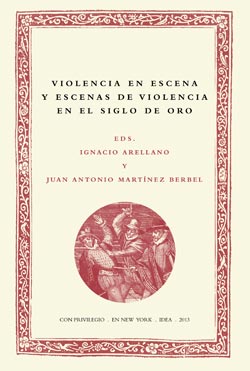 Ignacio Arellano and Juan Antonio Martínez Berbel (eds.), Violencia en escena y escenas de Violencia en el Siglo de Oro, New York, IDEA, 2013. ISBN: 978-1-938795-92-3. Through the contributions of selected specialists, the present Issue intends to approach the dramatic, aesthetic representation of violence, being interested in how the human being tells the violence that surrounds him through his artistic proposal , in this case dramatic, in the Golden Age.
Ignacio Arellano and Juan Antonio Martínez Berbel (eds.), Violencia en escena y escenas de Violencia en el Siglo de Oro, New York, IDEA, 2013. ISBN: 978-1-938795-92-3. Through the contributions of selected specialists, the present Issue intends to approach the dramatic, aesthetic representation of violence, being interested in how the human being tells the violence that surrounds him through his artistic proposal , in this case dramatic, in the Golden Age.
Ignacio Arellano is Full Professor of the University of Navarra, specialist in literature of the Golden Age. He has published some one hundred and fifty books and nearly four hundred articles in specialized journals. He is also the author of the blog El jardín de los clásicos.
Juan Antonio Martínez Berbel is a lecturer at the University of La Rioja and an expert in golden theatre.
Pedro Calderón de la Barca, Cephalus and Pocris, introd. Enrica Cancelliere, ed. Ignacio Arellano, New York, IDEA, 2013. ISBN: 978-1-938795-93-0
The universal genius of Calderón de la Barca was not only interested in the field of tragedy or the fables of great spectacle and the auto sacramental. Although less studied, his comic work is no less important. Among all his comedies of humour, the burlesque and nonsensical Céfalo y Pocris stands out, an astonishing grotesque parody that constitutes a veritable encyclopaedia of the aurisecular mechanisms of laughter and an unsurpassable example of Calderón's wit.
This edition has been prepared by Ignacio Arellano, Full Professor of the University of Navarra, author of numerous works on Calderón and the literature of the Golden Age, director of group of research Siglo de Oro of the same University (GRISO) and founder of the magazine yearbook calderoniano.
The introduction, which outlines the main lines of the comedy, is by Enrica Cancelliere, professor at the University of Palermo, a leading authority on Góngora's poetry and the theatre of the Golden Age, among other areas of her interdisciplinary research , especially attentive to the relationship between the literary and the visual. Professor Cancelliere is one of the most internationally renowned specialists in Calderón's work and her study offers the fundamental keys to the reading of Cephalus and Pocris, surely the best comedy of its genre.
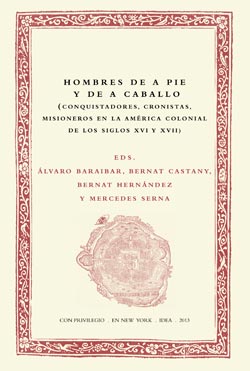 Álvaro Baraibar, Bernat Castany, Bernat Hernández and Mercedes Serna (eds.), Hombres de a pie y de a caballo: conquistadores, cronistas, misioneros en la América colonial de los siglos XVI y XVII, New York, IDEA, 2013. ISBN: 978-1-938795-91-6
Álvaro Baraibar, Bernat Castany, Bernat Hernández and Mercedes Serna (eds.), Hombres de a pie y de a caballo: conquistadores, cronistas, misioneros en la América colonial de los siglos XVI y XVII, New York, IDEA, 2013. ISBN: 978-1-938795-91-6
The present Issue brings together the contributions of specialists from different humanistic disciplines and from different countries and universities around the world, with the aim of deepening a better knowledge of colonial America. This interdisciplinary perspective continues to be crucial when analyzing and unraveling the discourses traced by the protagonists of the process of finding and conquest of the New World. The book presents a total of 16 papers that attempt to give an account of some of the multiple approaches from which the analysis of the Chronicles of the Indies can be approached, an important corpus of colonial literature in which there are still many worlds to be discovered.
Álvaro Baraibar is researcher I1 of the GRISO of the University of Navarra. Among other works, he is publisher of the Sumario de Gonzalo Fernández de Oviedo and the Relación de la workshop de Omagua y El Dorado de Pedrarias de Almesto.
Bernat Castany is Professor of Spanish-American Literature at the University of Barcelona and has published several works related to colonial literature, in general, and the Chronicles of the Indies, in particular.
Bernat Hernández is Senior Associate Professor of Modern History at the Autonomous University of Barcelona. He works, among other topics, on the history of colonial America.
Mercedes Serna is Professor of Spanish-American Literature at the University of Barcelona. She is the author of an edition of the Comentarios reales by Inca Garcilaso de la Vega (Castalia), a critical anthology of Crónicas de Indias (Chair) and the anthology La conquista del Nuevo Mundo: textos y documentos de la aventura americana (Castalia).
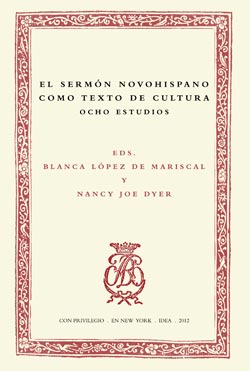 Blanca López de Mariscal and Nancy Joe Dyer (eds.), El sermón novohispano como texto de cultura. Eight programs of study, New York, IDEA, 2012. ISBN: 978-1-938795-90-9
Blanca López de Mariscal and Nancy Joe Dyer (eds.), El sermón novohispano como texto de cultura. Eight programs of study, New York, IDEA, 2012. ISBN: 978-1-938795-90-9
This book is the result of a project of research supported by funding from Texas A&M University (TAMU) in the United States and the committee National Council for Science and Technology (CONACYT) in Mexico. It has involved two teams of researchers, one from TAMU led by Nancy Joe Dyer and the other by Blanca López de Mariscal from Tecnológico de Monterrey in Mexico. Both institutions have libraries that house extraordinary collections of old and rare books: the Library Services Cushing and the Library Services Cervantina. The sermon collections of these universities are of special interest because through them we can highlight the importance of these oratory pieces as a 'text of culture', and analyse their content as a historical document. In them we discover part of the religious values, customs and life practices of the Novo-Hispanic people.
Blanca López de Mariscal is director of the Master's Programme and doctorate in Humanistic programs of study at the Tecnológico de Monterrey, where she teaches the courses Novo-Hispanic Literature, Literary Theory and Hermeneutics. Her area of specialization program is New Spanish literature with a special emphasis on travel stories to the New World.
Nancy Joe Dyer is professor emerita at Texas A&M University with specialisations in medieval Spanish and Novo-Hispanic literature and linguistics, particularly epic and chronicles. Her interest in the sixteenth-century Franciscan chronicles of New Spain resulted in a critical edition of the Memoriales de Toribio de Benavente published by El high school de México, 1996, result .
|
Index |
Page |
|
Blanca López de Mariscal |
1 |
|
Perla Chinchilla |
17 |
|
Nancy Joe Dyer |
49 |
|
Blanca López de Mariscal |
75 |
|
Adrián Herrera Fuentes |
87 |
|
Alejandra Soria Gutiérrez |
107 |
|
Margarita Fernández de Urquiza |
129 |
|
Aurelio Collado Torres |
139 |
|
Gregory Lee Cuellar |
153 |
Joan Oleza, From Ancient Classical to Modern Classical: Lope de Vega and the New Challenges of Spanish Theatre, New York, IDEA, 2012. ISBN: 978-1-938795-89-3
This book offers the reader for the first time in English some of Joan Oleza's most representative essays on early modern Spanish theatre. Its pages go through the genre system that Lope de Vega puts into play and its evolution over time.They stop especially on one of the most innovative genres, the historical drama of private events. Or they go into the relativistic discourse that supports Lope de Vega's theatre, such as Montaigne's essays, as opposed to the theocentric and substantial thought of the time. Finally, it analyses Lope de Vega's entire theatre as a system in which three different factors interact: genres, schemes and cases. All these essays highlight the new challenges faced by the New Comedy.
Joan Oleza is Professor at the University of Valencia. At present he is the Principal Investigator of different research projects such as the Spanish classical theatrical patrimony: texts and research tools,TC/12, or the Database, plots and texts of Spanish classical theatre project(Artelope). His books include monographs such as La novela del XIX, or Trazas y bazas de la Modernidad; the coordination of collective books such as Teatro y prácticas escénicas, I and II; and edition of classics such as La Regenta and Su único hijo, both of them by Leopoldo Alas, 'Clarín'; Las paredes oyen. La verdad sospechosa by Juan Ruiz de Alarcón; or the Obras Completas by Guillén de Castro.
Pedrarias de Almesto, Relación de la workshop de Omagua y El Dorado, ed. Álvaro Baraibar, New York, IDEA, 2012. ISBN: 978-1-938795-88-6
The present edition makes available to the reader the Relación de la workshop de Omagua y El Dorado written by Pedrarias de Almesto, a first text prepared by this Marañón before the version by his colleague Francisco Vázquez came into his hands. Almesto's manuscript, although known, remained unpublished. It was therefore necessary to undertake the edition that this text deserved, rescuing it from the oblivion into which it had fallen in modern editions on the Marañones. This Relación thus joins an important corpus that recounts the events of a workshop that began as the search for the mythical Dorado and ended with the rebellion and death of Lope de Aguirre.
Álvaro Baraibar, PhD in History, works as researcher at the group de research Siglo de Oro (GRISO) of the University of Navarra and has focused his recent work on the chronicles of the Indies, especially from the 16th century. He has also recently published an edition of the Sumario de la natural historia de las Indias by Gonzalo Fernández de Oviedo and has other works that approach the New World from the perspective of cultural history.
Lavinia Barone, El gracioso en los dramas de Calderón, New York, IDEA, 2012. ISBN: 978-1-938795-85-5'.
This book examines the modes of insertion and the multiple functions that the figure of the donaire plays in Calderón's dramas, where he covers a wide spectrum ranging from provocation to laughter to the adoption of a tragic mask. Calderón's extraordinary dramatic skill is sample in his handling of this figure, which unfolds from conventional features to reach new and paradoxical meanings.
Lavinia Barone wrote her doctoral thesis thesis on the figure of the gracioso in Calderón's dramas or comedias serias serias, under the guidance of Professor Enrica Cancelliere at the University of Palermo. The full version in Italian has been published in the digital collection of the GRISO (University of Navarra). The Batihoja collection now publishes a synthetic and revised version of this work. Lavinia Barone's research also deals with other areas, such as Quevedo's political texts.
Ignacio Arellano, El ingenio de Lope de Vega. Escolios a las "Rimas humanas y divinas del graduate Tomé de Burguillos", New York, IDEA, 2012. ISBN: 978-1-938795-84-8
This book on the Rhymes of Tomé de Burguillos, Lope de Vega's masterpiece, is based on the idea that the true dimension of these poems lies in the wit, and that the first reading technique is what can be called "conceptista", which allows us to grasp the mental and verbal games that form the basis of these Rhymes. The scholia explain and comment on some of the main passages that demonstrate the relevance of this reading subject proposal .
Ignacio Arellano is Full Professor of the University of Navarra, specialist in literature of the Golden Age. He has published some one hundred and fifty books and nearly four hundred articles in specialized journals. He is also the author of the blog El jardín de los clásicos.
Francisco de Quevedo, Spain defended, ed. Victoriano Roncero, New York, IDEA, 2012. ISBN: 978-1-938795-87-9
For the first time the reader has in his hands a complete transcription of Quevedo's Spain Defended, in which the writer defends his homeland from the accusations and slander of European humanists who despised Hispanic culture and history. It is accompanied by a facsimile of the autograph, which allows us to examine the process of writing and correcting the work.
Victoriano Roncero, one of the most internationally renowned Quevedoists, has published numerous programs of study on Quevedo's work. He adds with this Issue, which is complemented by the critical edition included in the series of appendices of the prestigious journal La Perinola of the University of Navarra, one of the fundamental titles for the knowledge of Quevedo's corpus and mentality.

